Forums
- Forums
- Axis And Allies Forum
- General Discussion
- Aviation News
Aviation News
Post a reply
- Go to Previous topic
- Go to Next topic
- Go to Welcome
- Go to Introduce Yourself
- Go to General Discussion
- Go to Screenshots, Images and Videos
- Go to Off topic
- Go to Works in Progress
- Go to Skinning Tips / Tutorials
- Go to Skin Requests
- Go to IJAAF Library
- Go to Luftwaffe Library
- Go to RAF Library
- Go to USAAF / USN Library
- Go to Misc Library
- Go to The Ops Room
- Go to Made in Germany
- Go to Campaigns and Missions
- Go to Works in Progress
- Go to Juri's Air-Raid Shelter
- Go to Campaigns and Missions
- Go to Works in Progress
- Go to Skinpacks
- Go to External Projects Discussion
- Go to Books & Resources
-
 Main AdminTurkey's first domestically manufactured fighter jet, KAAN, successfully completed its maiden flight last Wednesday. After the USA, Russia and China, Turkey became the fourth country to indigenously make fifth generation fighter aircrafts.
Main AdminTurkey's first domestically manufactured fighter jet, KAAN, successfully completed its maiden flight last Wednesday. After the USA, Russia and China, Turkey became the fourth country to indigenously make fifth generation fighter aircrafts.
Turkey's efforts to get a fifth-generation fighter have advanced significantly as a result of the acquisition of S-400 air defense systems from Russia. The country was previously expelled from the US-led F-35 program in 2019.
Turkish Aerospace Industries announced on Wednesday that the first flight of the aircraft, named KAAN, had been completed. Additionally, a video that was posted on social media captured the plane taking off, flying, and landing at Akinci Air Base.
Temel Kotil, CEO of Turkish Aerospace Industries, stated that during the 13-minute flight, the aircraft reached a height of 8,000 feet.
(Photos courtesy of the Turkish Defence Ministry)
A U.S. Navy F/A-18E Super Hornet assigned to Naval Air Station Lemoore, California, takes off from Tyndall Air Force Base, Florida, during Weapons System Evaluation Program-East 24.05, Feb. 14, 2024. WSEPs are formal, two-week evaluation exercises designed to test a squadron’s capabilities to conduct live-fire weapons systems during air-to-air combat training missions. (U.S. Air Force photos by Senior Airman Tiffany Del Oso)

A KC-135 Stratotanker aircraft is flying at Pittsburgh International Airport as part of a local training mission, February 23, 2024. (U.S. Air National Guard photo by Master Sgt. Bryan Hoover)
A Swedish Saab JAS 39 Gripen C takes off for an integrated training sortie at Luleå-Kallax Air Base, Sweden, Feb. 26, 2024. Bomber Task Force operations provide U.S. leaders with strategic options to assure Allies and partners, while deterring potential adversary aggression across the globe. (U.S. Air Force photo by Staff Sgt. Jake Jacobsen)
A U.S. Air Force B-1B Lancer assigned to the 28th Bomb Wing, Ellsworth Air Force Base, South Dakota, takes off at Luleå-Kallax Air Base, Sweden, Feb. 26, 2024, during Bomber Task Force 24-2. These BTF missions are representative of the U.S.' extended deterrent commitment to its Allies and partners and enhance regional security. BTF operations provide U.S. leaders with strategic options to assure Allies and partners, while deterring potential adversary aggression across the globe. (U.S. Air Force photo by Staff Sgt. Jake Jacobsen)
British Royal Marines depart the Wasp class amphibious assault ship USS Bataan in an AgustaWestland AW101 (EH101) Merlin helicopter, Feb. 25, 2024. The Bataan Amphibious Ready Group is transferred under NATO command in the Eastern Mediterranean in order to conduct a series of short notice vigilance activities with elements of time Maritime Command’s Standing NATO Maritime Group 2 and the Turkish Navy. (U.S. Marine Corps photo by Cpl. Michele Clarke)_Merlin_helicopter_Feb._25_2024..jpg?width=1920&height=1080&fit=bounds)
A U.S. Marine Corps KC-130J Super Hercules aircraft, assigned to Marine Aerial Refueler Transport Squadron (VMGR) 252, 2nd Marine Aircraft Wing, taxis on a runway after landing in preparation for Exercise Nordic Response 24 at Andenes, Norway, Feb. 25, 2024. Exercise Nordic Response, formerly known as Cold Response, is a NATO training event conducted every two years to promote military competency in arctic environments and to foster interoperability between the U.S. Marine Corps and allied nations. (U.S. Marine Corps photo by 2nd Lt. Duncan Stoner)_252_2nd_Marine_Aircraft_Wing.jpg?width=1920&height=1080&fit=bounds)
An F-35A Lightning II aircraft with the Wisconsin Air National Guard's 115th Fighter Wing, takes off during a Weapon System Evaluation Program exercise February 15, 2024, at Tyndall Air force Base, Florida. The Combat Archer exercise was a formal evaluation of the unit's ability to conduct air-to-air live fire missions. Airmen were given the opportunity to train on tasks and skills that they don't perform at their home unit such as unrestricted takeoffs and loading live ammunition onto the airframe. (U.S. Air National Guard photo by Staff Sgt. Anya Hanson)
Two FA-50 multirole fighter aircraft with the Philippine Air Force fly alongside A B-52H Stratofortress with the 23rd Expeditionary Bomb Squadron over the South China Sea, Feb. 19, 2024. The aircraft joined in a friendly escort along the strategic bomber as they traversed the South China Sea. The U.S. routinely and visibly demonstrates commitment to its allies and partners through the global employment of our military forces. B-52s, aircrew and support personnel assigned to the 23rd EBS are deployed to Andersen Air Force Base, Guam from Minot Air Force Base, North Dakota. (U.S. Air Force photo)
-
 Main AdminEGLIN AIR FORCE BASE, Fla. (AFNS) --
Main AdminEGLIN AIR FORCE BASE, Fla. (AFNS) --
A T-7A Red Hawk, the Air Force’s new trainer aircraft, completed a month-long trial of extreme weather inside the McKinley Climatic Laboratory, Feb. 23.
The Boeing test aircraft endured real temperatures ranging from 110 degrees to minus 25 degrees Fahrenheit as well as heavy humidity conditions. All of those scenarios created within the lab’s 55,000 square foot test chamber.
The goal of these punishing tests was to verify the new aircraft’s sustainability in any operational environment.
“We need to know the T-7A can operate in the environmental conditions it will encounter at pilot training bases around the country,” said Dr. Troy Hoeger, chief development tester for the T-7 with the Air Force Lifecycle Management Center.

Once the lab technicians created the extreme environments, Boeing and Air Force aircrew performed system operations and engine runs to evaluate the aircraft’s reactions in those scenarios.
A significant amount of the test schedule was dedicated to preparing the chamber for the extreme conditions. McKinley’s lab professionals create, break down, and recreate again each new test environment. Technicians worked continuously to go from a superheated 100-degree desert condition to a below freezing icebox in only a few days.
“McKinley Climatic Laboratory maintains quickness and technical proficiency by retaining our own staff of highly experienced welders, machinists, electricians, instrumentation experts, test assembly personnel and refrigeration operators,” said Melissa Tate, the lab’s flight chief. “Our main mission is to support the warfighter and to ensure any environment they encounter in the field; their equipment has already been proven in those extremes.”

With every new aircraft or piece of equipment, the lab crews accommodate and sometimes find new ways to support the specific requirements that may arise. The T-7 was no different. The maintenance and logistics teams ensured things ran like clockwork, according to Tate.
After testing in the climatic lab tests, T-7A will return to Boeing to ensure the aircraft’s technical orders are safe and accurate for the operators and maintainers that will interact with it.
“The T-7A will replace the T-38C Talon, drastically improve training for the next generation of fighter and bomber pilots and will better prepare student pilots to advance into fourth and fifth generation fighter and bomber aircraft,” said Hoeger.
(U.S. Air Force photos by Samuel King Jr.)
A U.S. Air Force B-1B Lancer assigned to the 28th Bomb Wing, sits on the apron during Bomber Task Force 24-2 at Luleå-Kallax Air Base, Sweden, Feb. 26, 2024. Training operations alongside NATO Allies and partners are designed to demonstrate combined strength and commitment. BTF operations provide U.S. leaders with strategic options to assure Allies and partners, while deterring potential adversary aggression across the globe. (U.S. Air Force photo by 1st Lt. Cameron Silver)
The United States Air Force Air Demonstration Team “Thunderbirds” perform a photo chase mission over Navy Air Facility El Centro, Cali., February 26, 2024. The photo chase mission was flown during a low show practice. (U.S. Air Force photos by Staff Sgt. Breanna Klemm)
-
1 year agoWed Feb 28 2024, 09:05pmDuggy
 Main AdminA U.S. Marine Corps AH-1Z Viper assigned to Marine Light Attack Helicopter Squadron-167 (HMLA-167) from Marine Corps Air Station New River prepares to take off after being refueled during Exercise Diavoli Vale, MCAS Cherry Point, North Carolina, Feb 26, 2024. The 621st Contingency Response Group conducted Exercise Diavoli Vale to show its interoperability with other forces as well as its self-sufficient capabilities which allow it to open, operate and/or close any airfield around the globe. (U.S. Marine Corps photos by Lance Cpl. Matthew Williams)
Main AdminA U.S. Marine Corps AH-1Z Viper assigned to Marine Light Attack Helicopter Squadron-167 (HMLA-167) from Marine Corps Air Station New River prepares to take off after being refueled during Exercise Diavoli Vale, MCAS Cherry Point, North Carolina, Feb 26, 2024. The 621st Contingency Response Group conducted Exercise Diavoli Vale to show its interoperability with other forces as well as its self-sufficient capabilities which allow it to open, operate and/or close any airfield around the globe. (U.S. Marine Corps photos by Lance Cpl. Matthew Williams)_from_Marine_Corps_Air_Station_New_River.jpg?width=1920&height=1080&fit=bounds)
An AC-130J Ghostrider from Hurlburt Field, Florida, flies over MacDill Air Force Base, Florida, Feb. 27, 2024. The AC-130J is primarily used for close air support, air interdiction and armed reconnaissance, and provides ground forces an expeditionary, direct-fire platform that is ideally suited for urban operations. (U.S. Air Force photo by Senior Airman Joshua Hastings)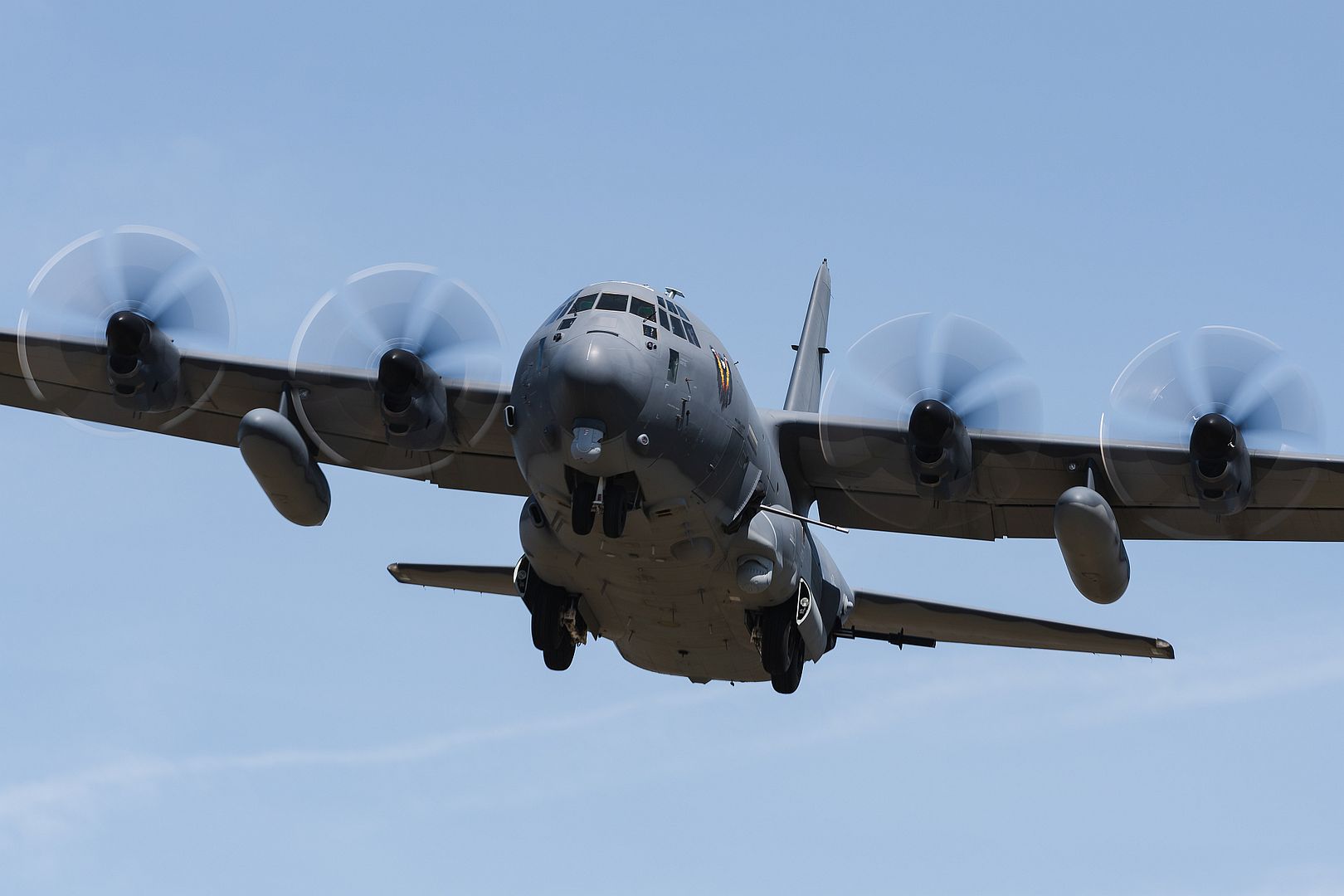
A U.S. Air Force B-52H Stratofortress assigned to the 23rd Expeditionary Bomb Squadron returns to Andersen Air Force Base, Guam, from a routine Bomber Task Force mission, Feb. 26, 2024. USINDOPACOM routinely and visibly demonstrates commitment to our allies and partners through the employment of our military forces, demonstrating strategic predictability, while becoming more operationally unpredictable to adversaries. (U.S. Air Force photo by Master Sgt. Amy Picard)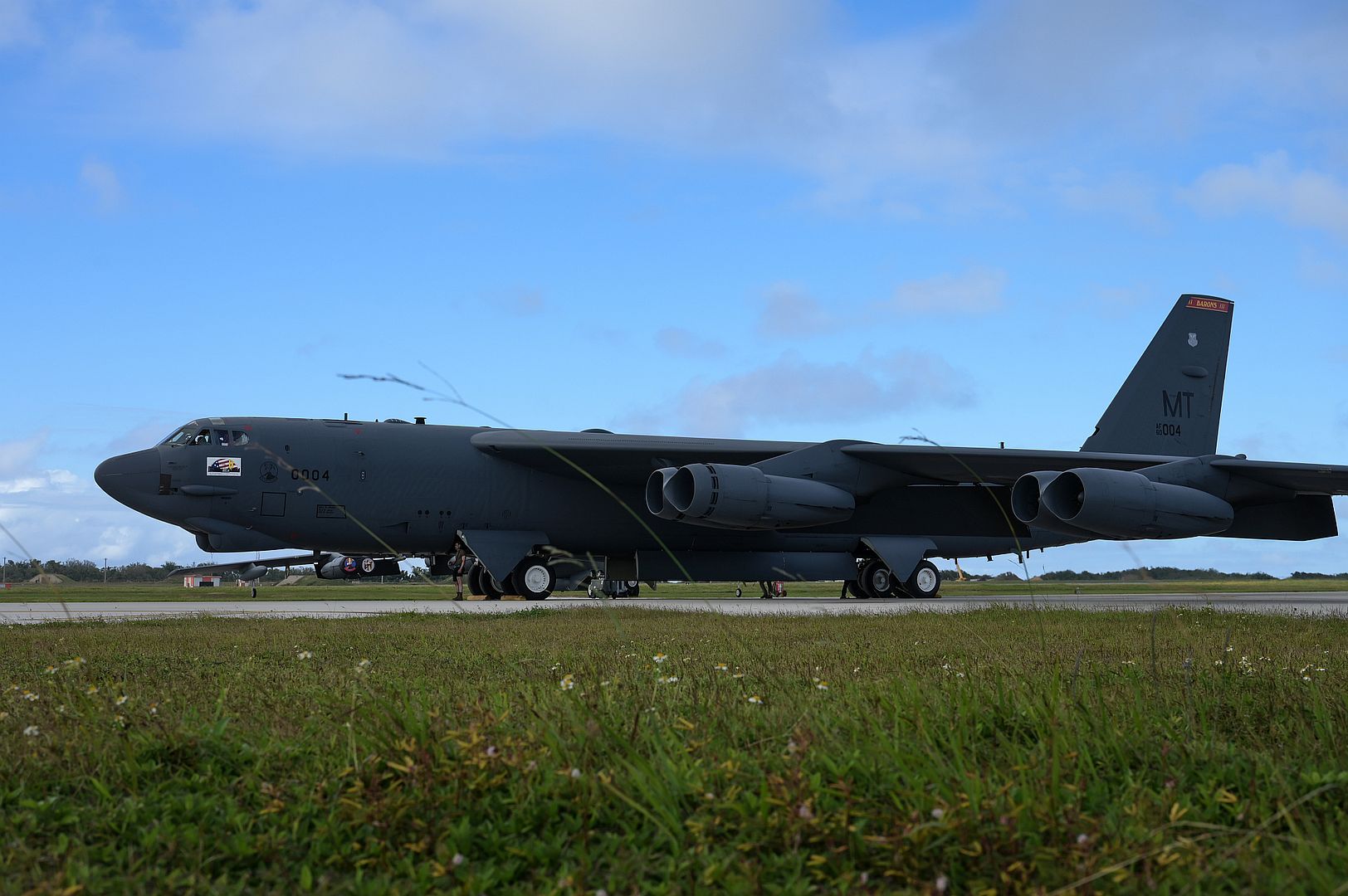
A U.S. Air Force B-1B Lancer assigned to the 28th Bomb Wing, Ellsworth Air Force Base, South Dakota, sits on a landing pad alongside two Saab JAS 39 Gripens at Luleå-Kallax Air Base, Sweden, Feb. 26, 2024, during Bomber Task Force 24-2. BTF missions enable crews to maintain a high state of readiness proficiency, and validate an always-ready, global strike capability. BTF operations provide U.S. leaders with strategic options to assure Allies and partners, while deterring potential adversary aggression across the globe. (U.S. Air Force photo by Staff Sgt. Jake Jacobsen)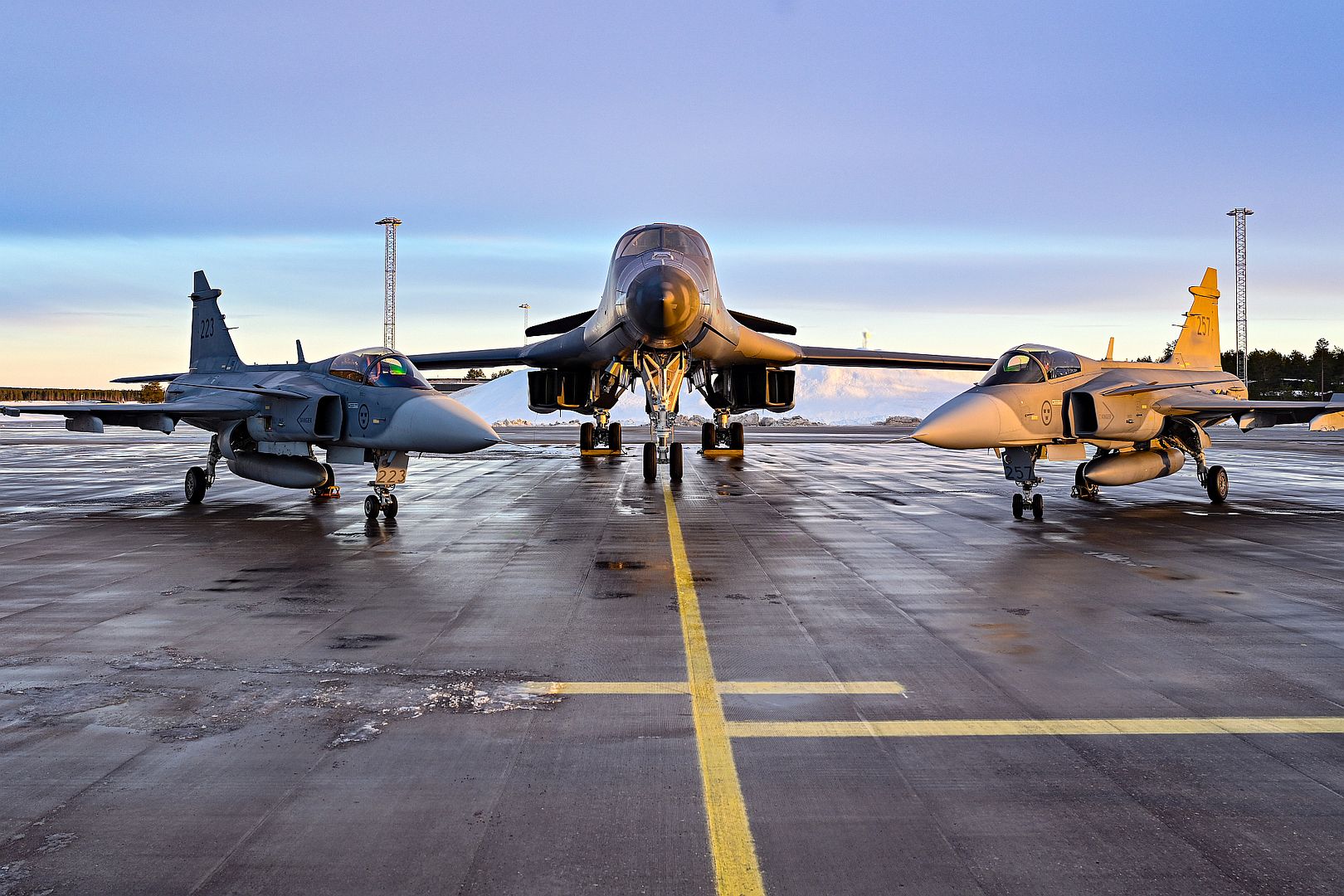
A HC-27J from Coast Guard Air Station Clearwater lands at MacDill Air Force Base, Florida, Feb. 27, 2024. The HC-27J is a modified surveillance variant of the Alenia C-27J Spartan, a former U.S. Air Force transport aircraft. The rebuilt aircraft primarily serves in maritime patrol, surveillance, medium-range search and rescue, drug and migrant interdiction, and disaster response missions. (U.S. Air Force photo by Senior Airman Zachary Foster)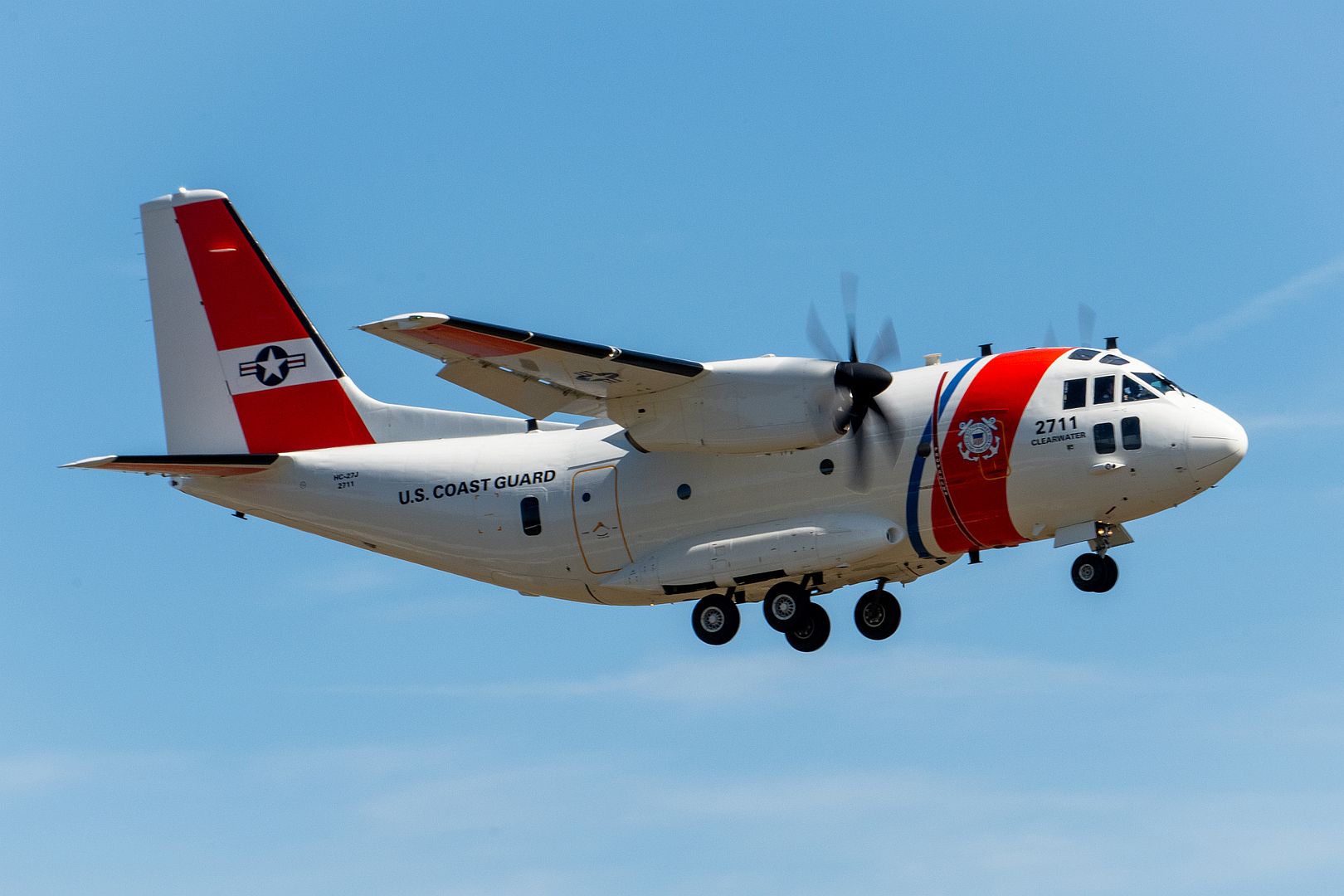
A KC-135 Stratotanker assigned to the 6th Air Refueling Wing lands at MacDill Air Force Base, Florida, Feb, 27, 2024. The KC-135 provides the core aerial refueling capability for the U.S. Air Force and has excelled in this role for more than 60 years. The 6th ARW employs 26 of Air Mobility Command’s 396 stratotankers. (U.S. Air Force photo by Senior Airman Zachary Foster)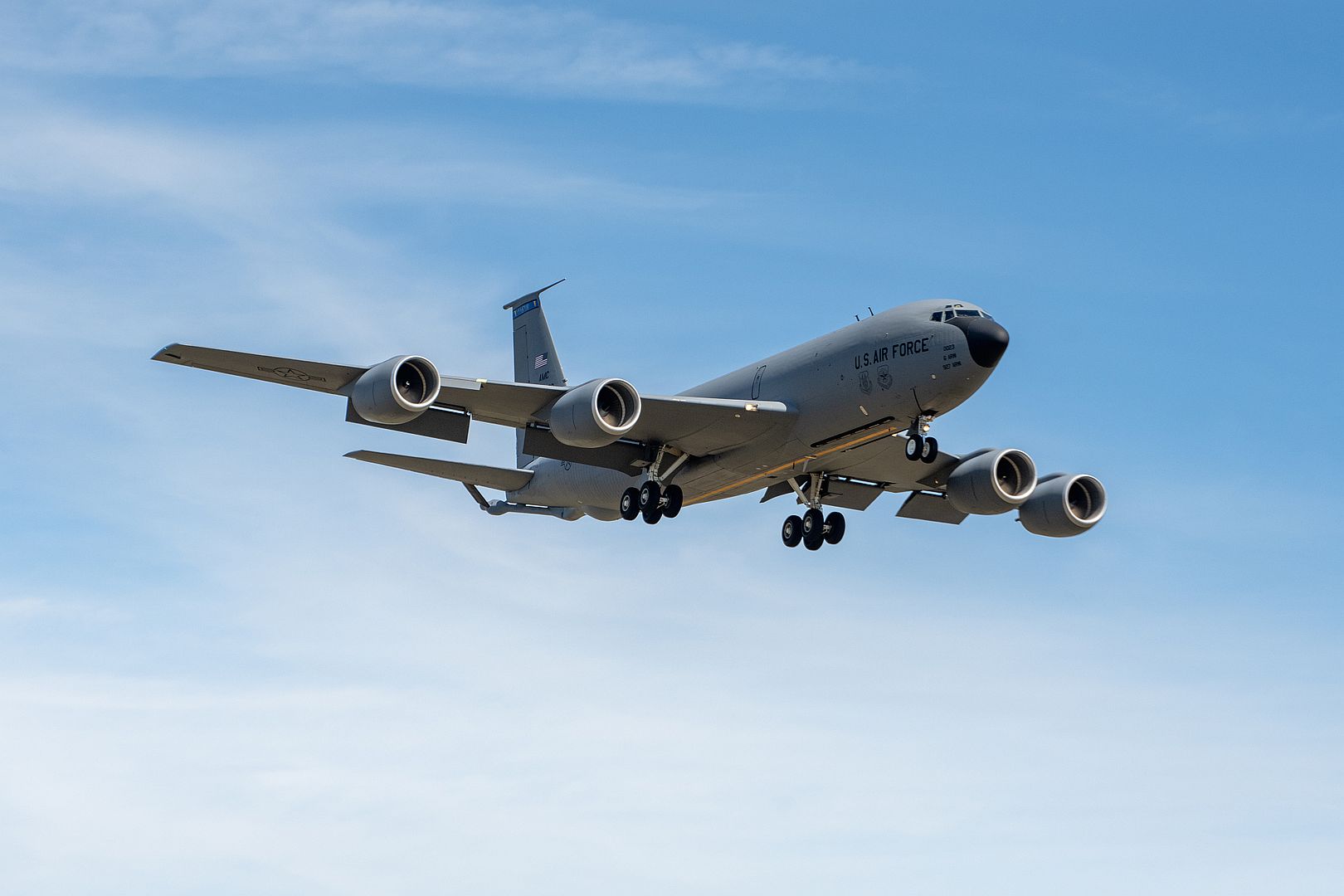
A U.S. Air Force B-1B Lancer assigned to the 28th Bomb Wing, Ellsworth Air Force Base, South Dakota, sits on a landing pad at Luleå-Kallax Air Base, Sweden, Feb. 28, 2024, during Bomber Task Force 24-2. These BTF missions are representative of the U.S.' extended deterrent commitment to its Allies and partners and enhance regional security. BTF operations provide U.S. leaders with strategic options to assure Allies and partners, while deterring potential adversary aggression across the globe. (U.S. Air Force photo by Staff Sgt. Jake Jacobsen)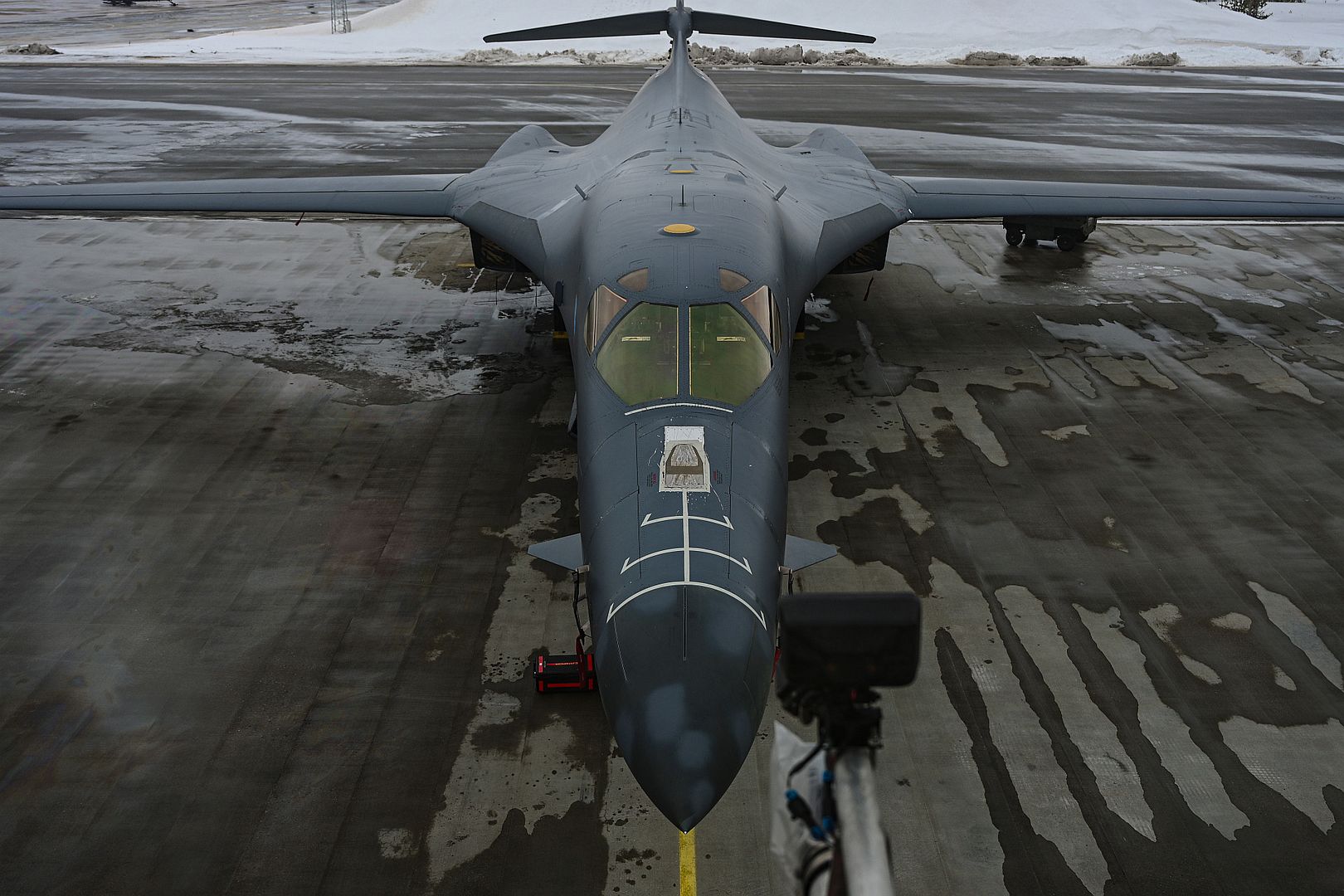
A U.S. Air Force HH-60W Jolly Green II assigned to the 33rd Rescue Squadron takes off from the flightline for its first flight at Kadena Air Base, Japan, Feb. 27, 2024. The HH-60W is the successor to the HH-60G Pave Hawk and designed from the ground up with integrated mission systems and features new, multi-function displays to provide pilots with critical flight information. (U.S. Air Force photo by Airman 1st Class Luis E. Rios Calderon)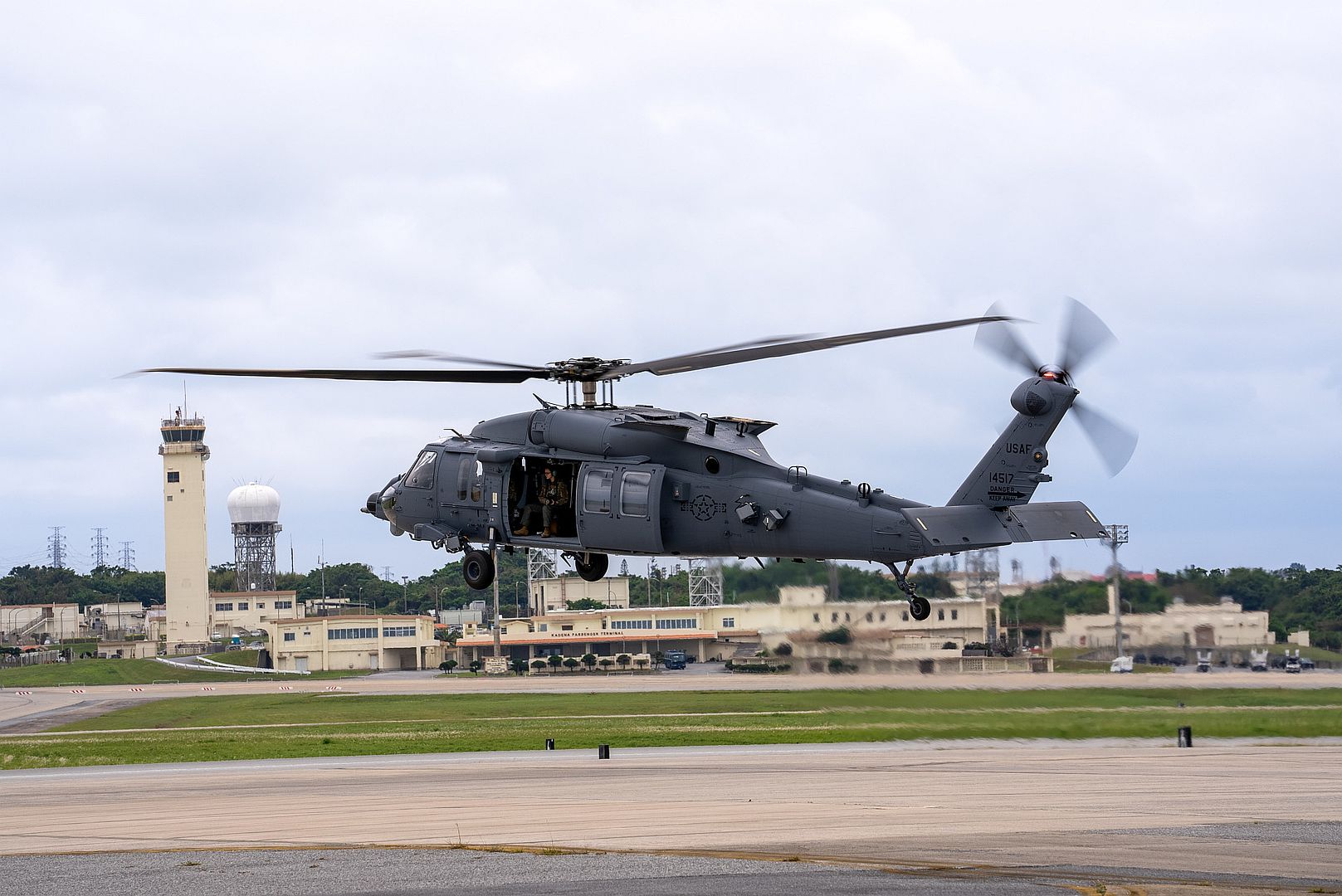
Anaheim, The Helicopter Company (THC), Saudi Arabia's premier provider of commercial helicopter services and fully owned by the Public Investment Fund, has signed a historic framework agreement with Airbus at the HAI Heli-Expo, currently taking place at Anaheim Convention Center, California.
The framework agreement will include up to 120 Airbus helicopters of various types set to be delivered over the next five to seven years. Part of the deal is a firm order for eight H125s along with 10 H145s that are converted options from an earlier contract, bringing THC’s total firm Airbus helicopter fleet to 60, 25 of which are already in service today.
The new H125 helicopters will support the delivery of THC’s range of services in areas including aerial work and tourism. The H145s will be used in a variety of roles including Emergency Medical Services (EMS) and corporate transport.
“Our relationship with THC started in 2020 with the first contract for 10 H125s. Since then, it’s gone from strength to strength, moving beyond just helicopters to also look at how we can help pave the way for the use of Sustainable Aviation Fuel in the region. This latest framework agreement reinforces the scope of our offering and we thank THC for allowing us to help expand their helicopter activity,” said Bruno Even, Airbus Helicopters CEO.
The CEO of THC, Capt Arnaud Martinez, said, “We are delighted to announce our framework agreement with Airbus, a transformative moment in our growth journey which solidifies our position as a global player as well as regional leader. The agreement will enable us to both contribute to the Kingdom’s Vision 2030 goals through strengthening Saudi’s aviation sector whilst also meeting the changing needs of our growing customer base, both locally and globally. Our collaboration with Airbus will reshape the aviation landscape as together, we will push the boundaries of innovation and showcase that with the right partner, everything is possible in aviation.”
The Helicopter Company is at the forefront of developing commercial helicopter services in the Kingdom, having introduced the H145 into service for Emergency Medical Services (EMS) and deployed both the H145 and H125 in support of the Dakar Rally. Last year the company took delivery of its first ACH160 for Red Sea Global tourism operations.
The worldwide best-selling H125 has accumulated more than 40 million flight hours with more than 5,350 helicopters currently in operation. The model, known for its robustness, versatility, hot and high performance, and is widely used in highly demanding missions.
Airbus’ H145 is designed to deliver excellent performance throughout the flight envelope, and is the latest member of the company’s four-tonne-class twin-engine rotorcraft product range – with designed-in mission capability and flexibility, especially in high and hot operating conditions. There are more than 1,675 helicopters of this family in service, logging a total of more than 7.6 million flight hours. Its particularly low acoustic footprint makes the H145 the quietest helicopter in its class.
THC was established as part of Saudi Public Investment Fund (PIF)’s strategy to activate new sectors in Saudi Arabia that support the realisation of Vision 2030 by creating an entire new ecosystem for general aviation services and introducing safe and efficient transport services across the kingdom. THC is the Kingdom’s premier commercial helicopter operator and has been operating since mid-2019. THC currently has 47 aircraft that serve diverse segments, including Emergency Medical Services (EMS), aerial work, private charters and tourism in the Kingdom. To learn more about their services and commitment to building the aviation ecosystem in the region and beyond, visit THC’s stand #7405 in the Anaheim Convention Center.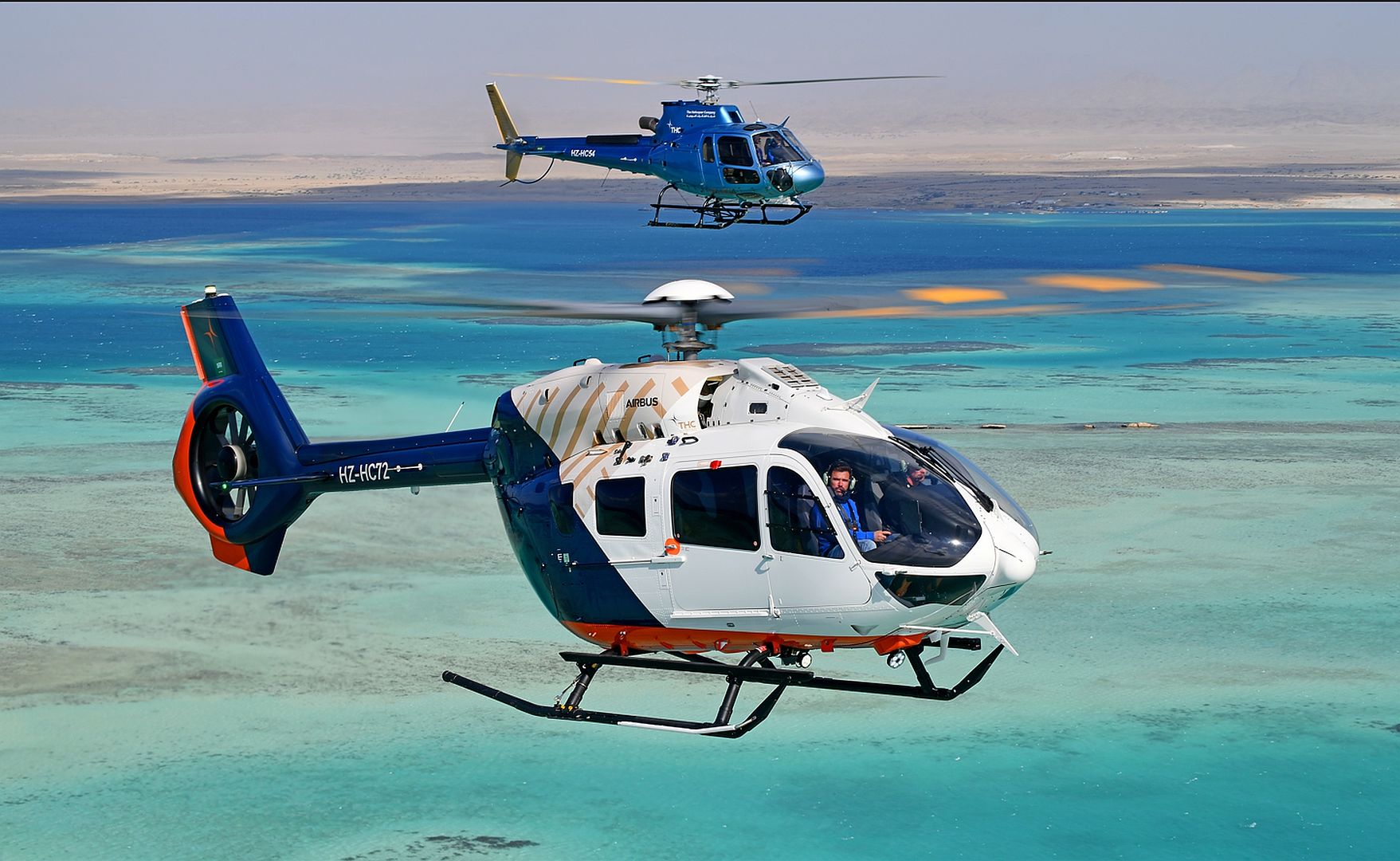
Anaheim, German helicopter emergency medical services operator DRF Luftrettung and Airbus Helicopters have announced orders for up to ten H145 helicopters (seven firm orders, three options).
“It is the mission of DRF Luftrettung to continuously improve medical care for people in need. With the new order of ten additional H145s, we continue to ensure the optimal service for our patients by keeping the helicopter fleet as modern and flexible as possible for our life-saving missions,” said Dr. Krystian Pracz, CEO of DRF Luftrettung.
"As an operator that deploys its fleet for emergency medical services, the DRF Luftrettung truly understands the importance that a helicopter's performance can have in making a decisive difference in the care a patient receives. We are therefore very grateful for the continued trust that they place in our helicopters," said Thomas Hein, Head of Europe Region at Airbus Helicopters. "We are proud to see that over the last decade the H145 has become the backbone of DRF Luftrettung's fleet performing life-saving missions in Germany and Europe."
The ordered helicopters will also be covered by DRF’s fleet-wide HCare Smart contract, which provides comprehensive parts-by-the-hour support.
DRF Luftrettung is one of the largest and most experienced air rescue organisations in Europe. The organisation and its subsidiaries operate more than 50 Airbus H135 and H145 helicopters at 40 bases throughout Germany, Austria, Liechtenstein and Switzerland for emergency rescue and intensive care transport operations. In addition to this, they are also deployed for special missions, including hoist operations and day and night operations.
The new version of Airbus’ best-selling H145 adds a new, innovative five-bladed rotor to the multi-mission H145, increasing the useful load of the helicopter by 150 kg. The simplicity of the new bearingless main rotor design eases maintenance operations, improving the serviceability benchmark and reliability of the H145, while improving flight comfort for both passengers and crew.
In total, there are more than 1,675 H145 family helicopters in service, logging a total of more than 7.6 million flight hours. Powered by two Safran Arriel 2E engines, the H145 is equipped with a full authority digital engine control (FADEC) and the Helionix digital avionics suite. It includes a high performance 4-axis autopilot, increasing safety and reducing pilot workload. Its particularly low acoustic footprint makes the H145 the quietest helicopter in its class, while its CO2 emissions are the lowest amongst its competitors.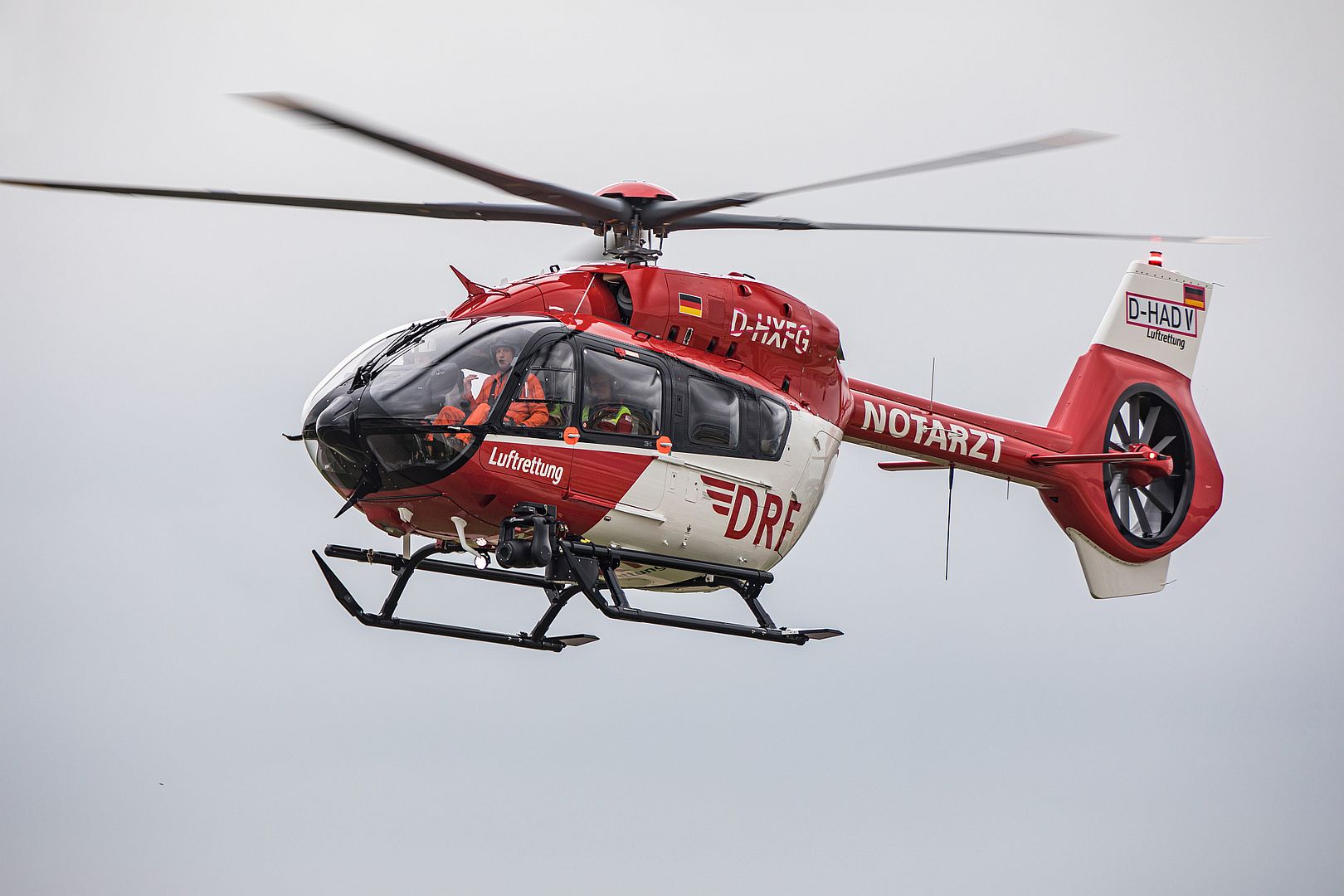
Media Release 28.02.2024
PC-21 Fleet Achieves 500,000 Flight Hours in Safety
The global fleet of just under 250 PC-21 training aircraft recently set a historic milestone with a total of over 500,000 successful hours in the air. Experience with current PC-21 customers shows that the state-of-the-art Pilatus training system can help reduce the cost of training future pilots by over 50 percent.
Pilatus is proud that the worldwide fleet of exceptionally efficient and advanced PC-21 training aircraft has logged 500,000 hours in the air.
Ioannis Papachristofilou, recently appointed VP Government Aviation at Pilatus, emphasizes: “The PC-21 provides air forces with a highly efficient platform for military pilot training. Featuring state-of-the-art equipment and smart avionics, the training aircraft delivers a high level of performance. With the PC-21, training hours can be flown with substantially less fuel, making it an exceptionally cost-effective, sustainable and intelligent training platform.”
An integrated and proven training system
In addition to the actual aircraft, the integrated PC-21 training system includes mission planning and debriefing systems, training materials, virtual reality tools and a flight simulator – an essential element in ground-based training.
Worldwide, the current fleet comprises almost 250 PC-21s. Customers include some of the world’s leading air forces from Europe, Australasia and the Middle East. The Spanish Air Force also trains with the PC-21. With the purchase of 16 additional PC-21s and associated simulators in March 2023, the Spanish Air force is now the largest PC-21 operator in Europe. The Swiss Air Force has successfully used the PC-21 to train its future military pilots since 2008.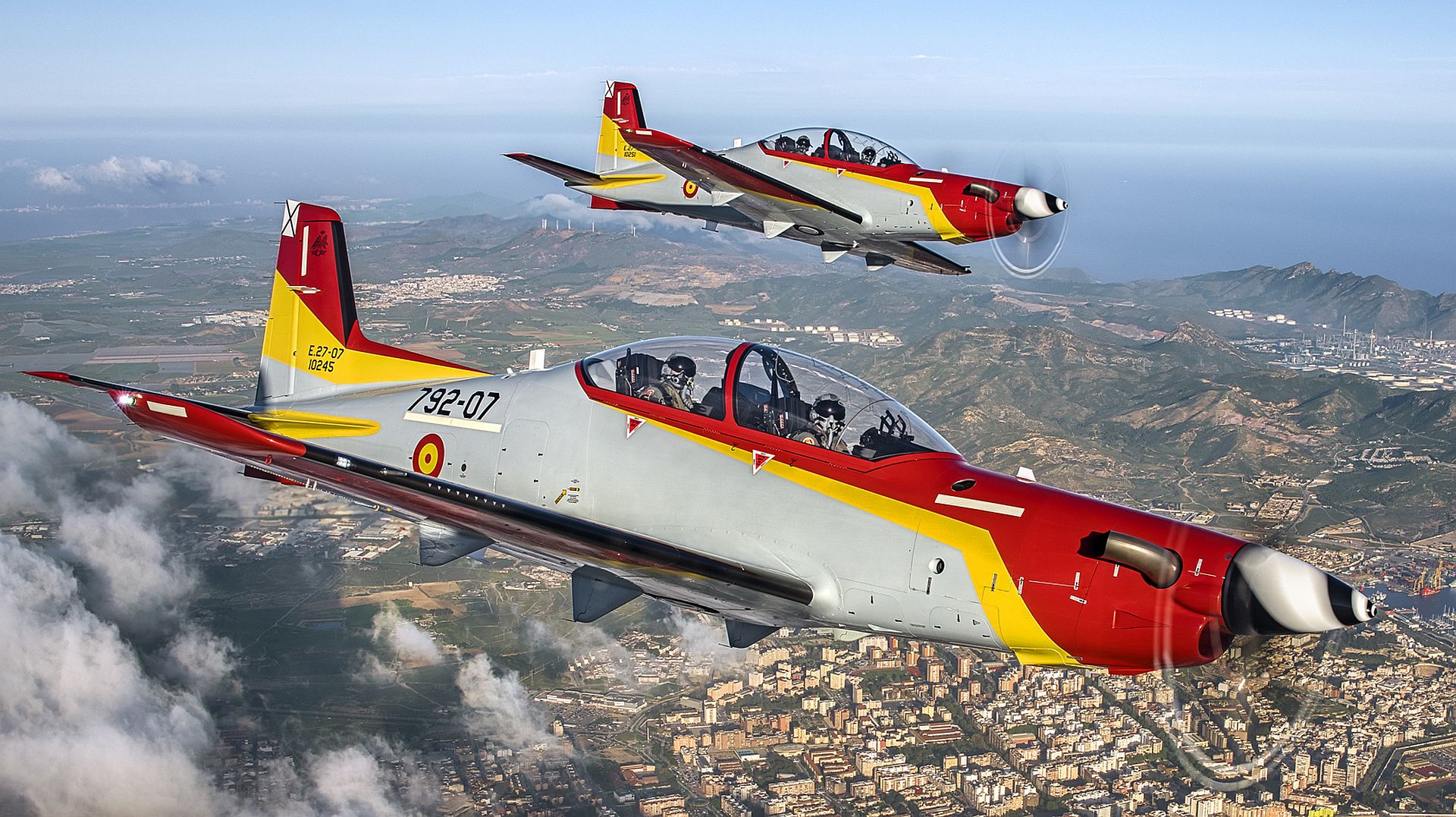
The Royal New Zealand Air Force (RNZAF) has answered a call from the United Kingdom to support its Blue Belt marine conservation programme, deploying a new P-8A Poseidon aircraft to assist with monitoring of the Pitcairn Islands Exclusive Economic Zone.
The P-8A crew carried out 10 hours of airborne surveillance in January, with a total of 24 vessels reported on.
About 5500 kilometres east of New Zealand, the Pitcairn Island Exclusive Economic Zone (EEZ) is an 834,000-square-kilometre marine reserve, with all forms of commercial fishing and mining prohibited. A network of remote surveillance sensors provide constant reports of movement in the area.
It is part of the UK’s Blue Belt programme, a marine conservation effort that assists UK overseas territories to create and maintain healthy and productive marine ecosystems with the aim of tackling the serious global problems of overfishing, species extinction and climate change.
Air Component Commander Air Commodore Andy Scott said the RNZAF was pleased to assist UK partners in the important task of preserving this area.
“The reporting by the P-8A crew on the Pitcairn task meant that the UK Marine Management Office (MMO) was able to confirm accuracy of the remote surveillance methods so they know what they’re seeing is correct.
“The presence of the aircraft also provides a deterrence factor to those who may be seeking to carry out illegal activities in the marine reserve.
“The range of the P-8A means we’re now able to project even further into areas that require monitoring for various reasons. Earlier this year the aircraft carried out the furthest south continuous patrol the RNZAF has done, in support of the Convention for the Conservation of Antarctic Marine Living Resources.”
The Pitcairn operation was a joint tasking between the UK MMO, the Government of the Pitcairn Islands, the Joint Maritime Security Centre UK, the National Maritime Coordination Centre (New Zealand), New Zealand’s Ministry of Foreign Affairs and the New Zealand Defence Force.
The RNZAF acquired four P-8A Poseidon aircraft last year and they are regularly deployed to provide maritime surveillance throughout the Southern Ocean and south west Pacific.
(Photo courtesy of the RNZAF)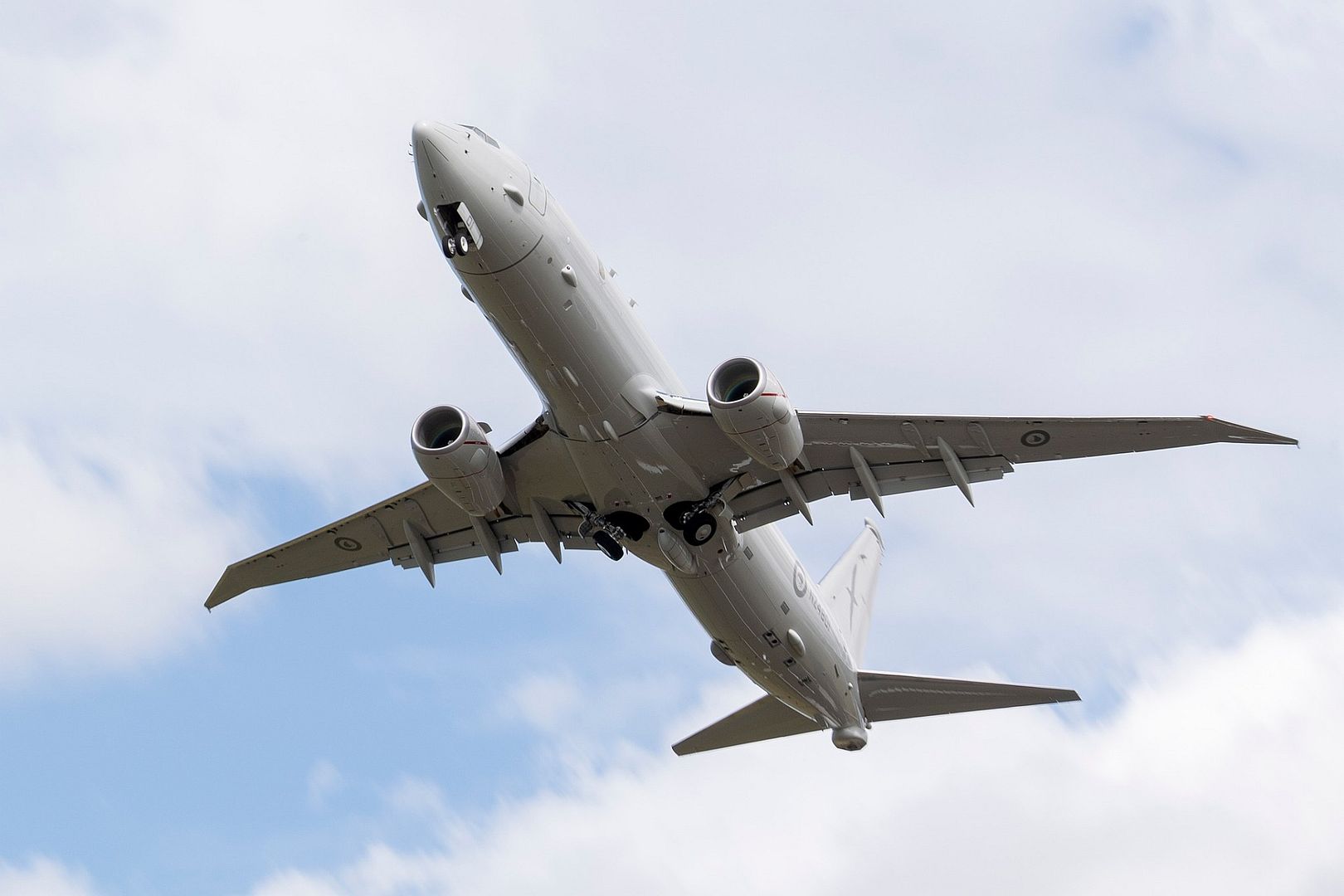
-
1 year agoThu Feb 29 2024, 08:54pmDuggy
 Main AdminA U.S. Air Force A-10C Thunderbolt II attack aircraft assigned to the 127th Wing, Michigan Air National Guard, taxis to the runway for takeoff Feb. 28, 2024, from Savannah Air National Guard Base to fly a night sortie for Exercise Agile Rage in Savannah, Ga. The primary goal of Agile Rage 2024 is to conduct leading-edge combat in Air Operations Maritime Surface Warfare (AOMSW), Combat Search and Rescue (CSAR), Agile Combat Employment (ACE), and advanced ground operations tactics, techniques, and procedures. (U.S. Air National Guard photo by Staff Sgt. Sean Madden)
Main AdminA U.S. Air Force A-10C Thunderbolt II attack aircraft assigned to the 127th Wing, Michigan Air National Guard, taxis to the runway for takeoff Feb. 28, 2024, from Savannah Air National Guard Base to fly a night sortie for Exercise Agile Rage in Savannah, Ga. The primary goal of Agile Rage 2024 is to conduct leading-edge combat in Air Operations Maritime Surface Warfare (AOMSW), Combat Search and Rescue (CSAR), Agile Combat Employment (ACE), and advanced ground operations tactics, techniques, and procedures. (U.S. Air National Guard photo by Staff Sgt. Sean Madden)
KC-46 Pegasus aircraft sit on the flightline in preparation for departure after conducting an iteration of exercise Explodeo at Joint Base Lewis-McChord, Washington, Feb. 28, 2024. Explodeo highlights McConnell Air Force Base’s ability to swiftly adapt to global changes, employing a gradual approach to ensure global mobility and peak readiness for critical response. (U.S. Air Force photo by Airman 1st Class Megan Geiger)
An E/A-18G Growler attached to Electronic Attack Squadron (VAQ) 140 lands on Nimitz-class aircraft carrier USS George Washington (CVN 73), in the Atlantic Ocean, Feb. 27, 2024. George Washington is conducting Tailored Ships Training Availability and Final Evaluation Problem (TSTA/FEP). TSTA prepares the ship and crew for full integration into a carrier strike group through a wide range of mission critical operations. (U.S. Navy photos by Mass Communication Specialist 3rd Class August Clawson)_140_lands_on_Nimitz-class_aircraft_carrier_USS_George_Washington.jpg?width=1920&height=1080&fit=bounds)
_140_lands_on_Nimitz-class_aircraft_carrier_USS_George_Washington-1.jpg?width=1920&height=1080&fit=bounds)
The Naval Flight Demonstration Squadron, the Blue Angels’ C-130J Super Hercules performs a scheduled photo exercise over the Grand Canyon National Park on February 28, 2024. The Blue Angels are currently conducting winter training at Naval Air Facility (NAF) El Centro, California, in preparation for the upcoming 2024 air show season. (U.S. Navy photos by Mass Communication Specialist 2nd Class Crayton Agnew/Released)


U.S. Navy F-18s fly next to B-52H Stratofortresses over the Pacific Ocean, Feb. 24, 2024. Joint operations, such as these, provide the opportunity to improve shared tactics to better integrate joint defense capabilities. (U.S. Air Force photo by Airman 1st Class Alyssa Bankston)
A U.S. Air Force B-1B Lancer assigned to the 28th Bomb Wing, Ellsworth Air Force Base, South Dakota, flies in formation with four Swedish Air Force JAS 39 Gripens over Sweden during Vanguard Adler, part of Bomber Task Force 24-2, Feb. 26, 2024. NATO Allies and partners stand together in support of a safe, stable European environment by increasing interoperability and building combined partner capabilities. BTF operations provide U.S. leaders with strategic options to assure Allies and partners, while deterring potential adversary aggression across the globe. (Courtesy photos by the Swedish Air Force)


Anaheim, Niagara Helicopters has placed an order for six H130 helicopters, confirming a full fleet renewal for the tourism company based in Niagara Falls, Ontario. Each year, the company welcomes more than 100,000 customers from all over the world, providing a nine minute, 27 kilometre sightseeing tour over Niagara Falls.
“In order to continue to deliver a first-class visitor experience, we felt it was time to upgrade our aircraft,” says Denis Pilon, Chief Operating Officer for Niagara Helicopters. “After nearly 10 years of working with Airbus Helicopters, we are confident that the H130 continues to be the ideal aircraft for our operation. We are pleased to be working with the Airbus team again. We look forward to many more years of cooperation and collaboration.”
“We’re honoured that Niagara Helicopters has once again put their trust in Airbus, as they work to deliver exceptional experiences for visitors to the Niagara region,” says Dwayne Charette, President and COO of Airbus Helicopters in Canada. “They are an esteemed partner and we are delighted they have chosen Airbus as their exclusive helicopter provider since 2015.”
The aircraft of choice for tourism, the H130 has a wide, unobstructed cabin which accommodates the pilot and up to seven passengers, providing outstanding visibility through a large wrap-around windscreen and wide windows. Its state-of-the-art technologies, materials, systems and avionics make it a quiet and powerful helicopter. A single-engine helicopter, the H130 is known for its widespread use with sightseeing services, charter operators and emergency medical services.
In addition to the H130’s panoramic seating, the active vibration control system and improved air conditioning contribute to its unbeatable level of comfort. This rotorcraft also offers the most economical operating cost per seat in its class. With the open-space cabin, passengers enjoy spectacular views from their forward-facing seats. Rear passengers are comfortably seated on a raised theatre-style platform. The H130 is a member of the Ecureuil family, which represents 47% of the Airbus-built in-service helicopter fleet worldwide, and has accumulated over 40 million flight hours.
Over 85 aircraft participated in Exercise Cope North 24 in Guam from five different nations.
Ranging from fourth generation fighter aircraft to mobility assets such as our #AusAirForce C-27J Spartan, this large multilateral force deployed from Guam to the Northern Mariana Islands, landing at spoke airfields.
Exercise Cope North aims to develop interoperability and shared tactics between Australia's allies and partners, with a focus on agile operations and airborne integration.
(Photos courtesy of LAC Kurt Lewis, LACW Maddison Scott & FSGT John Marshall, RAAF)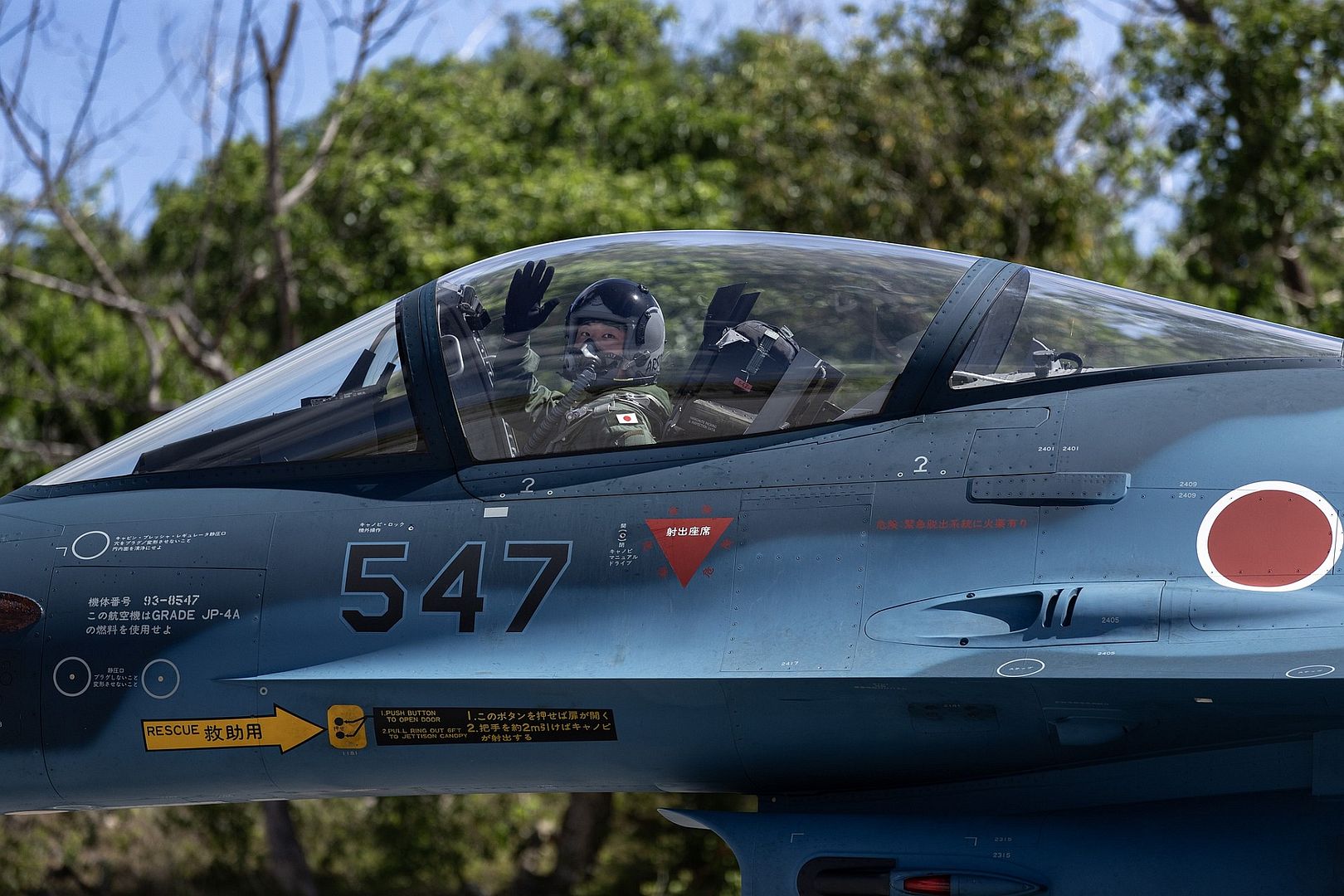
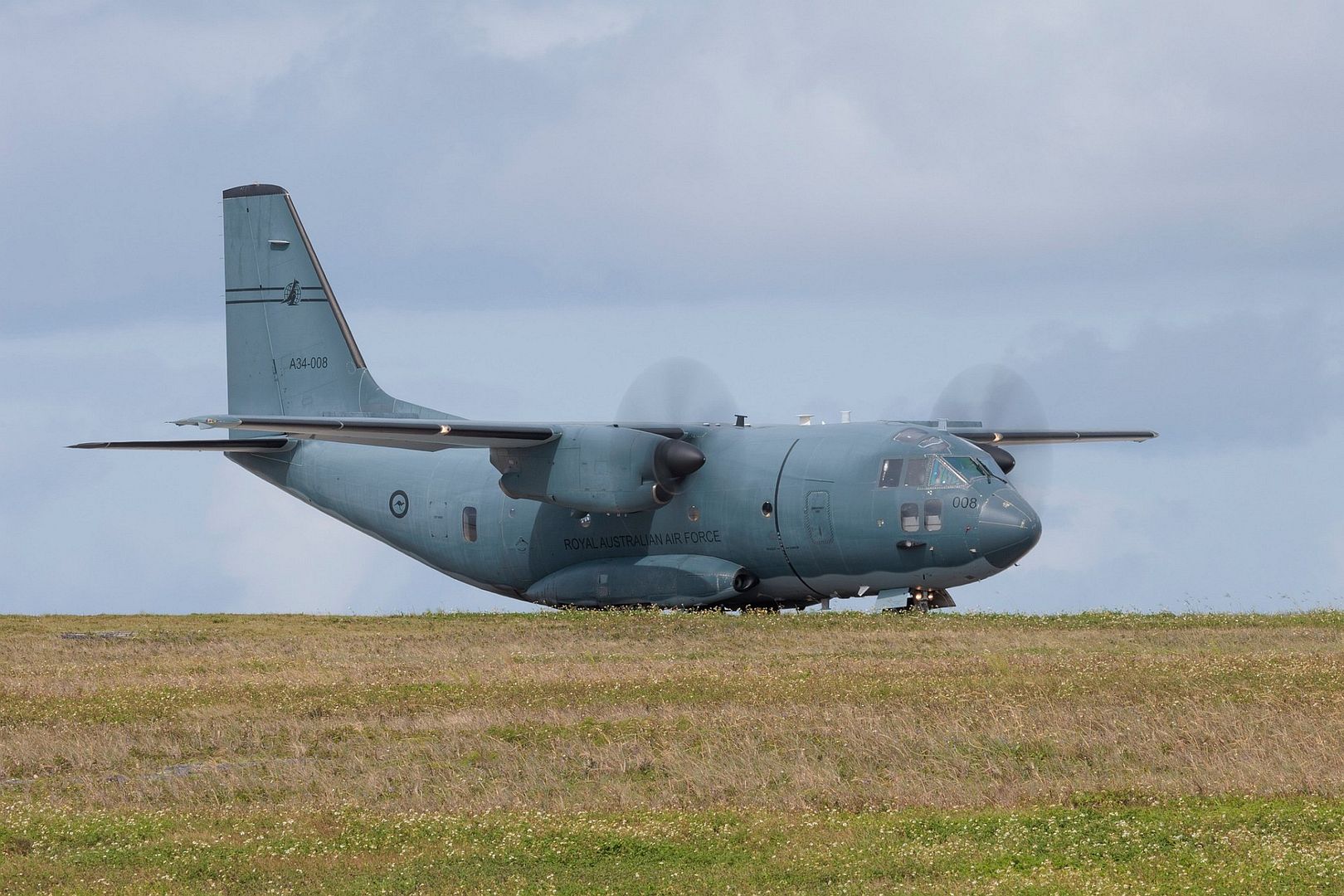
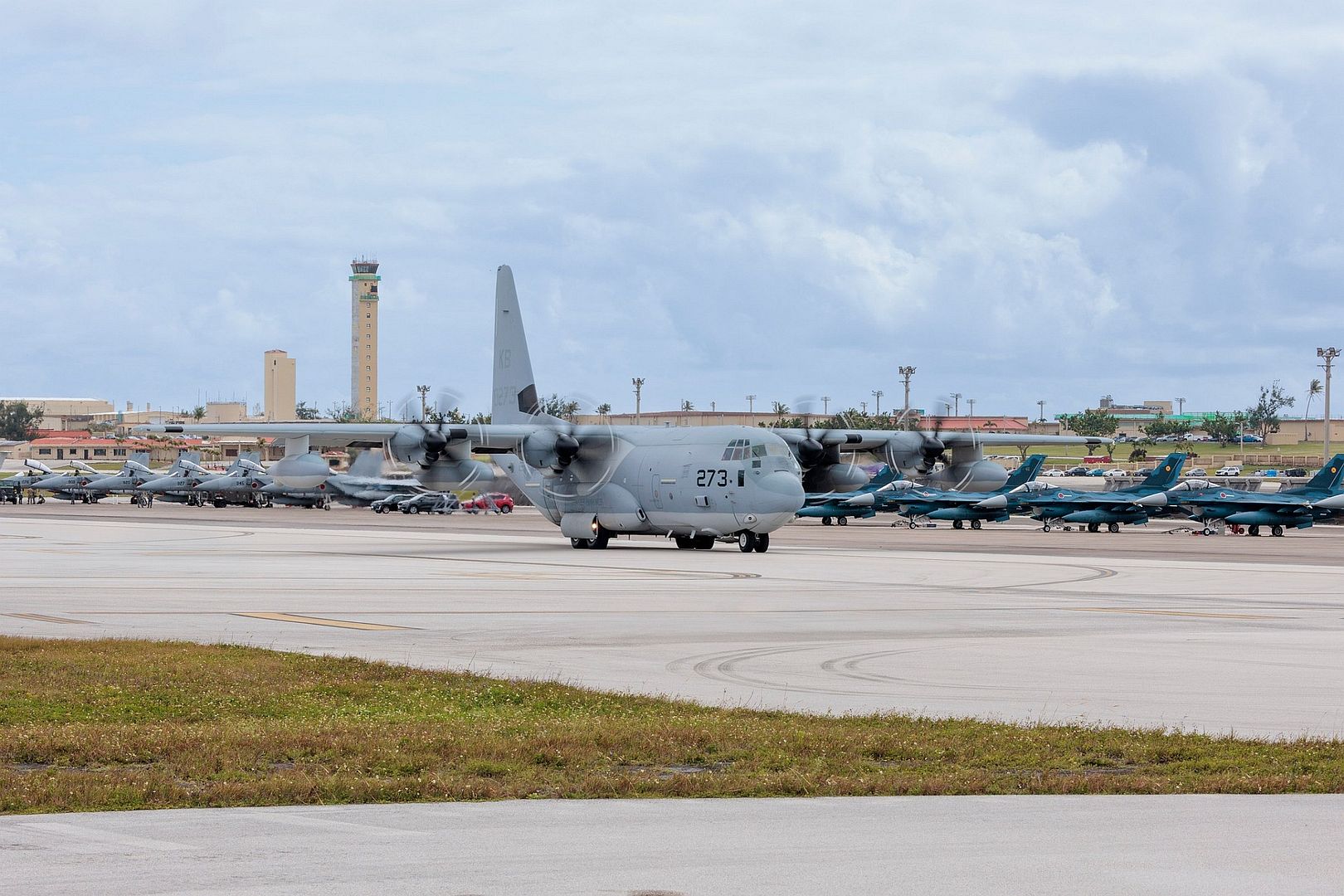
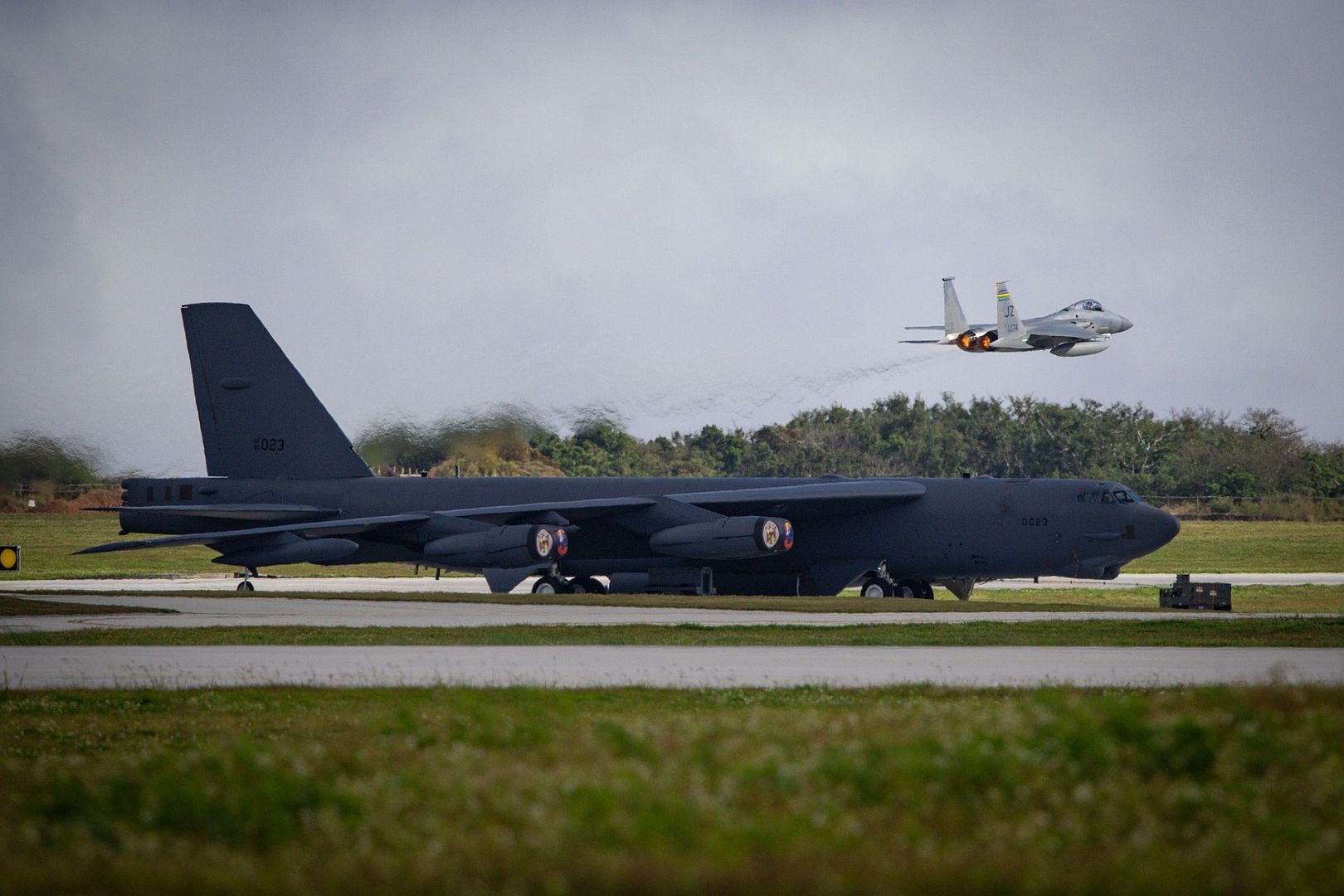
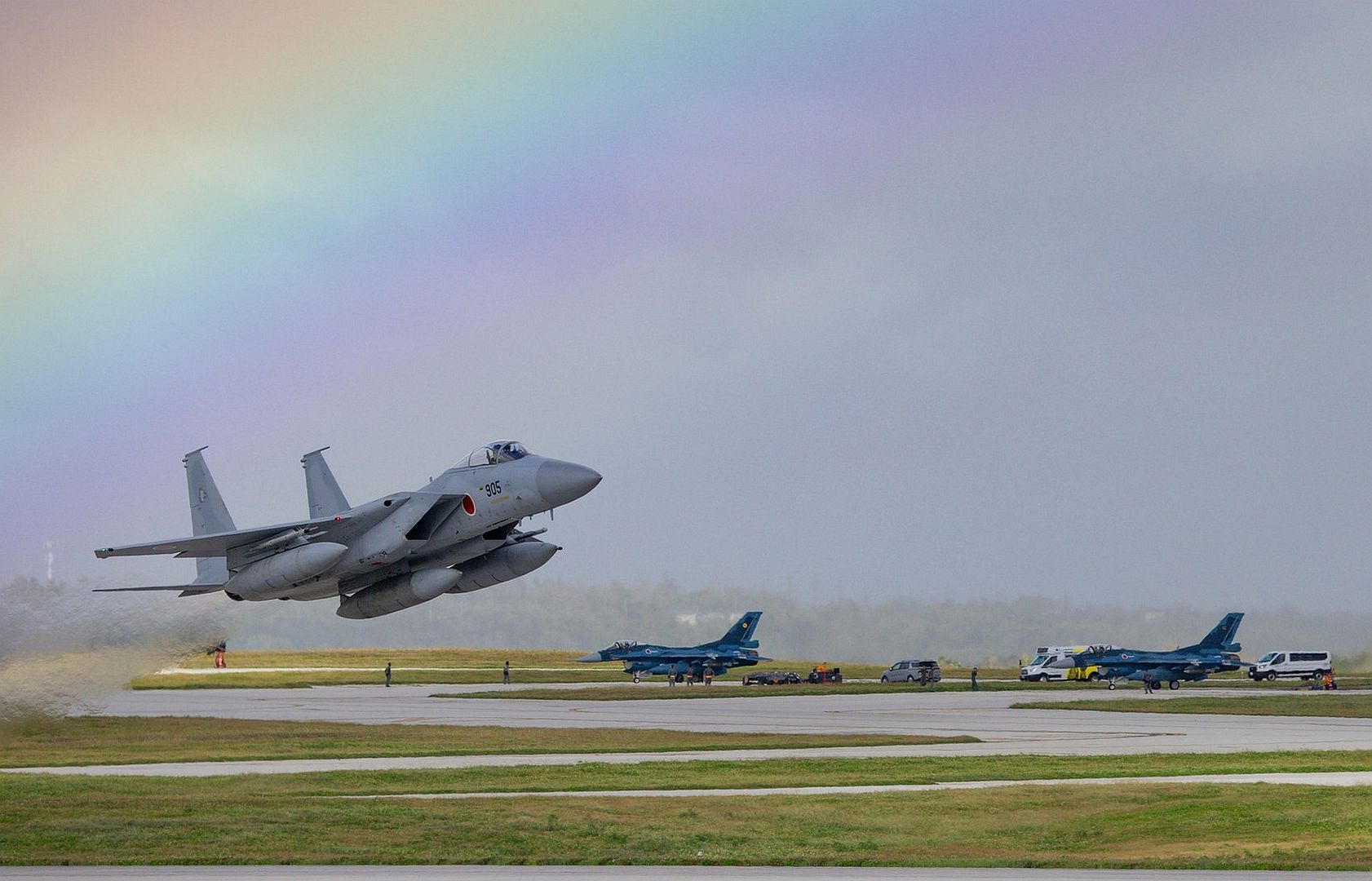
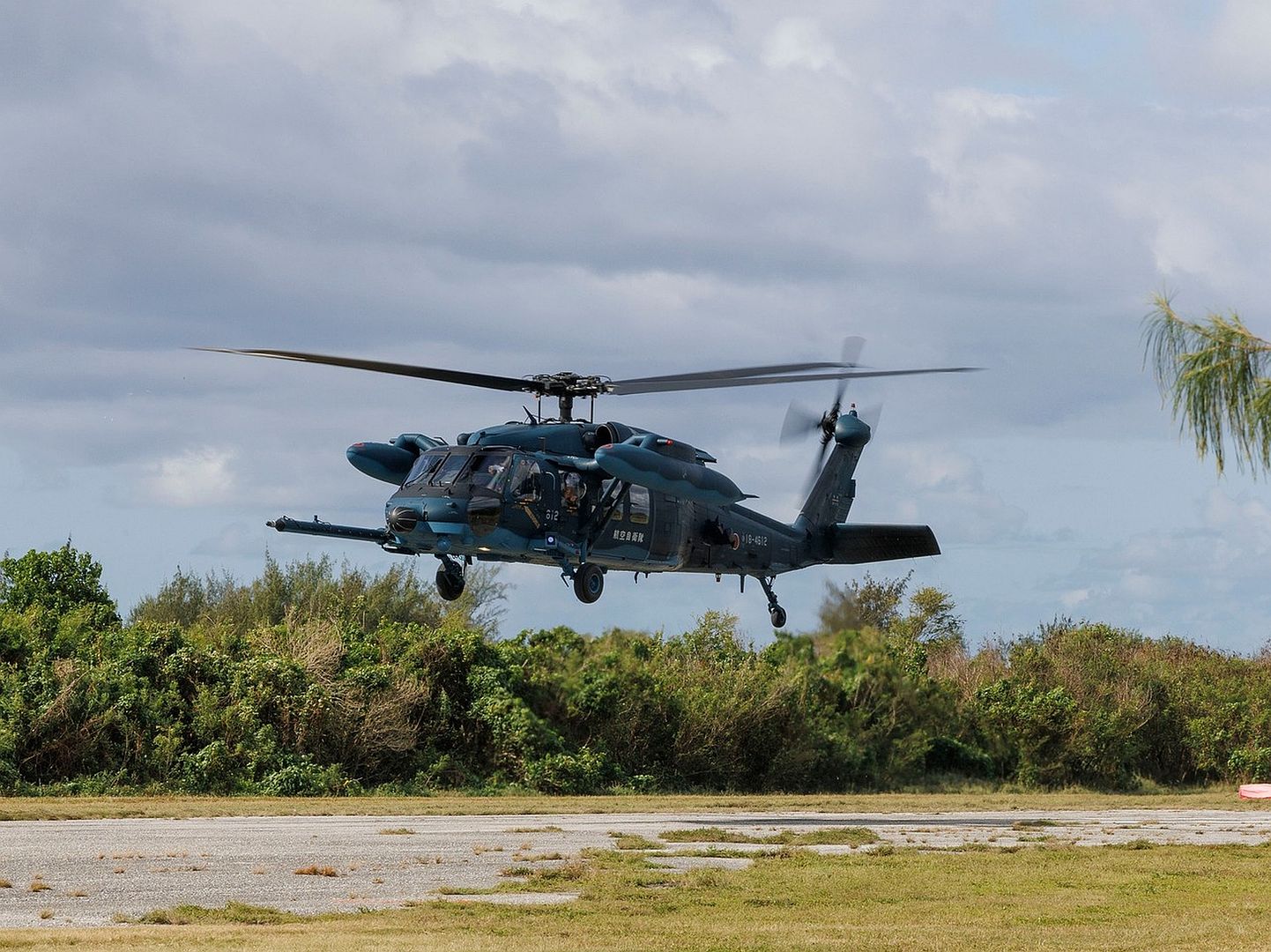
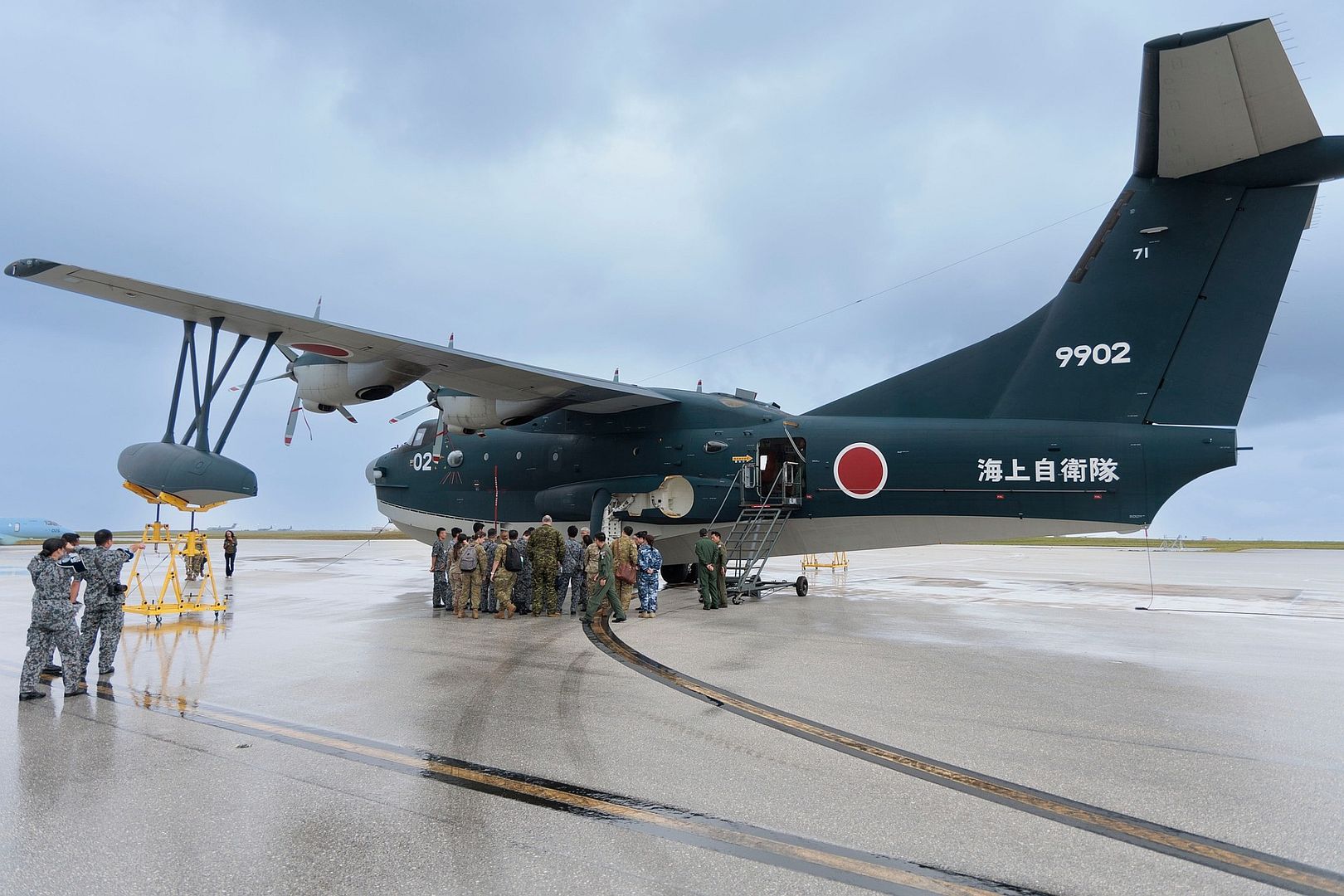
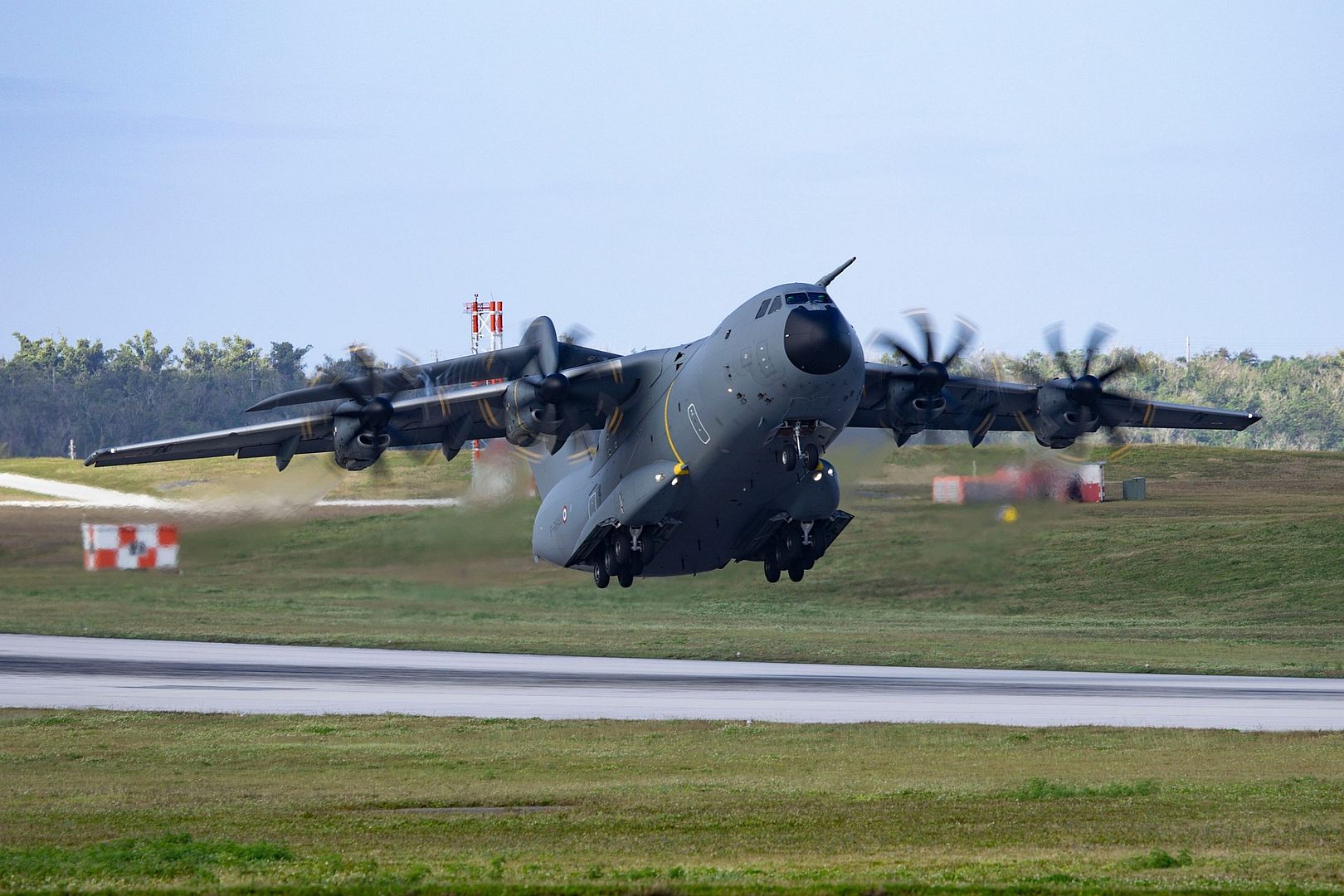
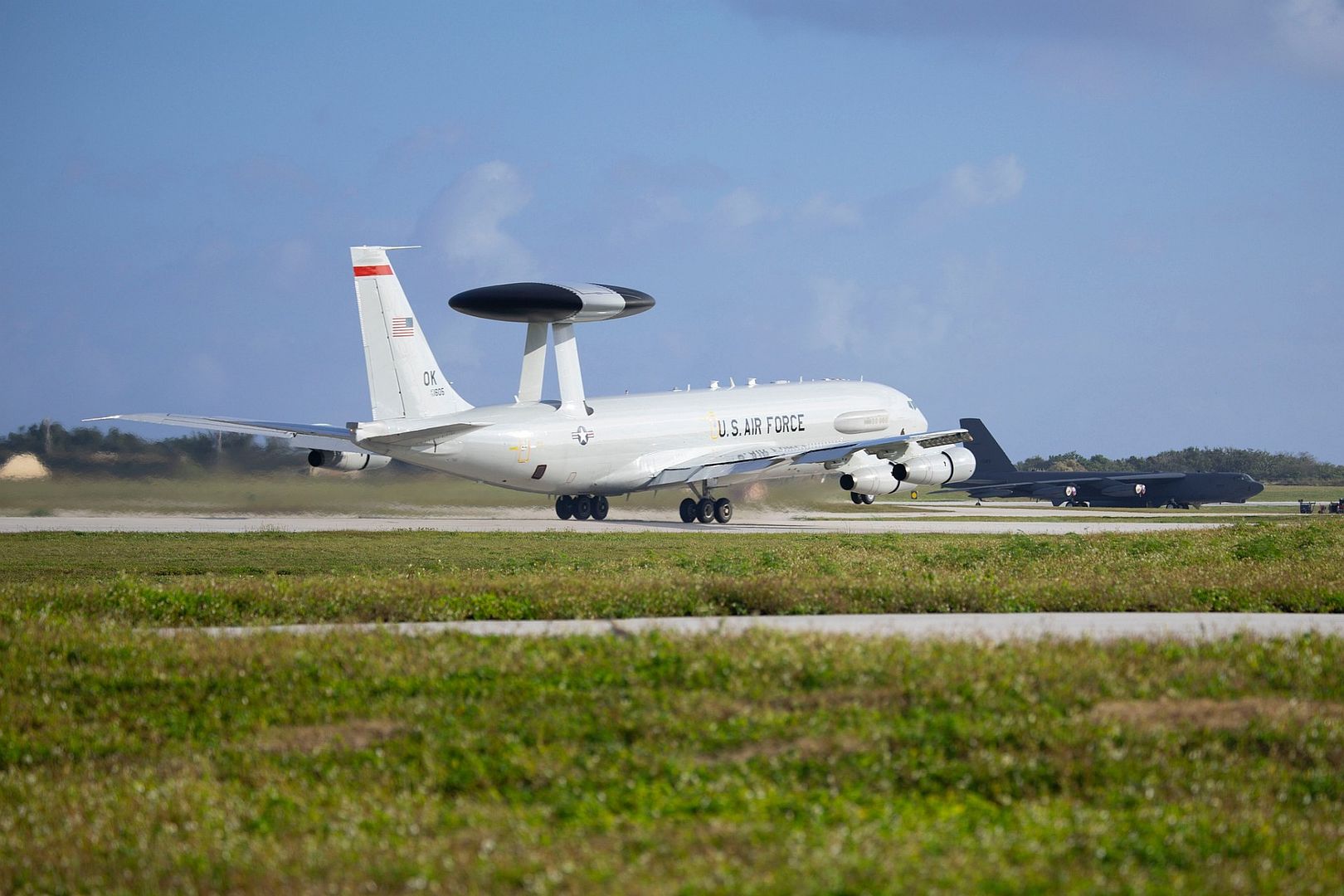
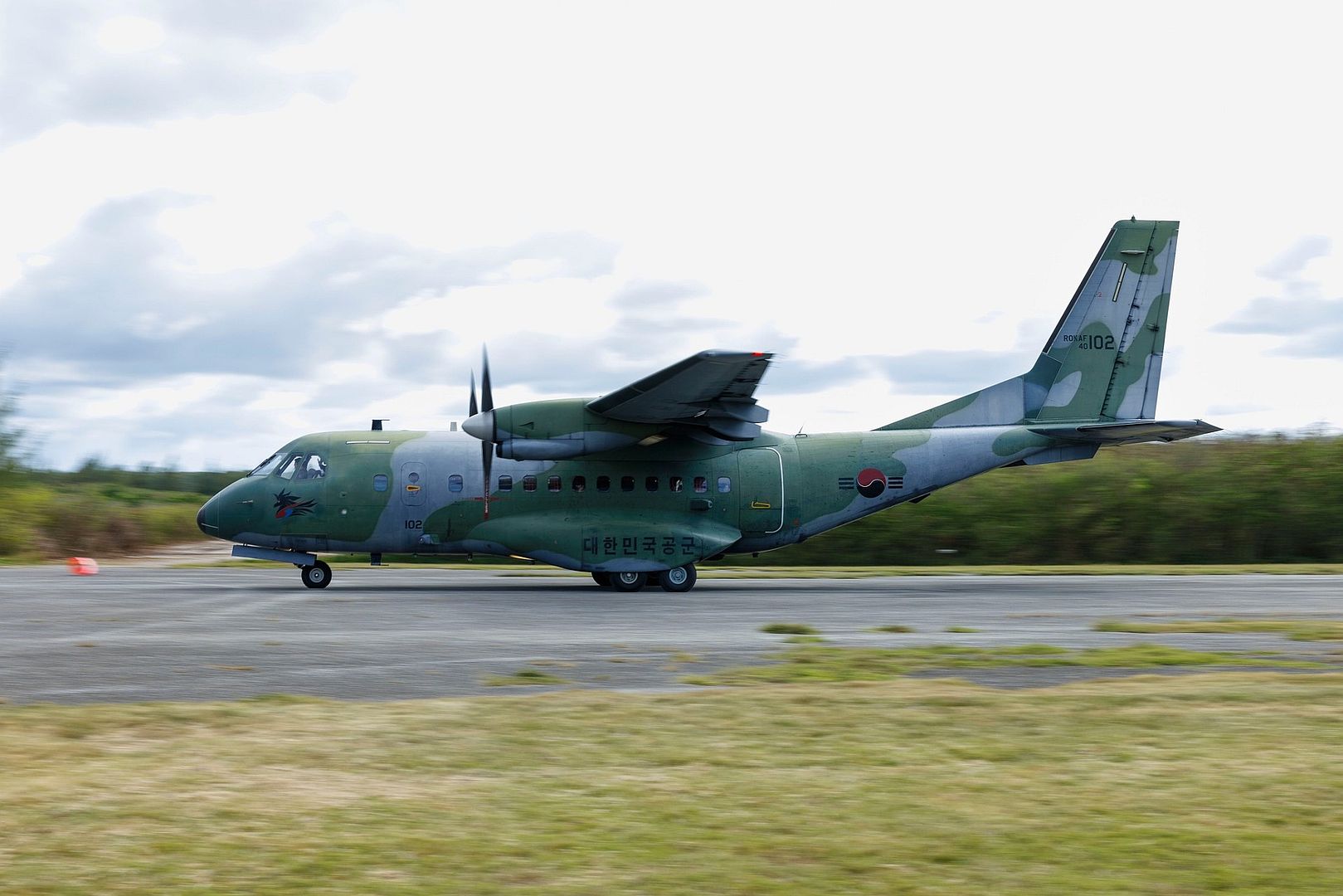
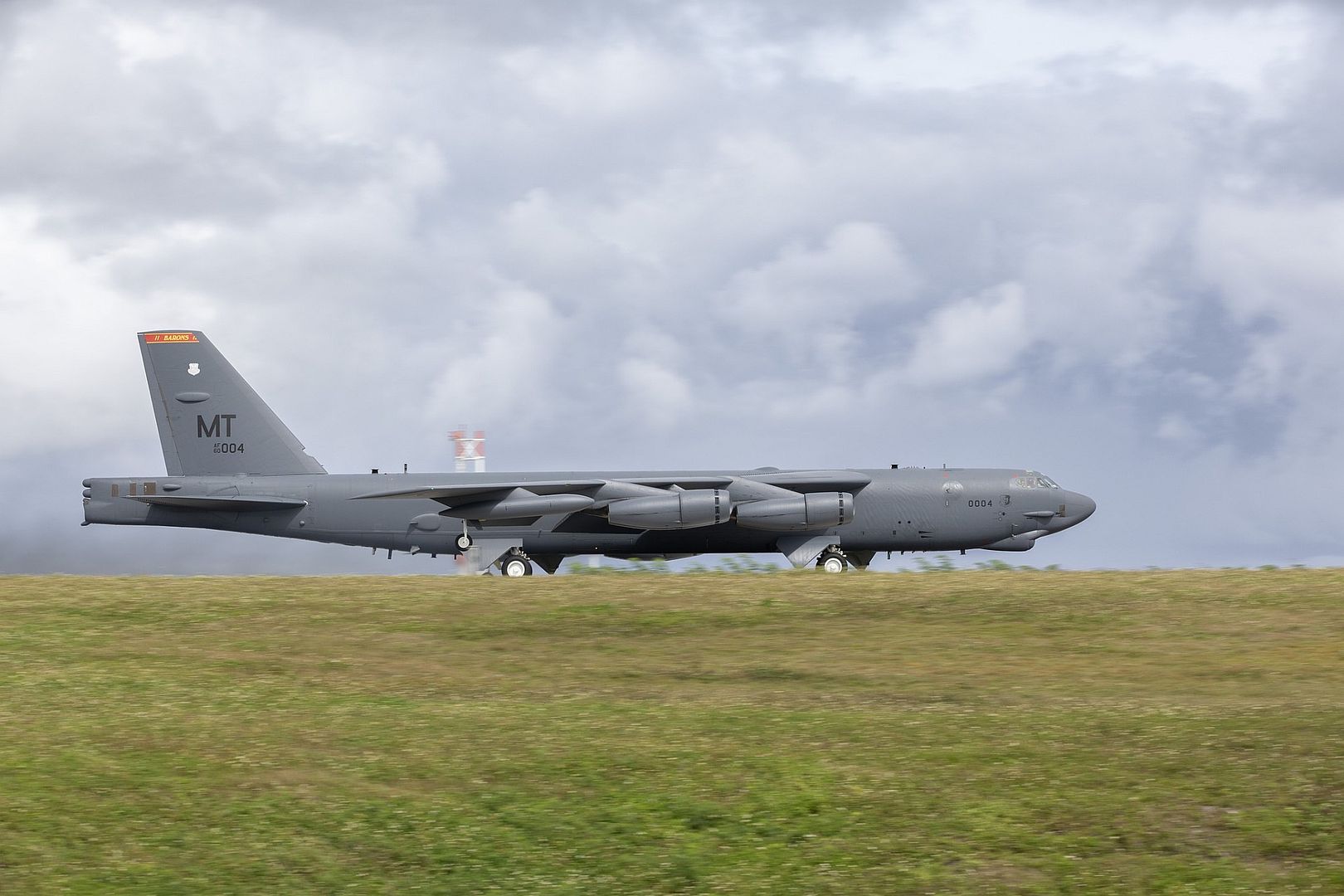
-
1 year agoFri Mar 01 2024, 05:37pmDuggy
 Main AdminLUZON STRAIT (Feb. 29, 2024) U.S. Sailors perform pre-flight checks on an F/A-18E Super Hornet, attached to the “Flying Checkmates” of Strike Fighter Squadron (VFA) 211, on the flight deck of the Nimitz-class aircraft carrier USS Theodore Roosevelt (CVN 71), Feb. 29, 2024. USINDOPACOM forces perform operations in and around critical sea passages and trade thoroughfares to deter threats that create regional instability and impinge on the free flow of goods, people, and ideas. (U.S. Navy photo by Mass Communication Specialist 3rd Class Adina Phebus)
Main AdminLUZON STRAIT (Feb. 29, 2024) U.S. Sailors perform pre-flight checks on an F/A-18E Super Hornet, attached to the “Flying Checkmates” of Strike Fighter Squadron (VFA) 211, on the flight deck of the Nimitz-class aircraft carrier USS Theodore Roosevelt (CVN 71), Feb. 29, 2024. USINDOPACOM forces perform operations in and around critical sea passages and trade thoroughfares to deter threats that create regional instability and impinge on the free flow of goods, people, and ideas. (U.S. Navy photo by Mass Communication Specialist 3rd Class Adina Phebus)_211_on_the_flight_deck_of_the_Nimitz-class_aircraft_carrier_USS_Theodore_Roosevelt.jpg?width=1920&height=1080&fit=bounds)
A U.S. Marine Corps pilot with Marine Fighter Attack Squadron (VMFA) 312, 2nd Marine Aircraft Wing, takes off in an F/A-18C Hornet during routine flight operations in preparation for Exercise Nordic Response 24 at Andenes, Norway, Feb. 29, 2024. Exercise Nordic Response, formerly known as Cold Response, is a NATO training event conducted every two years to promote military competency in arctic environments and to foster interoperability between the U.S. Marine Corps and allied nations. (U.S. Marine Corps photo by Cpl. Christopher Hernandez)
A U.S. Marine Corps pilot with Marine Fighter Attack Squadron (VMFA) 115, 2nd Marine Aircraft Wing, flies an F/A-18D Hornet during routine flight operations in preparation for Exercise Nordic Response 24 at Andenes, Norway, Feb. 29, 2024. Exercise Nordic Response, formerly known as Cold Response, is a NATO training event conducted every two years to promote military competency in arctic environments and to foster interoperability between the U.S. Marine Corps and allied nations. (U.S. Marine Corps photo by Cpl. Christopher Hernandez)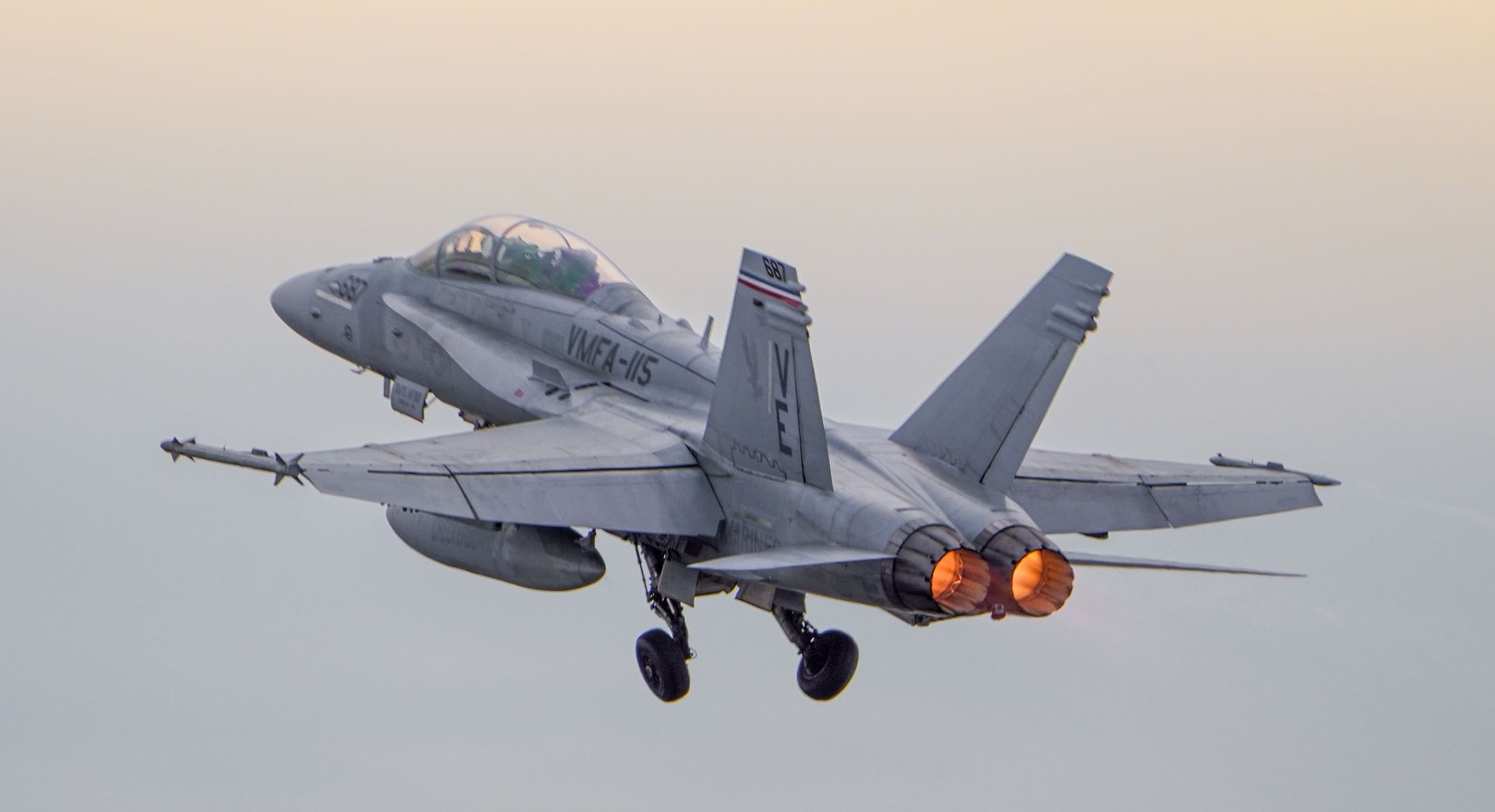
A Qatar Emir Air Force C-17 Globemaster III, F-15 QA and U.S. Air Force KC-135 Stratotanker are on display during an Air Force day event, Feb. 29, 2024. Air Force Day provided military families the opportunity to engage with U.S. service members and coalition partners, and experience AUAB’s mission up close. Events like these reinforce AUAB’s commitment to building enduring relations with regional partners and allies. (U.S. Air Force Courtesy Photo)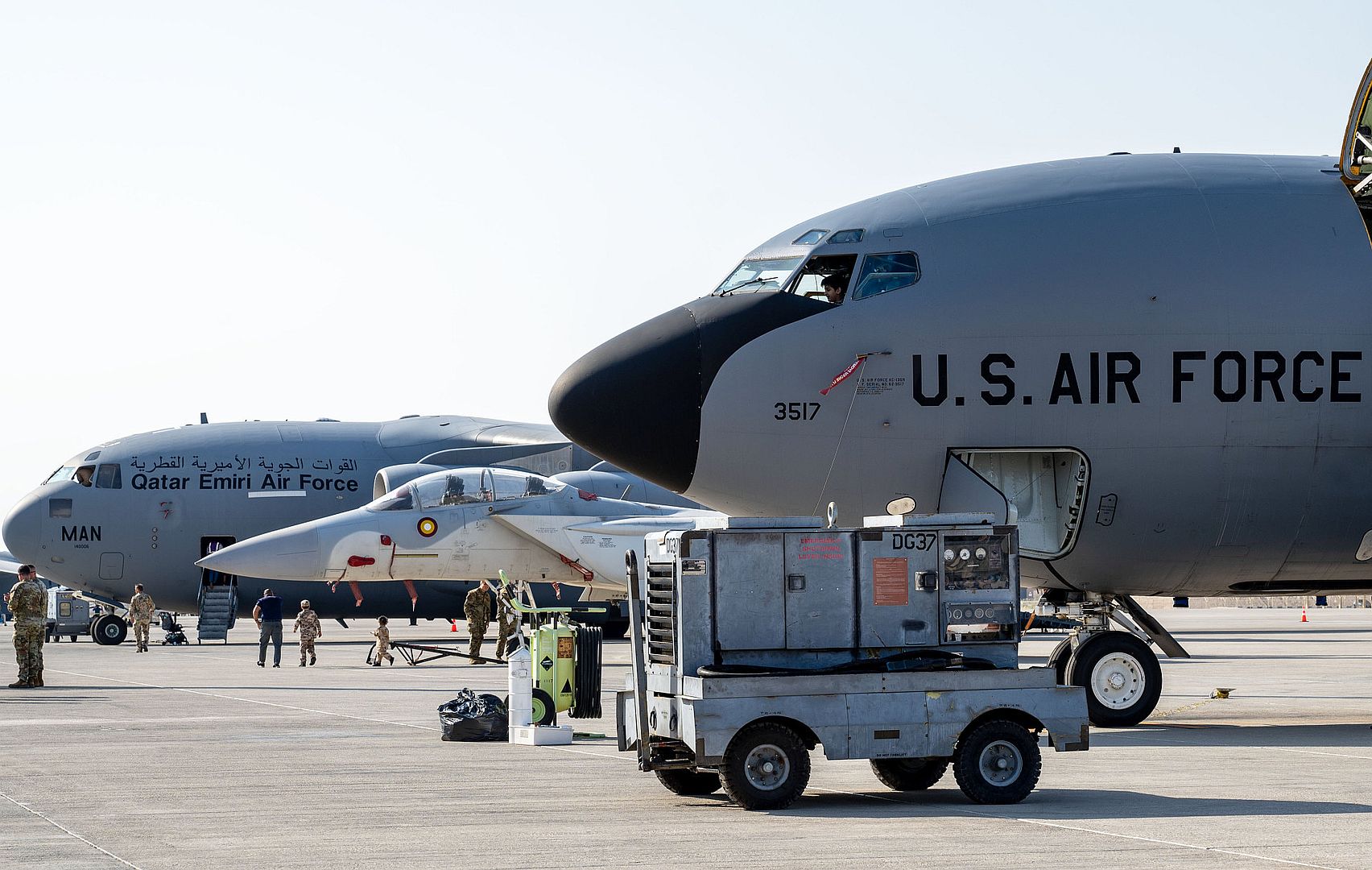
U.S. Air Force Staff Sgt. Alexander Moreto (top left), 28th Aircraft Maintenance Squadron hydraulics craftsman, de-ices a B-1B Lancer before take-off at Luleå-Kallax Air Base, Sweden, Feb. 29, 2024, during Bomber Task Force 24-2. Bomber missions demonstrate the credibility of our forces to address a global security environment that is more diverse and uncertain than at any other time in recent history. BTF operations provide U.S. leaders with strategic options to assure Allies and partners, while deterring potential adversary aggression across the globe. (U.S. Air Force photo by Staff Sgt. Jake Jacobsen)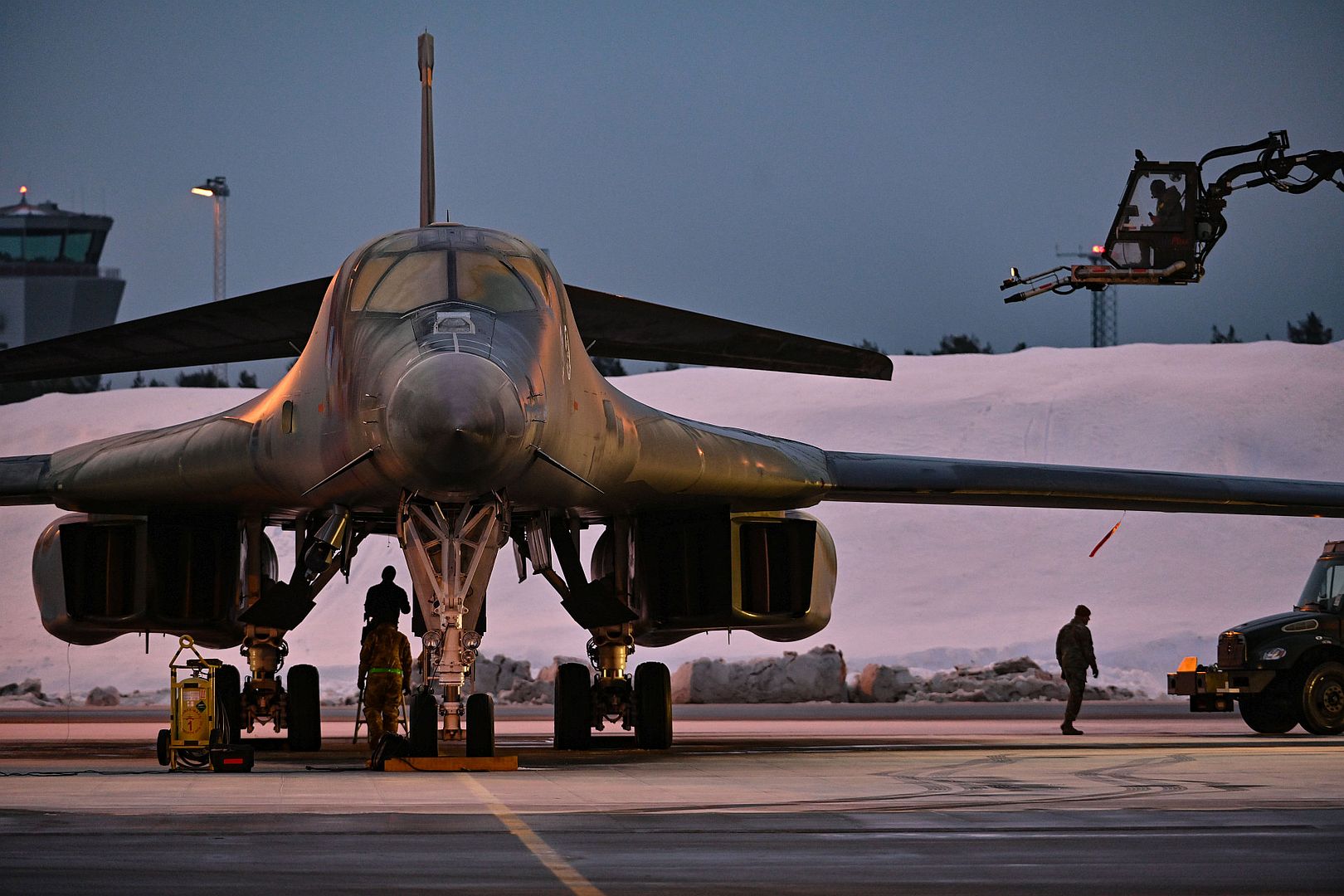
A Royal Netherlands Air Force CH-47 Chinook prepares to take off during a mountain flight training at Aviano Air Base, Italy, Feb. 29, 2024. This two week long training allowed the Royal Netherlands Air Force CH-47 Chinook pilots to train in a mountain environment. (U.S. Air Force photo by Airman 1st Class Joseph Bartoszek)
An MH-60 Jayhawk helicopter crew from Coast Guard Air Station Elizabeth City hovers above during a search and rescue demonstration for the 18th Annual Steven Todd Dooley search and rescue forum in Hampton, Virginia, Feb. 29, 2024. More than 160 first responders and 38 agencies from law enforcement and fire departments across the Commonwealth of Virginia participated in the weeklong event. (U.S. Coast Guard Photo by Petty Officer 2nd Class Ryan L. Noel)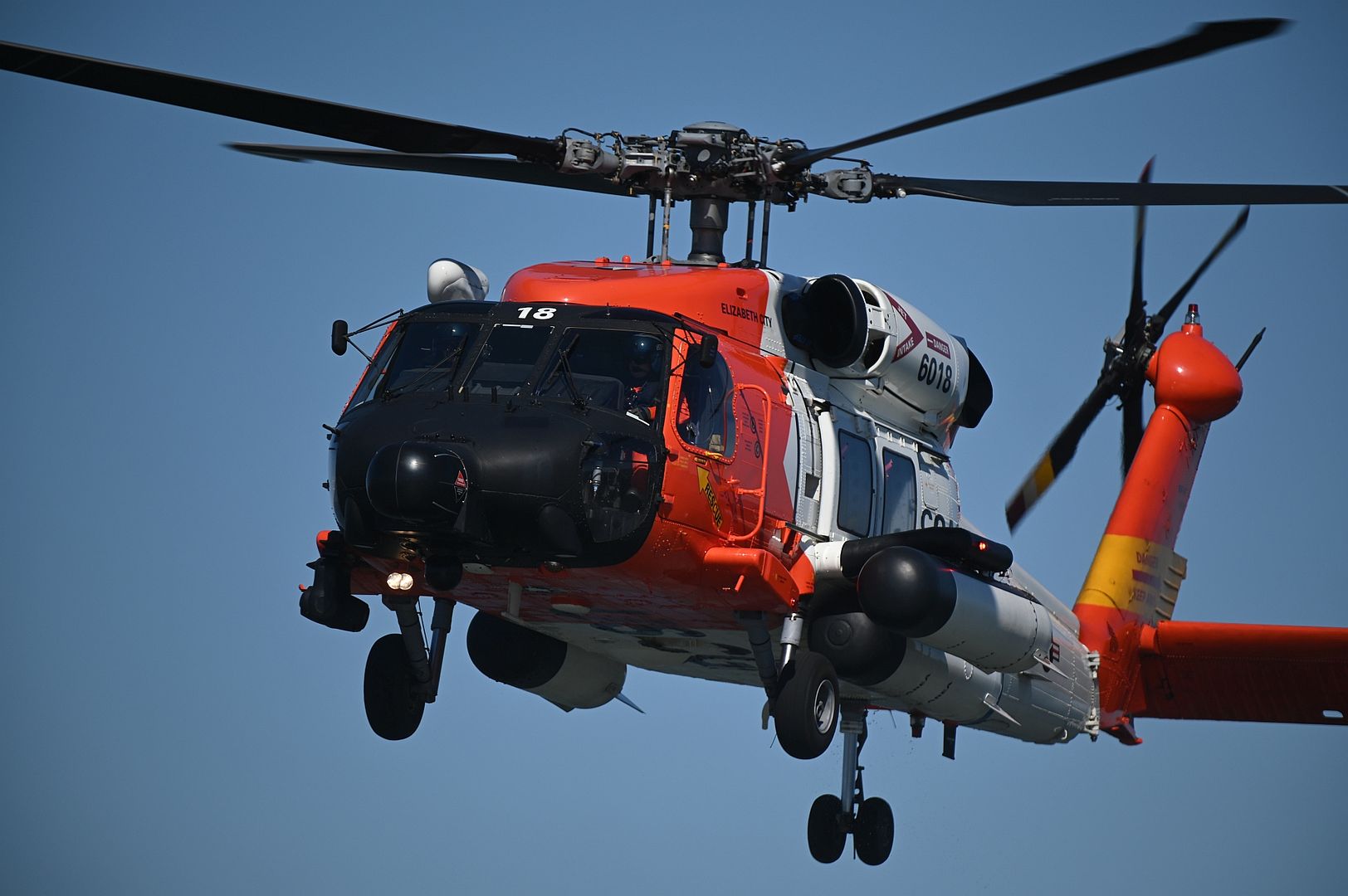
PATUXENT RIVER, Md. (Jan. 11, 2024) Air Test and Evaluation Squadron (VX) 23 flies an F/A-18F Hornet alongside a German air force A400M Atlas tanker aircraft during an air-to-air refueling test aimed at expanding the flight envelope for the European transport and tanker aircraft. VX-23 is flying to clear the entire envelope for all NATO allies flying Atlas, which will allow it to refuel American Hornet, Growler, and Harrier aircraft, ultimately expanding the United States' ability to operate its forces globally. (U.S. Navy photo by Erik Hildebrandt)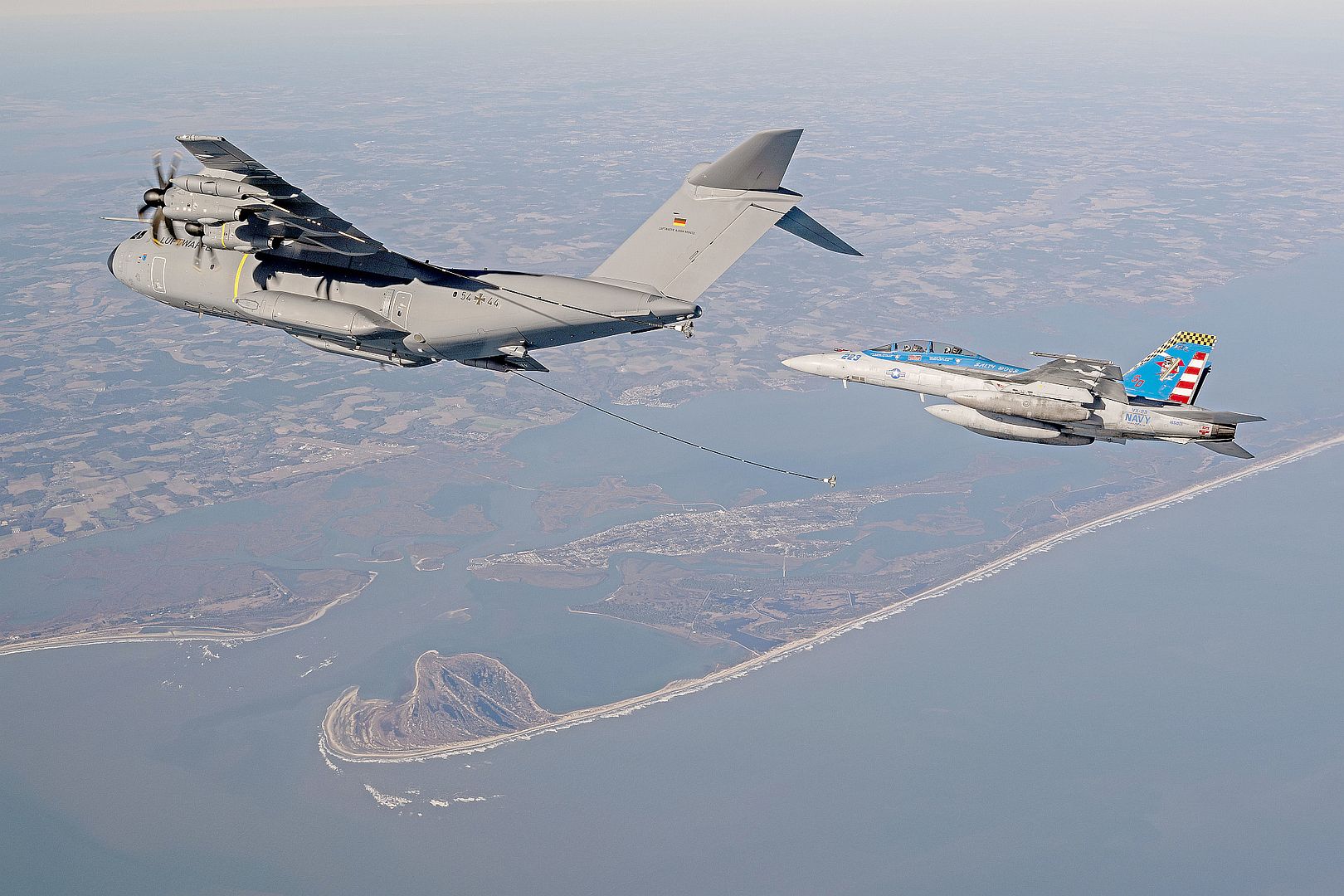
ARLINGTON, Va., Feb. 29, 2024 — The U.S. Navy has awarded Boeing [NYSE: BA] a $3.4 billion contract to begin manufacturing 14 P-8A Poseidon aircraft for the Royal Canadian Air Force and three additional P-8s for the German Navy.
“We are proud to add Canada to the list of international P-8 partners as well as to Germany’s fleet of maritime patrol aircraft,” said Philip June, vice president and program manager, P-8A program. “The Poseidon is a proven aircraft, with more than 600,000 flight hours, that will serve Canada and Germany well in today’s challenging security environment and for decades to come.”
In November 2023, Canada announced its decision to acquire the P-8A Poseidon to replace its current fleet of CP-140 Auroras. The first P-8A for Canada is expected to deliver in 2026.
With the P-8 acquisition, Boeing’s economic commitments to Canada have the potential to generate annual benefits of more than 3,000 jobs for Canadian industry and value-chain partners, and at least $358 million to Canada’s gross domestic product over a 10-year period.
Canada’s Team Poseidon includes CAE, GE Aviation Canada, IMP Aerospace & Defence, KF Aerospace, Honeywell Aerospace Canada, Raytheon Canada, and StandardAero. The team builds on 81 Canadian suppliers to the P-8 platform and more than 550 suppliers across all provinces contributing to Boeing’s annual ~CAD $4 billion in economic benefit to Canada, supporting more than 14,000 Canadian jobs.
“Our global customers require proven advanced capabilities to protect their countries — the P-8 provides that defense,” said Vince Logsdon, vice president, International Business Development for Boeing Defense, Space & Security and Global Services. “Together with our partners, we look forward to delivering this unmatched capability in addition to significant industrial benefits for Canada’s and Germany’s aerospace and defense industries.”
Following the initial procurement of five P-8 aircraft in June 2021, Germany added three additional aircraft to bring the total number of P-8s for the German Navy to eight. The first aircraft will be delivered in 2025, to replace the country’s fleet of P-3 Orions.
In Germany, Boeing has partnered with ESG Elektroniksystem-und Logistik-GmbH and Lufthansa Technik to deliver systems integration, training, support and sustainment work that will bring the highest operational availability to fulfill the German Navy’s missions.
Last year, Boeing and CAE signed teaming agreements to expand multi-mission platform collaboration in Canada, Germany and Norway. These agreements use the complementary capabilities of each company to provide superior management, technical and cost-effective training solutions for the P-8A Poseidon program.
There are 200 P-8s currently in service or on contract across nine countries including the United States, Australia, India, United Kingdom, Norway, New Zealand, Republic of Korea, Germany and Canada.
# # #
As a leading global aerospace company, Boeing develops, manufactures and services commercial airplanes, defense products and space systems for customers in more than 150 countries. As a top U.S. exporter, the company leverages the talents of a global supplier base to advance economic opportunity, sustainability and community impact. Boeing's diverse team is committed to innovating for the future, leading with sustainability, and cultivating a culture based on the company's core values of safety, quality and integrity. Join our team and find your purpose at boeing.com/careers.
Anaheim, CA (March 1, 2024) Bell, a Textron Inc. (NYSE: TXT) company, announced a signed purchase agreement with Equinor for the sale of 10 Bell 525 aircraft for North Sea offshore operations with deliveries expected to begin in 2026.
The 525 offers Equinor superior technological innovation in terms of helicopter safety, reduced CO2 emissions, pilot support systems, passenger comfort and internal and external noise reduction.
“Our relationship with Equinor will enhance the standard of innovation for oil and gas missions and North Sea operations,” said Danny Maldonado, Chief Commercial Officer, Bell. “The Bell 525 technology provides a generational leap forward and will revolutionize offshore oil and gas operations by providing enhanced safety capabilities, reliability and optimized operations.”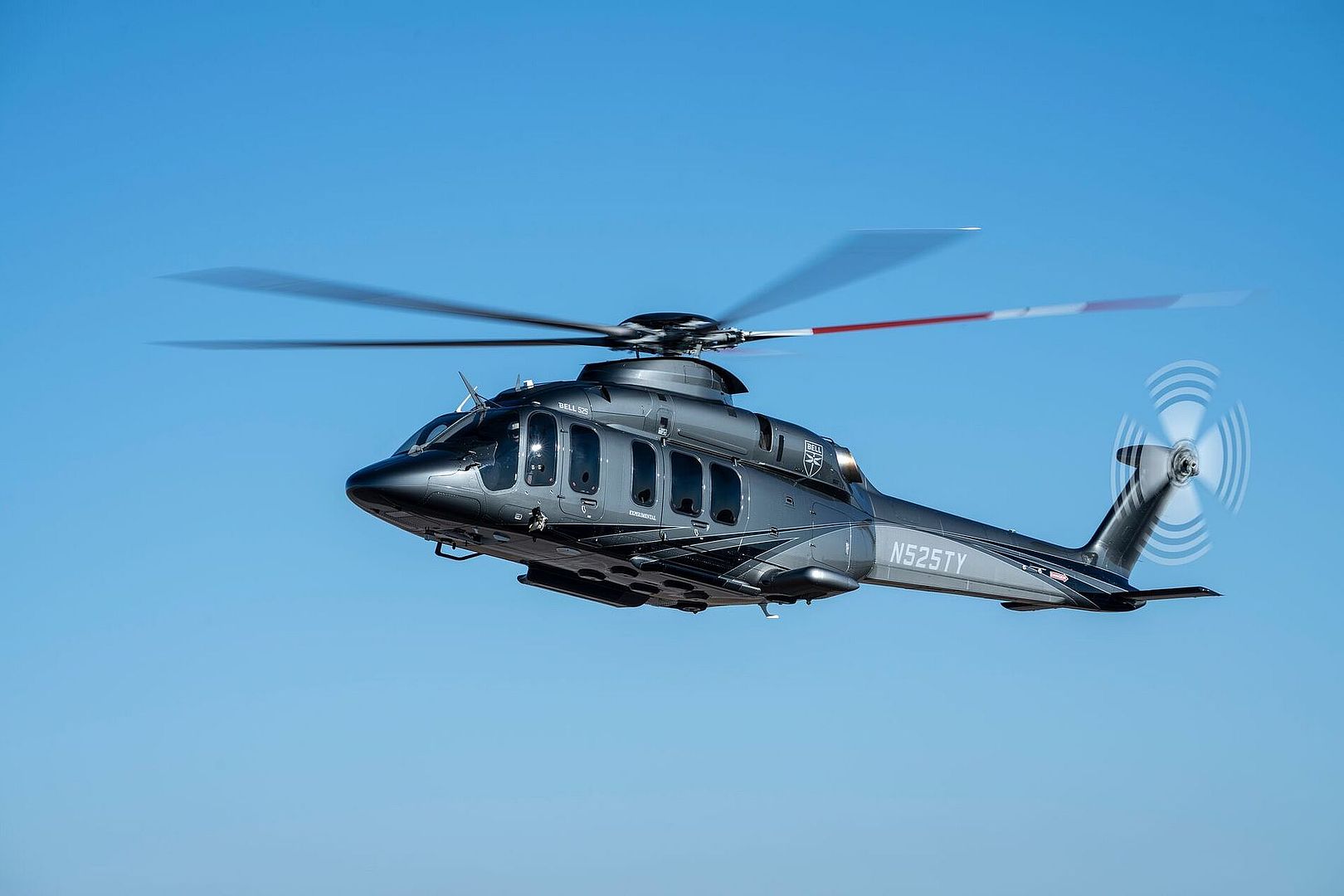
Norwegian Aviation and Defense Group representing Bell in Norway are proud to have supported this breakthrough for Bell 525 to be chosen as the new platform for transport of personnel for the energy sector and Equinor.
“Bell has delivered aircraft and reliable services for more than 30 years to Norwegian operators, both in the government and commercial spheres, and will continue to do the same to the Norwegian Continental Shelf and the Energy sector. We are looking forward to developing this further with Equinor,” says Norwegian Aviation and Defense Group Chief Executive Mr Ole Petter Bakken.
The Bell 525 incorporates fly-by-wire flight controls, industry leading drive system performance and fully integrated vehicle health monitoring. The 525-drive system architecture is also precedent setting; with all high-speed drives removed from the main rotor gearbox to incorporate independent and redundant reduction and accessory drive gearboxes. Bell 525 production is ongoing at Bell’s Amarillo Assembly Center, with offshore-configured aircraft coming off the line in 2024.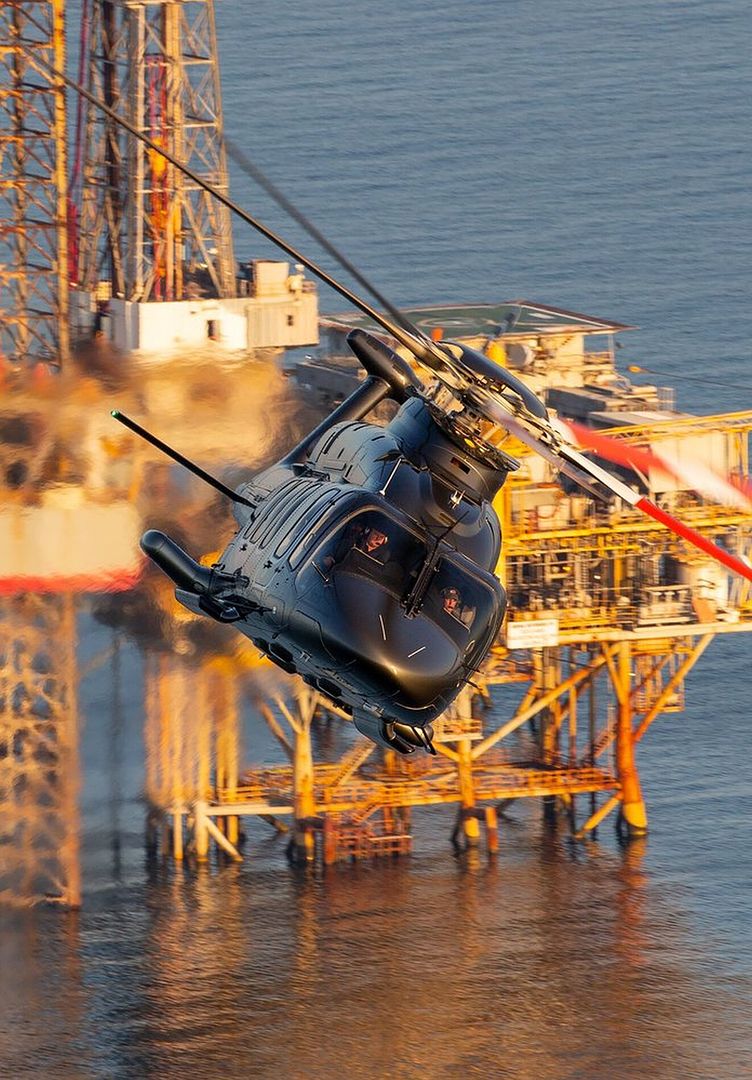
SAN DIEGO – 29 February 2024 – General Atomics Aeronautical Systems, Inc. (GA-ASI) flew the XQ-67A Off-Board Sensing Station (OBSS) for the first time on Feb. 28, 2024. OBSS is an Air Force Research Laboratory (AFRL) program and GA-ASI was selected in 2021 to design, build and fly the new aircraft.
With flight of the AFRL-funded XQ-67A, GA-ASI has validated the “genus/species” concept first developed with AFRL as part of the Low-Cost Attritable Aircraft Platform Sharing (LCAAPS) program focused on building several aircraft variants from a common core chassis.
Under LCAAPS, AFRL and GA-ASI explored development of a chassis, termed a “genus”, as the foundational core architecture from which several “species” of aircraft can be built.
“This provides an alternative acquisition approach for military aircraft that enables faster development, lower costs and more opportunities for frequent technology refresh,” said Trenton White, OBSS Program Manager and aerospace engineer in AFRL’s Aerospace Systems Directorate. “XQ-67A is the first "species" to be designed and built from this shared platform. Flight demonstration of this system is a major first step toward showing the ability to produce affordable combat mass.”
“OBSS is the first aircraft type built and flown using a common core chassis developed by GA-ASI that promotes commonality across multiple vehicle types,” said GA-ASI Vice President of Advanced Programs Michael Atwood.
Distribution Statement A: Approved for Public Release; Distribution is Unlimited. PA# AFRL-2024-0708
About GA-ASI
General Atomics Aeronautical Systems, Inc. (GA-ASI), an affiliate of General Atomics, is a leading designer and manufacturer of proven, reliable RPA systems, radars, and electro-optic and related mission systems, including the Predator® RPA series and the Lynx® Multi-mode Radar. With more than eight million flight hours, GA-ASI provides long-endurance, mission-capable aircraft with integrated sensor and data link systems required to deliver persistent situational awareness. The company also produces a variety of sensor control/image analysis software, offers pilot training and support services, and develops meta-material antennas.
For more information, visit www.ga-asi.com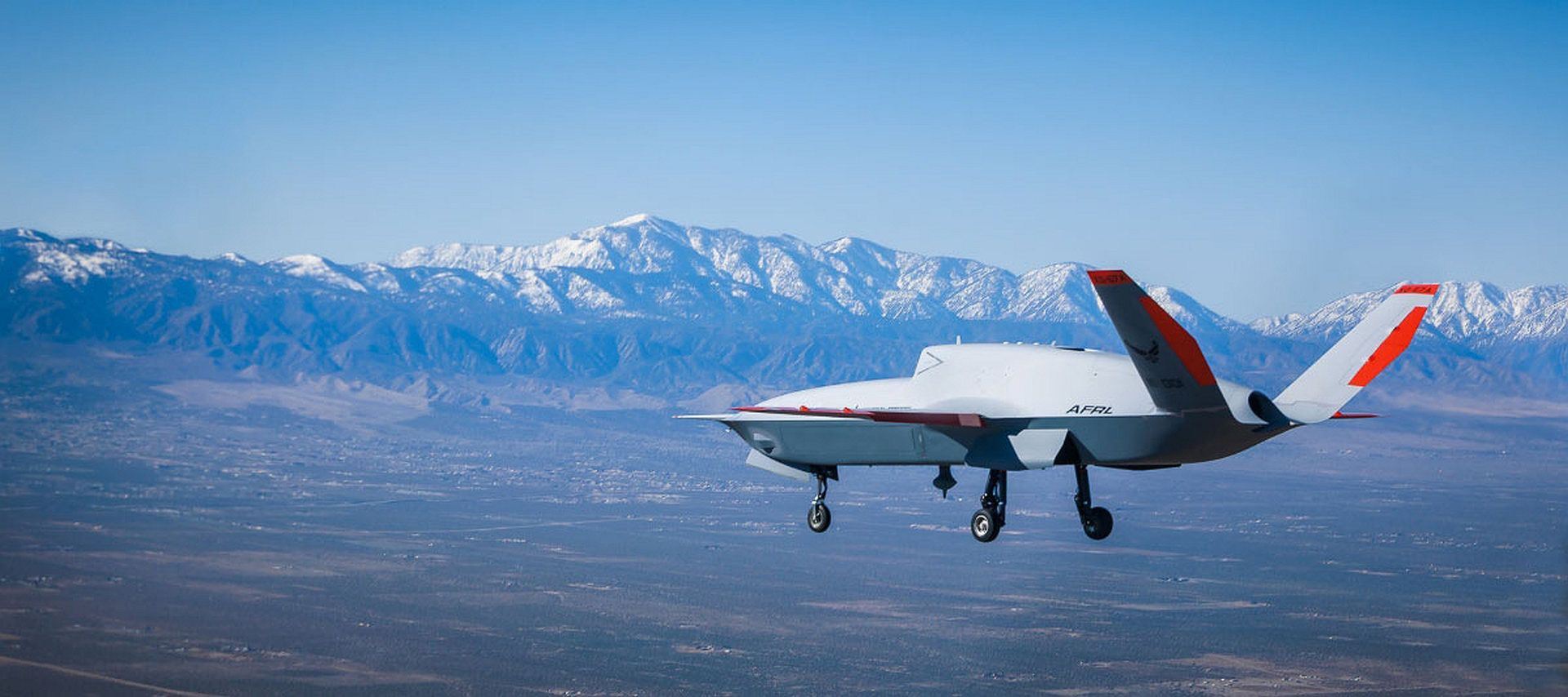
-
1 year agoMon Mar 04 2024, 09:22pmDuggy
 Main AdminA Nepali Army Mi-17 and Airbus H125 helicopters perform a simulated air assault for a peacekeeping operations demonstration during Shanti Prayas IV at the Birendra Peace Operations Training Centre on March 1, 2024. The demonstration included a convoy ambush response, village protection, casualty evacuation, and hostage rescue to showcase the multi-range capabilities and skillset of peacekeepers. Shanti Prayas IV is a multinational peacekeeping exercise sponsored by the Nepali Army and U.S. Indo-Pacific Command and is the latest in a series of exercises designed to support peacekeeping operations. (U.S. Marine Corps photo by Lance Cpl John Hall)
Main AdminA Nepali Army Mi-17 and Airbus H125 helicopters perform a simulated air assault for a peacekeeping operations demonstration during Shanti Prayas IV at the Birendra Peace Operations Training Centre on March 1, 2024. The demonstration included a convoy ambush response, village protection, casualty evacuation, and hostage rescue to showcase the multi-range capabilities and skillset of peacekeepers. Shanti Prayas IV is a multinational peacekeeping exercise sponsored by the Nepali Army and U.S. Indo-Pacific Command and is the latest in a series of exercises designed to support peacekeeping operations. (U.S. Marine Corps photo by Lance Cpl John Hall)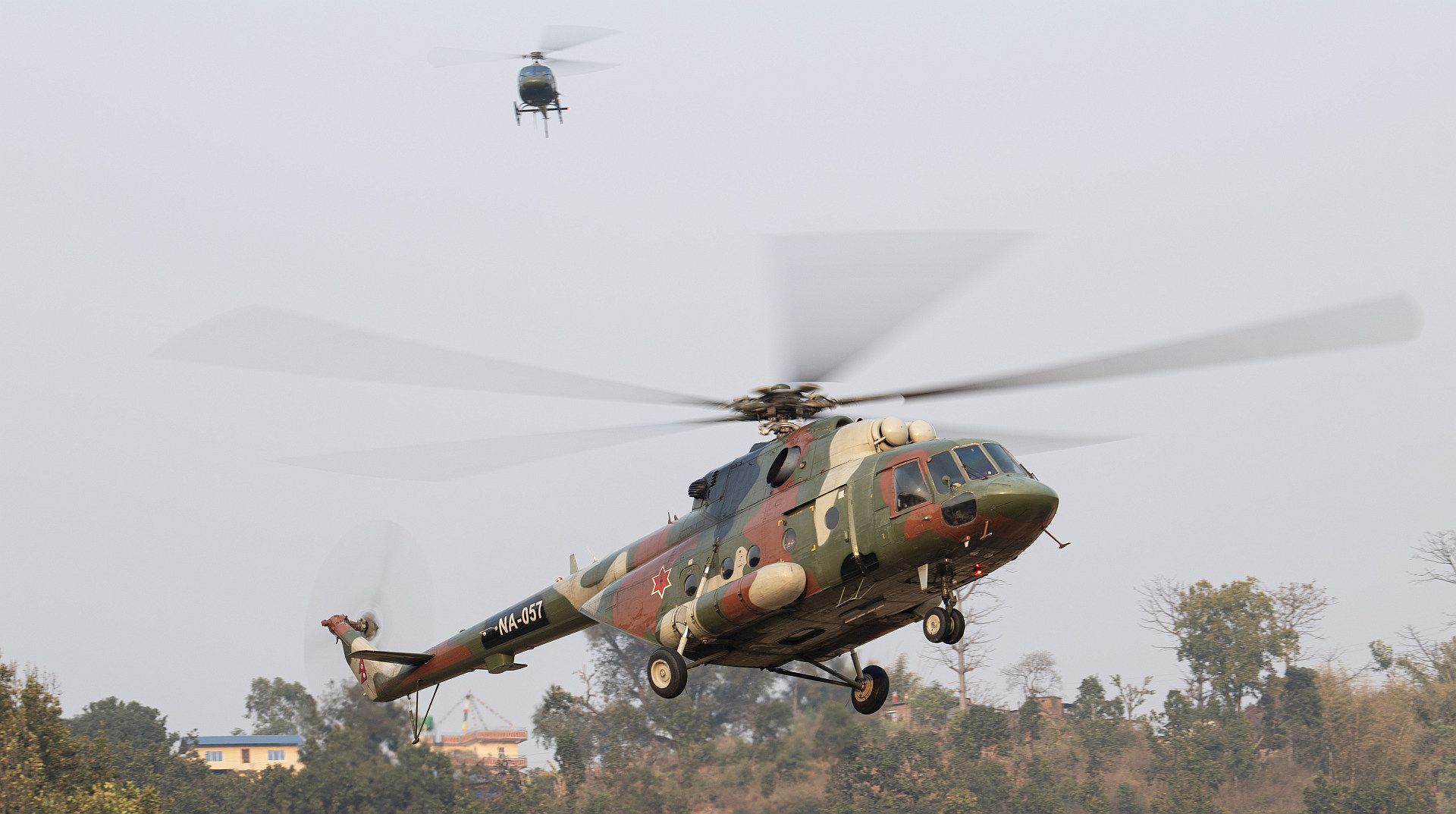
A Nepali Army Airbus H125 helicopter lands while conducting a simulated casualty evacuation for a peacekeeping operations demonstration during Shanti Prayas IV at the Birendra Peace Operations Training Centre on March 1, 2024. The demonstration included a convoy ambush response, village protection, casualty evacuation, and hostage rescue to showcase the multi-range capabilities and skillset of peacekeepers. Shanti Prayas IV is a multinational peacekeeping exercise sponsored by the Nepali Army and U.S. Indo-Pacific Command and is the latest in a series of exercises designed to support peacekeeping operations. (U.S. Marine Corps photo by Lance Cpl John Hall)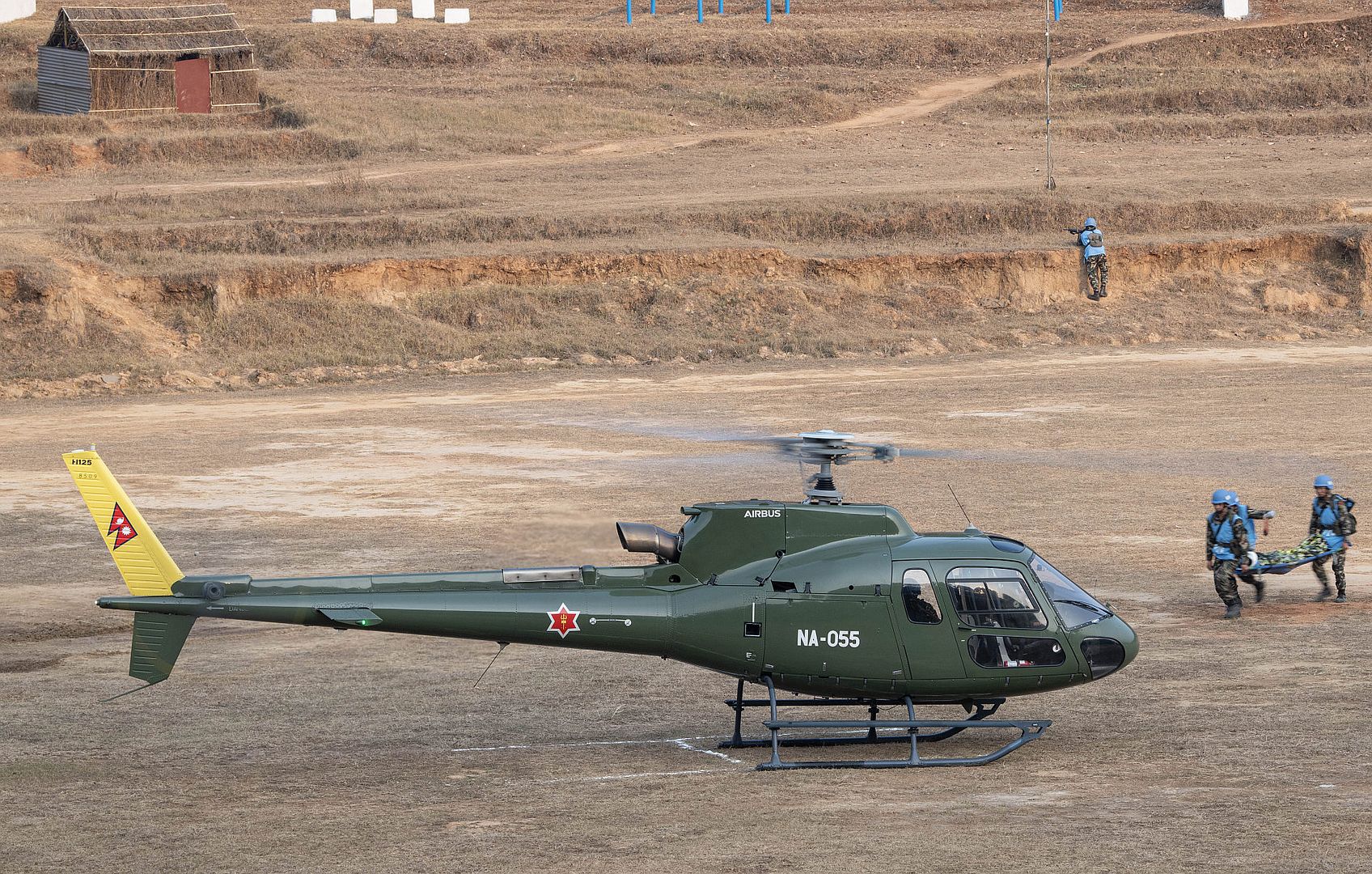
PHILIPPINE SEA (March 1, 2024) An F/A-18E Super Hornet, assigned to the “Blue Blasters” of Strike Fighter Squadron (VFA) 34, approaches the Nimitz-class aircraft carrier USS Theodore Roosevelt (CVN 71), March 1, 2024. Theodore Roosevelt, flagship of Carrier Strike Group Nine, is underway conducting routine operations in the U.S. 7th Fleet area of operations. U.S. 7th Fleet is the U.S. Navy’s largest forward-deployed numbered fleet, and routinely interacts and operates with allies and partners in preserving a free and open Indo-Pacific region. (U.S. Navy photo by Mass Communication Specialist 3rd Class Adina Phebus)_34_approaches_the_Nimitz-class_aircraft_carrier_USS_Theodore_Roosevelt.jpg?width=1920&height=1080&fit=bounds)
PHILIPPINE SEA (March 1, 2024) U.S. Navy Cmdr. Haywood Foard, outgoing commanding officer of the “Flying Checkmates” of Strike Fighter Squadron (VFA) 211, takes off in an F/A-18E Super Hornet during his change of command ceremony aboard the Nimitz-class aircraft carrier USS Theodore Roosevelt (CVN 71), March 1, 2024. During the ceremony, Foard was relieved by Cmdr. Sean Stuart. Theodore Roosevelt, flagship of Carrier Strike Group Nine, is underway conducting routine operations in the U.S. 7th Fleet area of operations. U.S. 7th Fleet is the U.S. Navy’s largest forward-deployed numbered fleet, and routinely interacts and operates with allies and partners in preserving a free and open Indo-Pacific region. (U.S. Navy photo by Mass Communication Specialist 3rd Class John A. Miller)
A U.S. Air Force C-130J Super Hercules loaded with humanitarian aid bound for airdrop over Gaza takes off from an undisclosed location in Southwest Asia, March 2, 2024. U.S. Central Command regularly supports U.S. government interagency partners by delivering humanitarian aid throughout the region. The U.S. Air Force’s rapid global mobility capability enables the expedited movement of critical, life-saving supplies to Gaza. (U.S. Air Force Courtesy photo)
Capt. Bjorn Nielsen, 80th Fighter Squadron F-16 Fighting Falcon pilot, taxis for departure to participate in an amphibious assault exercise during Joint Exercise Cobra Gold 24 at Korat Royal Thai Air Force Base, Kingdom of Thailand, March 1, 2024. Cobra Gold 24 demonstrates the combined force’s ongoing readiness to project forces throughout the region in support of allies and partners to ensure a free and open Indo-Pacific. (U.S. Air Force photo by Senior Airman Karla Parra)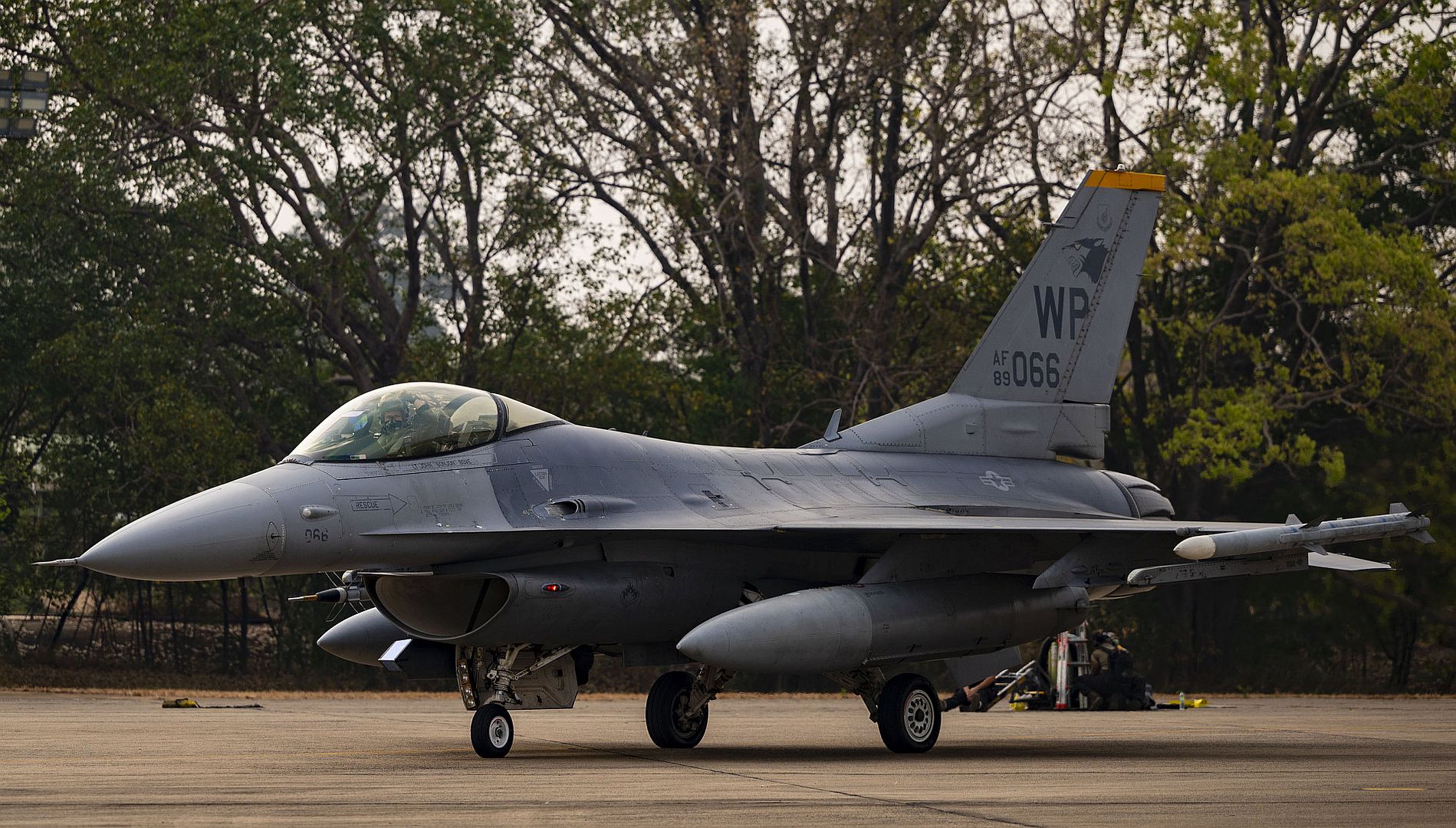
F-35A Lightning II pilots assigned to the 134th Fighter Squadron, 158th Fighter Wing, Vermont Air National Guard enter their aircrafts at the South Burlington Air National Guard Base, South Burlington, Vermont on March 2, 2024. The VTANG conducted air operations so that its pilots and ground crew can remain ready and proficient. (U.S. Air National Guard photo by Staff Sgt. Patrick Crosley)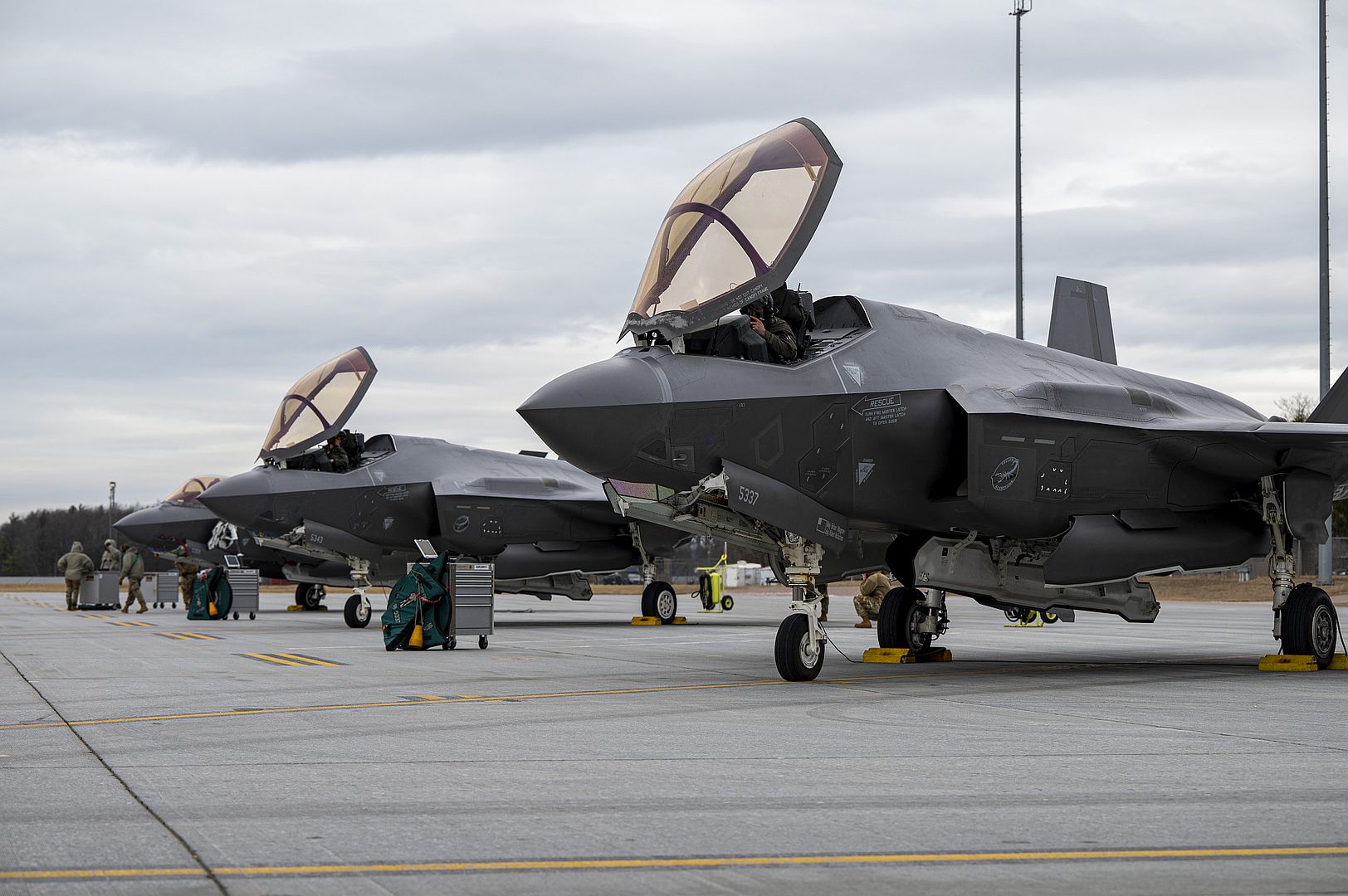
An F-35A Lightning II aircraft flies alongside two P-51 Mustang aircrafts during the Heritage Flight Training Course at Davis-Monthan Air Force Base, Ariz., March 1, 2024. During HFTC, aircrew practice ground and flight training to enable civilian pilots of historic military aircraft and U.S. Air Force pilots of current fighter aircraft to fly safely in formations together. (U.S. Air Force photo by Airman 1st Class William Finn)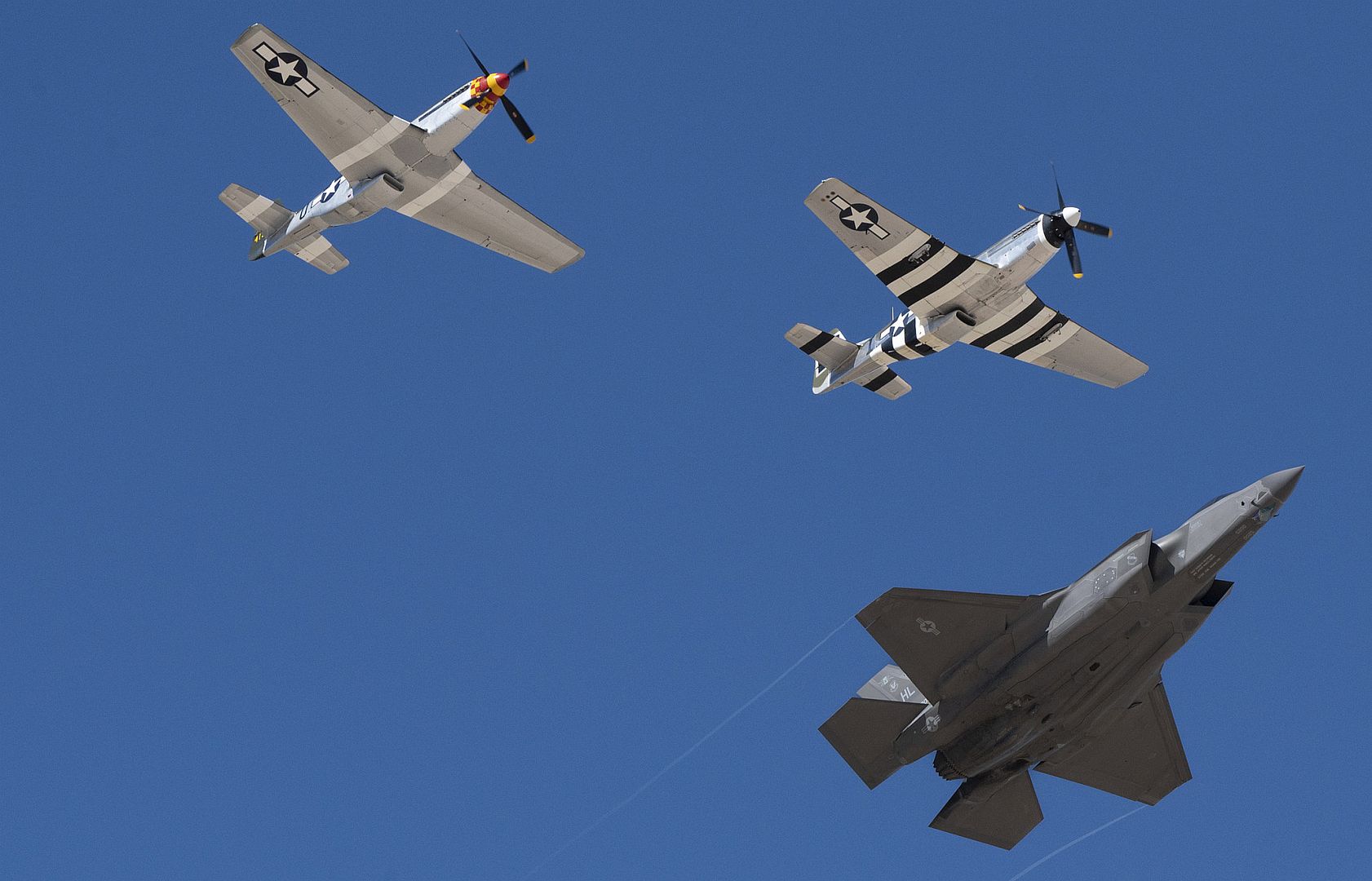
A U.S. Air Force F-35 Lightning II assigned to Eielson Air Force Base, Alaska, parks at Royal Brunei Air Force Base Rimba, Brunei, Brunei, March 1, 2024. This was the first time a U.S. fighter aircraft landed in Brunei and represents a new model of international cooperation, ensuring U.S. and Coalition partner security well into the 21st Century. (U.S. Air Force photo by Tech. Sgt. Eric Summers Jr.)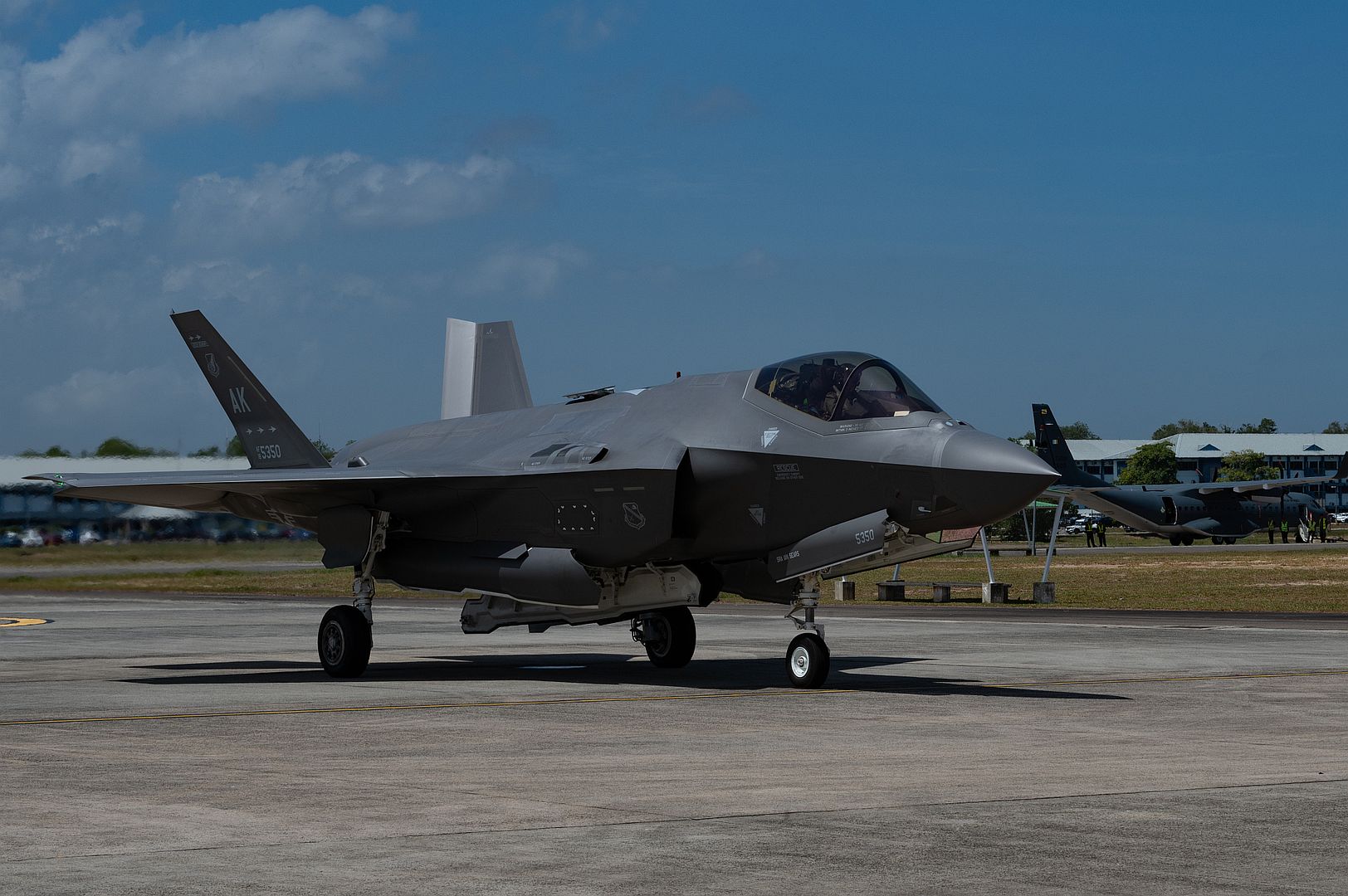
PHILIPPINE SEA (Feb. 24, 2024) A U.S. Air Force B-52 Stratofortress attached to the 5th Bomb Wing and aircraft attached to Carrier Air Wing (CVW) 11 fly in formation over the Nimitz-class aircraft carrier USS Theodore Roosevelt (CVN 71) in the Philippine Sea, Feb. 24, 2024. Theodore Roosevelt, flagship of Carrier Strike Group Nine, is underway conducting routine operations in the U.S. 7th Fleet area of operations. U.S. 7th Fleet is the U.S. Navy's largest forward-deployed numbered fleet, and routinely interacts and operates with allies and partners in preserving a free and open Indo-Pacific region. (U.S. Navy photo by Mass Communication Specialist 1st Class Thomas Gooley)_11_fly_in_formation_over_the_Nimitz-class_aircraft_carrier_USS_Theodore_Roosevelt.jpg?width=1920&height=1080&fit=bounds)
SEATTLE, March 4, 2024 /PRNewswire/ -- Boeing [NYSE: BA] and American Airlines announced today the carrier will further modernize its global fleet with its first order for the largest 737 MAX airplane. American is committing to 115 of the 737-10 model, which includes a new order for 85 jets and a conversion of a previous order for 30 of the smaller 737-8 variant. The airline is also announcing options to purchase 75 additional 737-10 jets in the future.
"Over the past decade, we have invested heavily to modernize and simplify our fleet, which is the largest and youngest among U.S. network carriers," said American's CEO Robert Isom. "These orders will continue to fuel our fleet with newer, more efficient aircraft so we can continue to deliver the best network and record-setting operational reliability for our customers."
With this agreement, American will more than double its 737 MAX order book from about 70 airplanes to more than 150, supporting the airline's long-term growth strategy with highly efficient jets for its domestic and short-haul international network. The 737-10 will complement American's current fleet of 737-8 airplanes, allowing the airline to tap into the 737 MAX family's commonality and flexibility to efficiently meet growing travel demand.
737-8: Delivering improvements in fuel, emissions and cost performance, the 737-8 can fly 3,500 nautical miles (6,480 km) and seats 162 to 210 passengers depending on configuration.
737-10: Offering the best per-seat economics of any single-aisle airplane, the 737-10 can carry up to 230 passengers and offers a range of up to 3,100 nautical miles (5,740 km).
"We deeply appreciate American Airlines' trust in Boeing and its confidence in the 737 MAX family. American's selection of the 737-10 will provide even greater efficiency, commonality and flexibility for its global network and operations," said Stan Deal, president and CEO of Boeing Commercial Airplanes. "Our team here at Boeing is committed to delivering on this new order and supporting American's strategic growth with one of the industry's largest and most modern fleets."
With firm orders for more than 150 737 MAXs and 25 787 Dreamliners, American will add more than 180 Boeing airplanes to its fleet in the next decade.
As a leading global aerospace company, Boeing develops, manufactures and services commercial airplanes, defense products and space systems for customers in more than 150 countries. As a top U.S. exporter, the company leverages the talents of a global supplier base to advance economic opportunity, sustainability and community impact. Boeing's diverse team is committed to innovating for the future, leading with sustainability, and cultivating a culture based on the company's core values of safety, quality and integrity. Join our team and find your purpose at boeing.com/careers.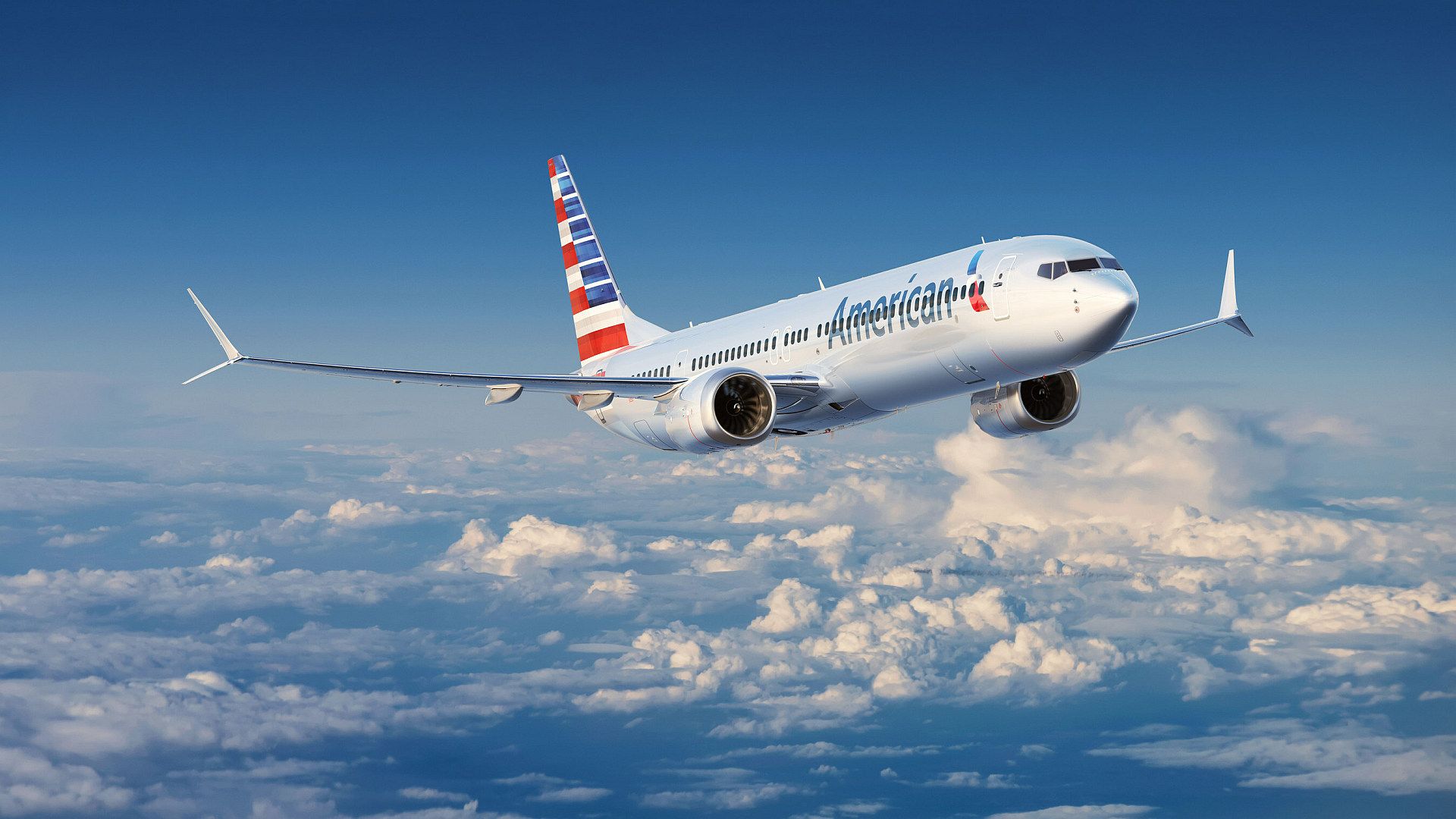
Toulouse, France/Herndon, Virginia, 4 March 2024 - American Airlines, has signed a firm order for an additional 85 A321neo aircraft, taking its total order for the aircraft type to 219 aircraft.
“Over the past decade, we have invested heavily to modernise and simplify our fleet, which is the largest and youngest among U.S. network carriers,” said American’s CEO Robert Isom. “These orders will continue to fuel our fleet with newer, more efficient aircraft so we can continue to deliver the best network and record-setting operational reliability for our customers.”
“The continued investment in the A321neo is a testament to the unprecedented value of the world’s most versatile and capable single aisle aircraft,” said Benoît de Saint-Exupéry, EVP Sales, Commercial Aircraft, Airbus. “For nearly two decades, American Airlines has used its A320 Family of aircraft, some of which have been produced in the U.S. in Mobile, Alabama, to grow its domestic and short-haul international network and provide an exceptional experience for its passengers and crews.”
American Airlines took delivery of its first A321neo in February 2019, and 70 have been delivered as of January 31, 2024. The airline is the world's largest operator of A320 Family aircraft, the world’s largest A321 operator (CEO and NEO) and the largest customer for the A321neo in North America.
The A321neo is the largest member of Airbus’ A320neo Family, offering unparalleled range and performance. By incorporating new generation engines and Sharklets, the A321neo brings a 50% noise reduction and more than 20% fuel savings and CO₂ reduction compared to previous generation single-aisle aircraft, while maximising passenger comfort in the widest single-aisle cabin in the sky. To date more than 6,100 A321neos have been ordered by more than 90 customers across the globe.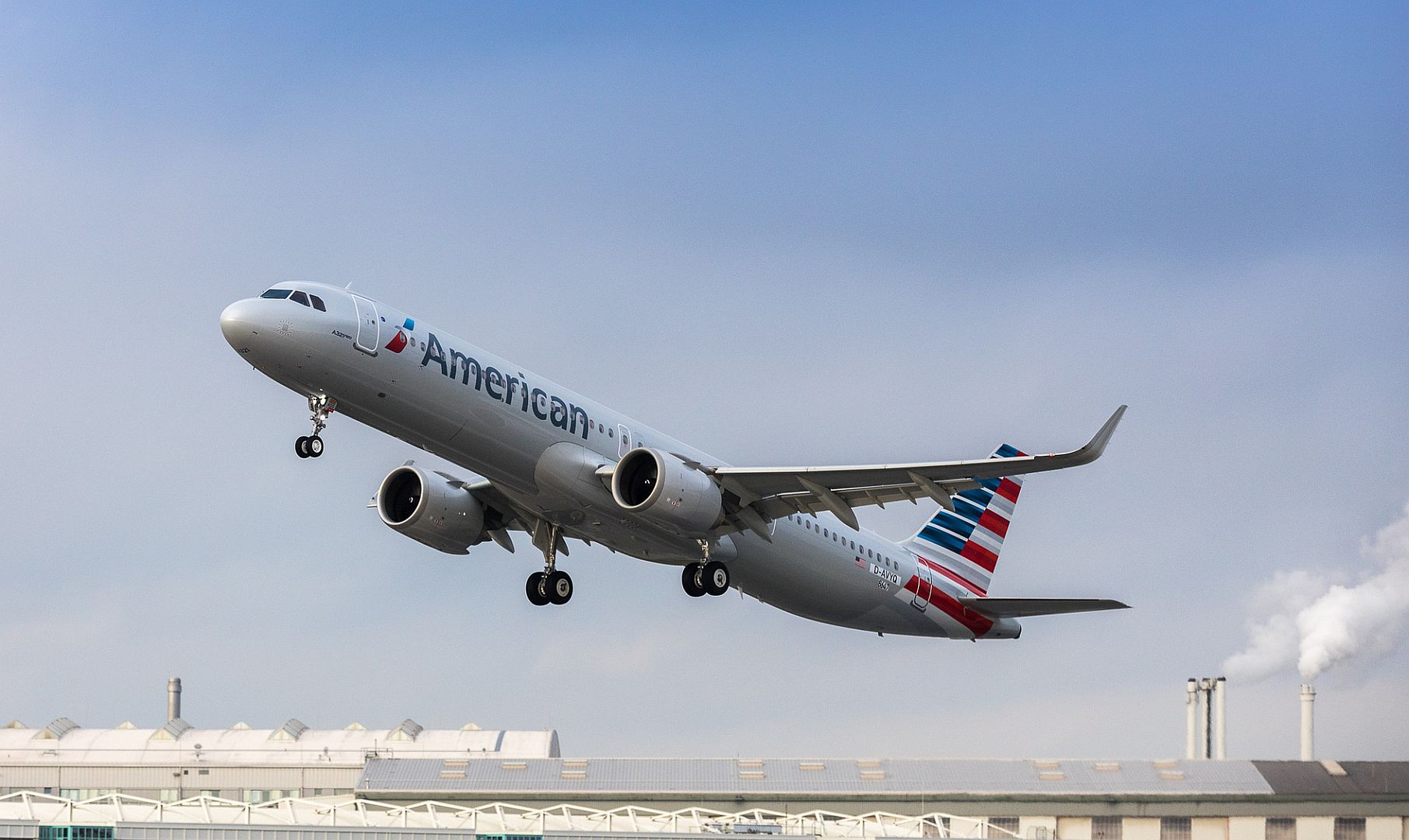
São José dos Campos, Brazil, March 4, 2024 – Embraer (NYSE: ERJ; B3: EMBR3) has secured a major order for 133 aircraft from American Airlines Group Inc. (NASDAQ: AAL) to meet domestic demand in the United States. American has placed a firm order with Embraer for 90 E175s, with purchase rights for 43 additional jets. The aircraft will be delivered with 76 seats in American’s standard dual-class configuration. The deal, with all purchase rights exercised, is worth more than US$7bn at list price, and the firm orders will be included in Embraer’s 1Q24 backlog.
The E175 is one of the most popular aircraft in the region, with 837 aircraft sold (including today’s firm order for 90) and 88% market share since 2013.
“Over the past decade, we have invested heavily to modernize and simplify our fleet, which is the largest and youngest among U.S. network carriers,” said American’s CEO Robert Isom. “These orders will continue to fuel our fleet with newer, more efficient aircraft so we can continue to deliver the best network and record-setting operational reliability for our customers.”
American is focused on bringing larger dual-class regional aircraft into its fleet, which will continue to drive connectivity from smaller markets to the rest of the airline’s global network. American expects to retire all of its 50-seat single-class regional jets by the end of the decade and will continue to serve small and medium-sized markets with larger regional jets.
Dual-class regional jets are expected to make up American’s regional fleet once the new Embraer E175 deliveries are completed.
Arjan Meijer, President and CEO Embraer Commercial Aviation, said, “The E175 is truly the backbone of the U.S. aviation network, connecting all corners of the country. One of the world’s most successful aircraft programs, the E175 was upgraded with a series of modifications that improved fuel burn by 6.5%. This modern, comfortable, reliable, and efficient aircraft continues to deliver the connectivity the U.S. depends on day after day. This represents American’s largest-ever single order of E175s, and we thank American for its continued trust in our products and people.”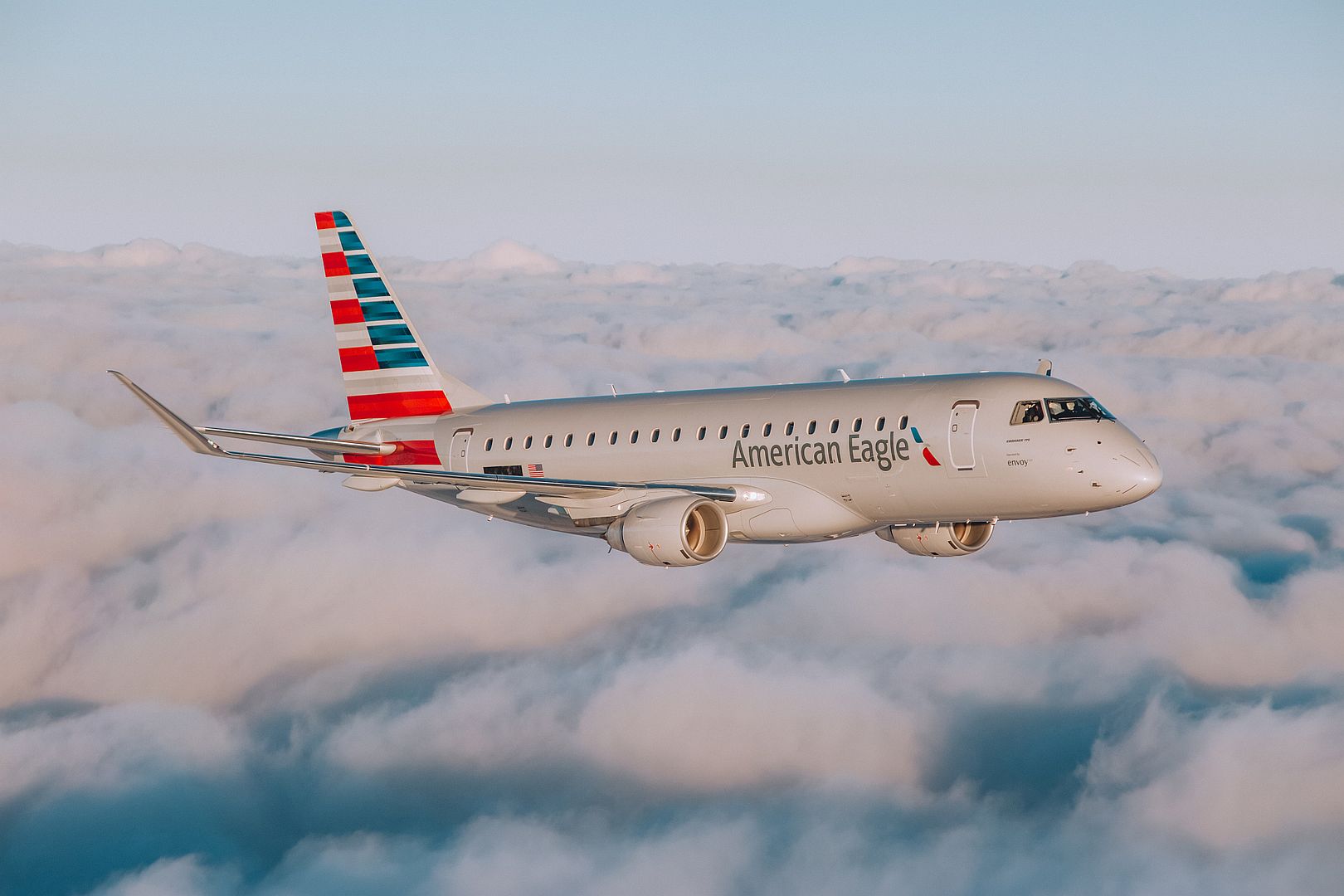
About Embraer
Embraer is a global aerospace company headquartered in Brazil. It manufactures aircraft for Commercial and Executive aviation, Defense & Security, and Agricultural customers. The company also provides after-sales services & support through a worldwide network of wholly owned entities and authorized agents.
Since it was founded in 1969, Embraer has delivered more than 8,000 aircraft. On average, about every 10 seconds an aircraft manufactured by Embraer takes off somewhere in the world, transporting over 145 million passengers a year.
Embraer is the leading manufacturer of commercial jets up to 150 seats and is the main exporter of high value-added goods in Brazil. The company maintains industrial units, offices, service and parts distribution centers across the Americas, Africa, Asia, and Europe.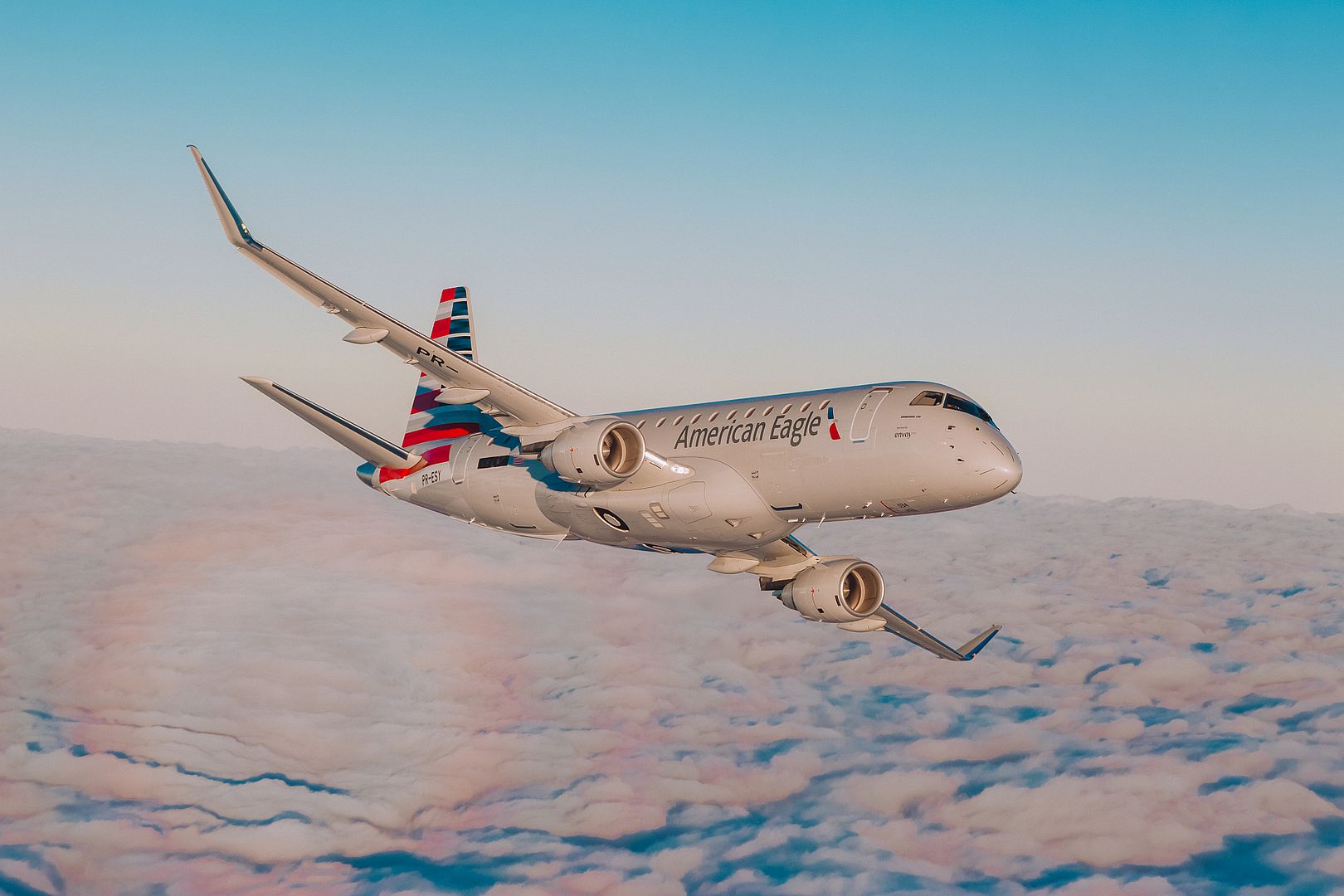
-
1 year agoTue Mar 05 2024, 09:01pmDuggy
 Main AdminA B-52H Stratofortress assigned to the 5th Bomb Wing, Minot Air Force Base, North Dakota, receives aerial refueling from a 909th Air Refueling Squadron KC-135 Stratotanker during a routine Bomber Task Force mission over the Pacific Ocean, March 3, 2024. BTF missions enhance global stability and readiness through versatile operations in diverse environments. (U.S. Air Force photo by Staff Sgt. Jessi Roth)
Main AdminA B-52H Stratofortress assigned to the 5th Bomb Wing, Minot Air Force Base, North Dakota, receives aerial refueling from a 909th Air Refueling Squadron KC-135 Stratotanker during a routine Bomber Task Force mission over the Pacific Ocean, March 3, 2024. BTF missions enhance global stability and readiness through versatile operations in diverse environments. (U.S. Air Force photo by Staff Sgt. Jessi Roth)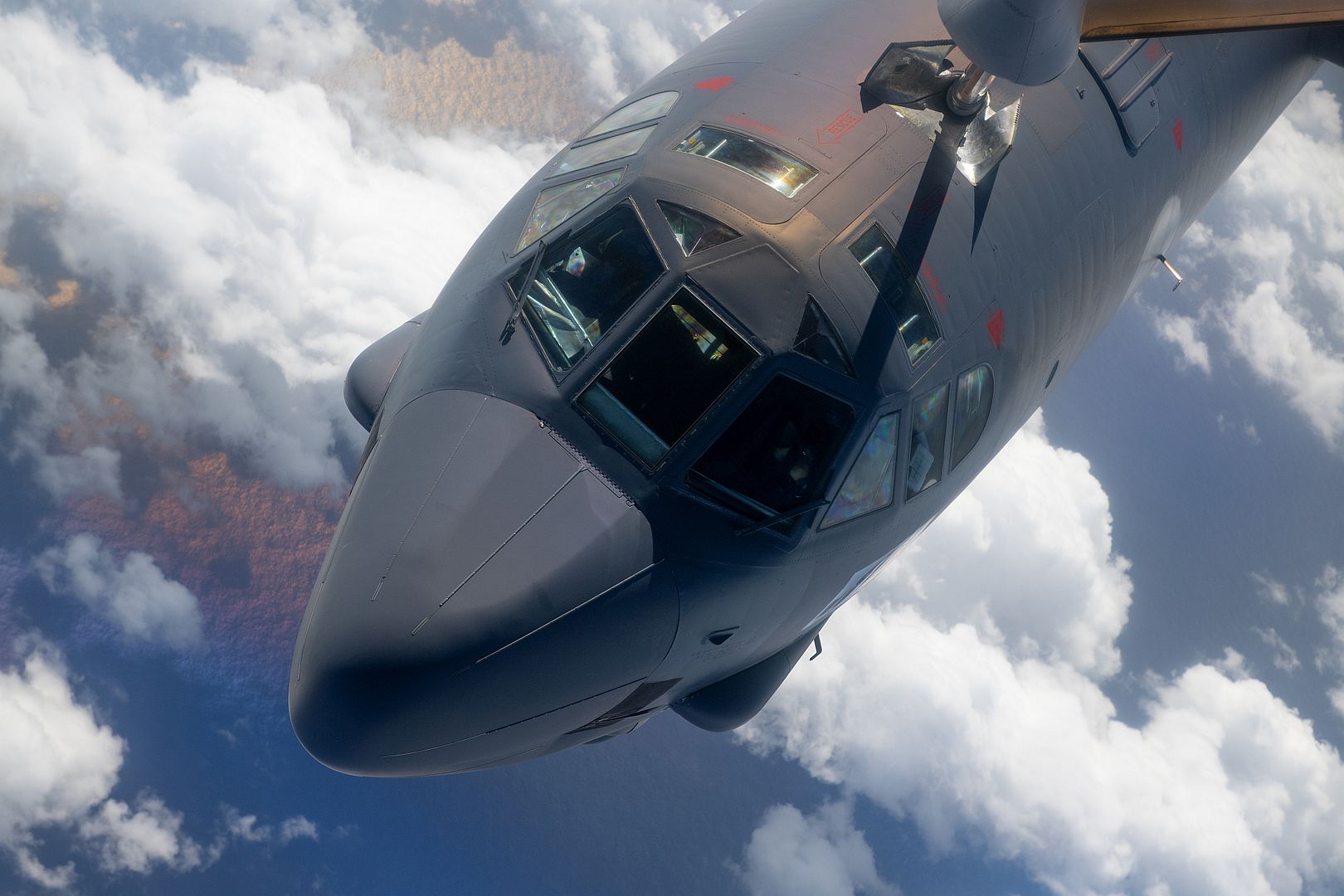
A B-52H Stratofortress assigned to the 5th Bomb Wing, Minot Air Force Base, North Dakota, departs after aerial refueling during a routine Bomber Task Force mission over the Pacific Ocean, March 3, 2024. BTF missions are designed to showcase the Pacific Air Force’s ability to deter, deny, and dominate any influence or aggression from adversaries. (U.S. Air Force photo by Staff Sgt. Jessi Roth)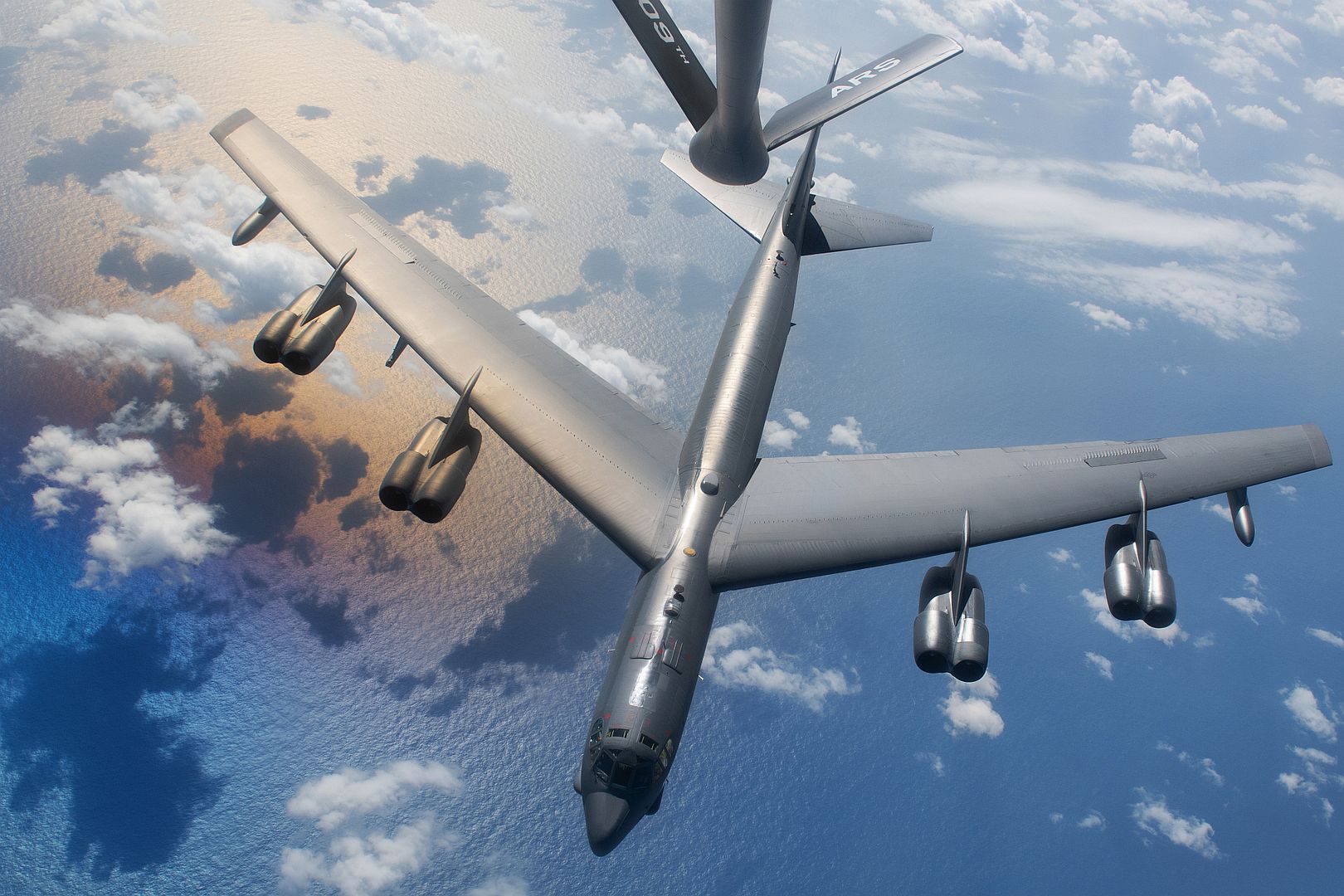
U.S. Air Force Capt. Melanie Kluesner, F-35A Lightning II Demonstration Team pilot, prepares for take off during the Heritage Flight Training Course at Davis-Monthan Air Force Base, Ariz., March 1, 2024. The F-35A Demonstration Team aims to showcase the unique aerial capabilities of the Air Force’s newest 5th generation, multi-role stealth fighter to a global audience. (U.S. Air Force photo by Airman 1st Class Evelyn D'Errico)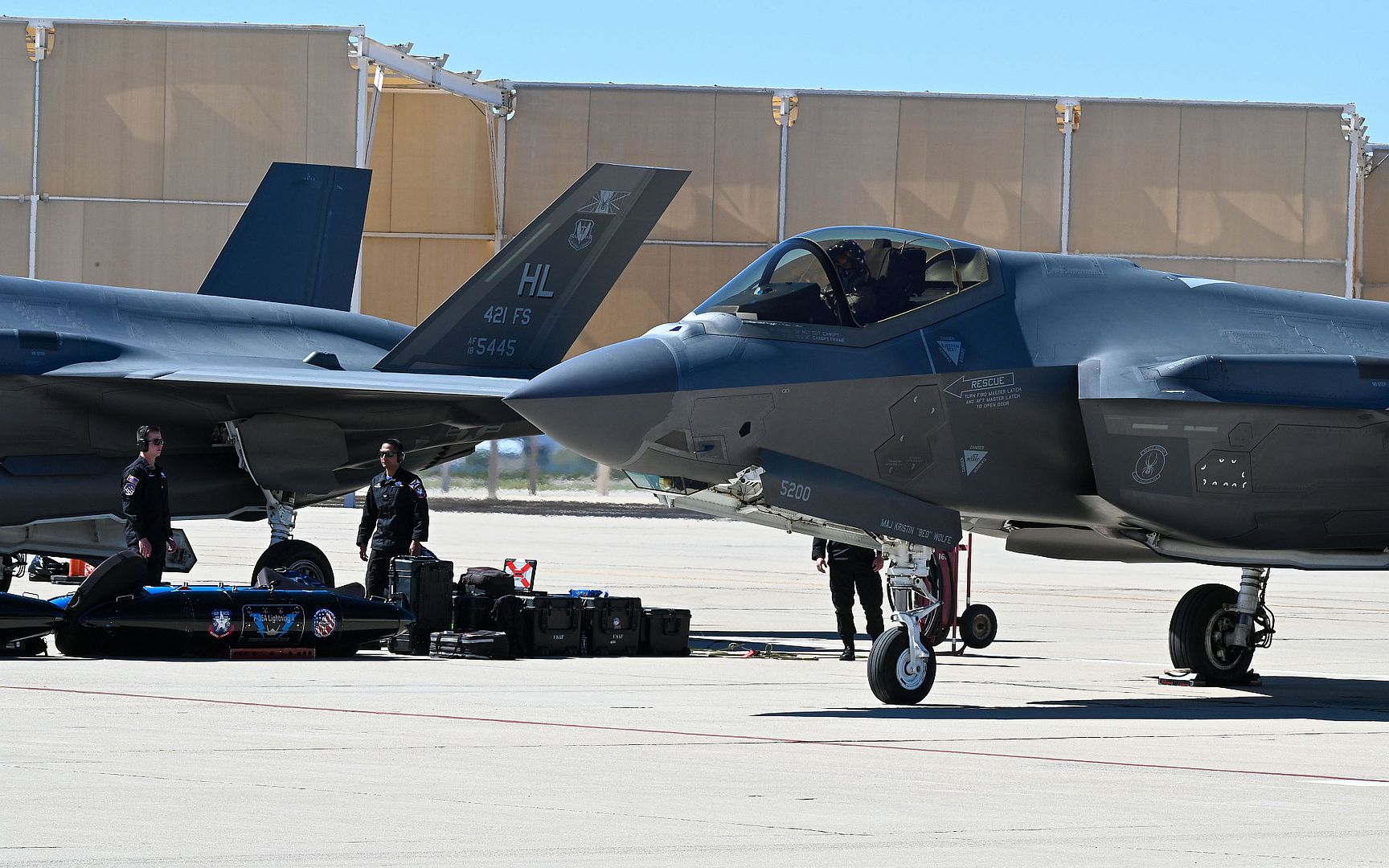
Greg Anders, Air Force Heritage Flight Foundation P-51 Mustang aircraft pilot, prepares to take off during the Heritage Flight Training Course at Davis-Monthan Air Force Base, Ariz., Feb. 29, 2024. During HFTC, aircrew practice ground and flight training to enable civilian pilots of historic military aircraft and U.S. Air Force pilots of current fighter aircraft to fly safely in formations together. (U.S. Air Force photo by Airman 1st Class Evelyn D'Errico and Staff Sgt. Abbey Rieves)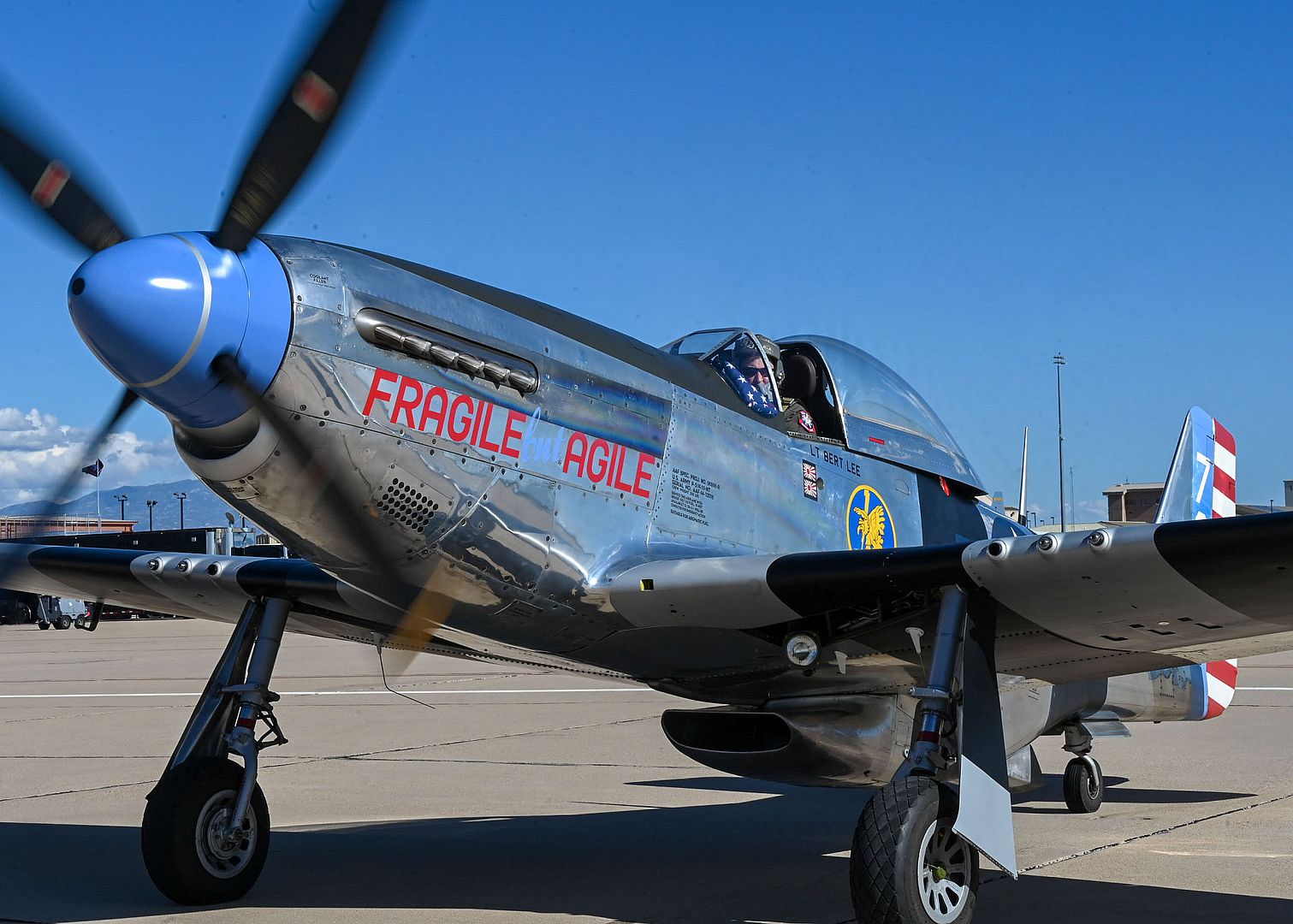
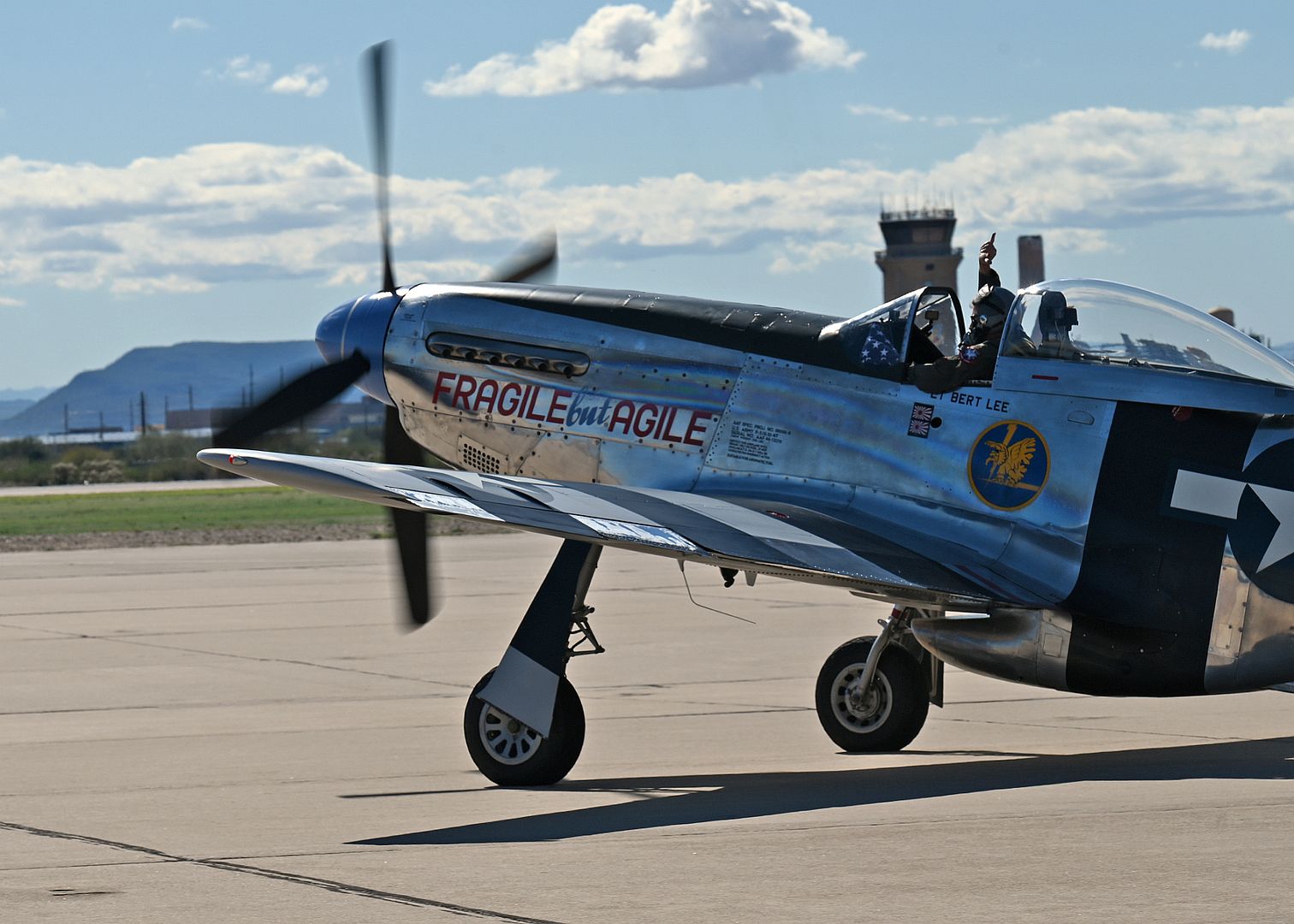
A P-38 Lightning aircraft taxis during the Heritage Flight Training Course at Davis-Monthan Air Force Base, Ariz., Feb. 29, 2024. During HFTC, aircrew practice ground and flight training to enable civilian pilots of historic military aircraft and U.S. Air Force pilots of current fighter aircraft to fly safely in formations together. (U.S. Air Force photo by Airman 1st Class Evelyn D'Errico)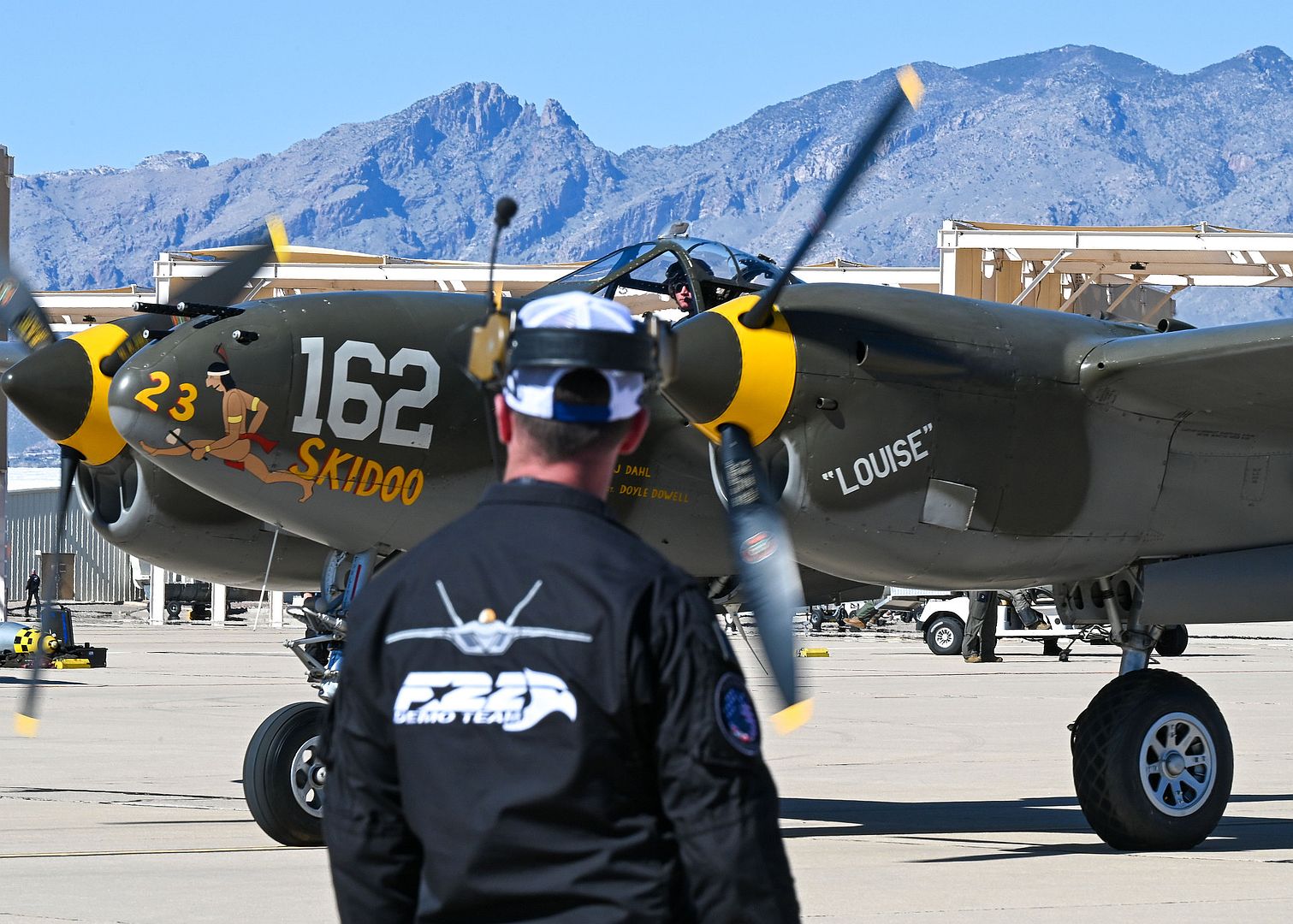
U.S. Air Force Capt. Samuel Larson, F-22 Raptor Demonstration Team commander and pilot, practices his demonstration over Davis-Monthan Air Force Base, Arizona, March 3, 2023. The F-22 Demo Team flies at airshows around the globe, performing air demonstrations that include the power loop,split, tail slide, as well as a high-speed pass and dedication pass. (U.S. Air Force photo by Staff Sgt. Nicholas Ross)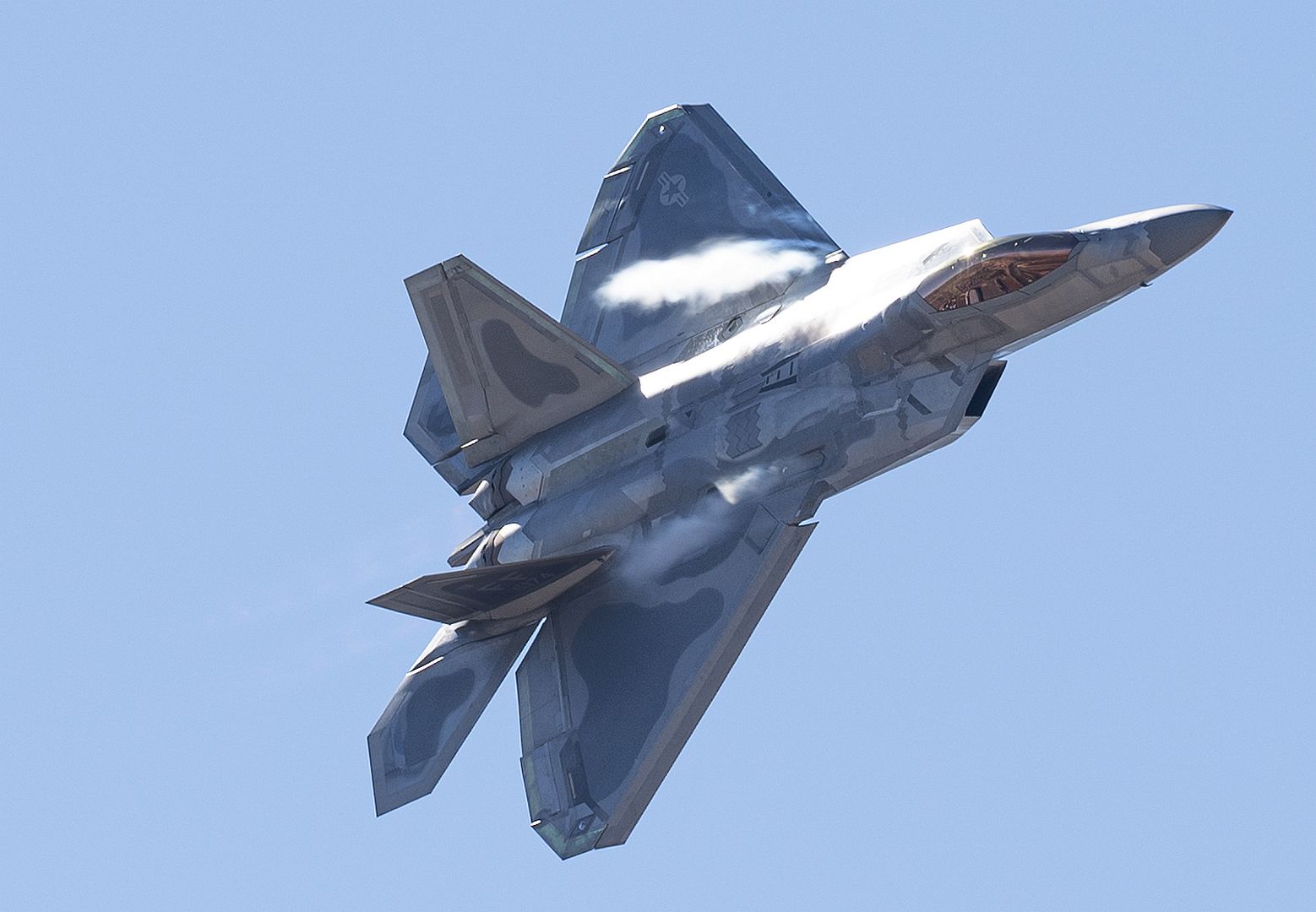
A P-51 Mustang aircraft returns from flying during the Heritage Flight Training Course at Davis-Monthan Air Force Base, Ariz., Feb. 29, 2024. The Air Force Heritage Flight Foundation celebrates U.S. air power history by providing 50-70 annual Heritage Flight demonstrations around the world. (U.S. Air Force photo by Airman 1st Class Jasmyne Bridgers-Matos)
An A-10C Thunderbolt II aircraft taxis on the flightline during the Heritage Flight Training Course at Davis-Monthan Air Force Base, Ariz., March 3, 2024. The A-10 was assigned to the A-10C Thunderbolt II Demonstration Team, which is one of four single-ship demonstration teams within Air Combat Command, who travel across the United States, as well as internationally, to highlight the combat capabilities of the A-10 and the U.S. Air Force. (U.S. Air Force photo by Airman 1st Class Jasmyne Bridgers-Matos)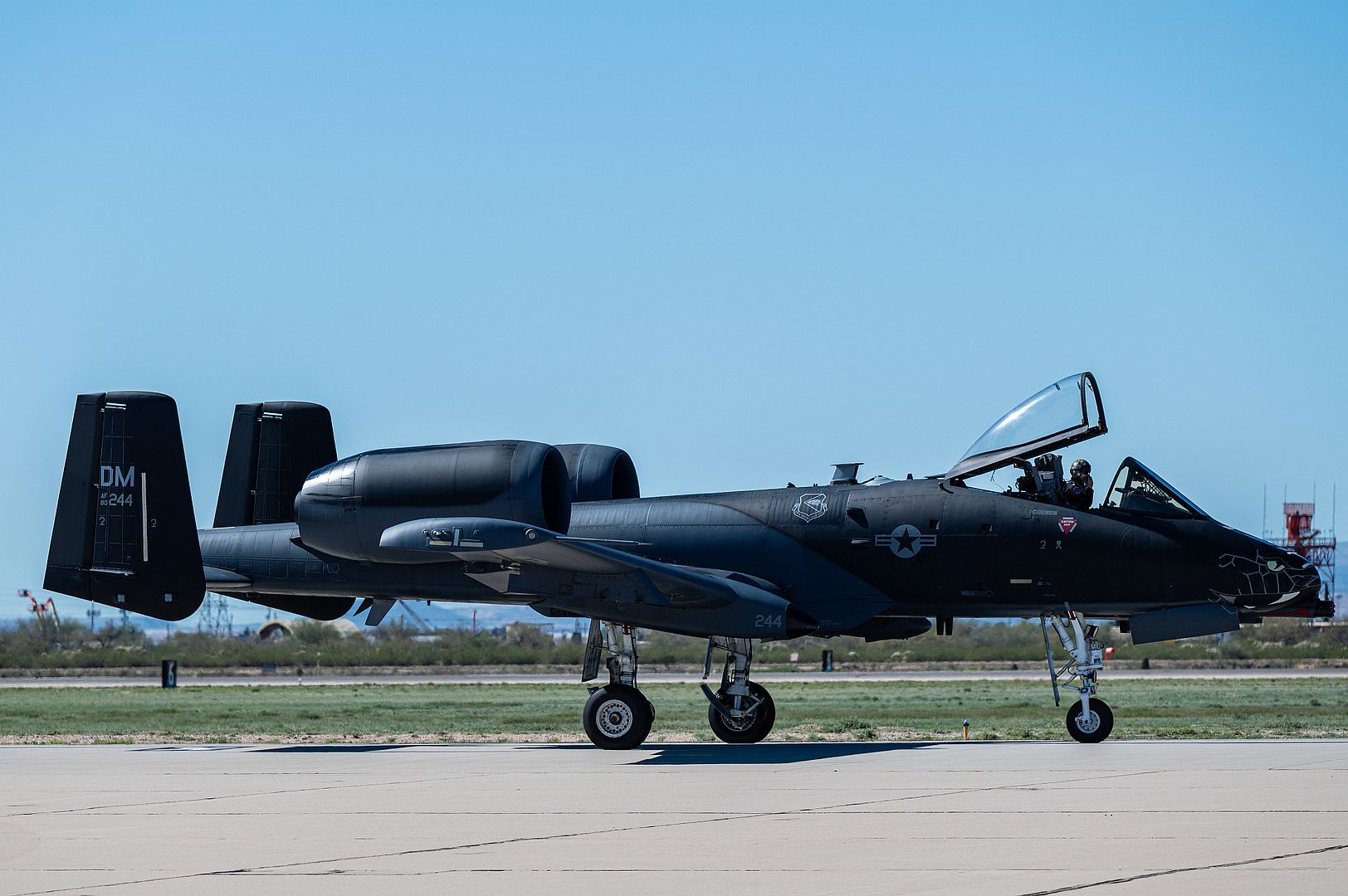
ADDIS ABABA, Ethiopia, March 5, 2024 /PRNewswire/ -- Boeing [NYSE: BA] and Ethiopian Airlines announced today an agreement for the East African airline to purchase eight 777-9 passenger airplanes and the potential for up to 12 additional jets.
Ethiopian Airlines' selection of 777-9 jets positions the carrier as the first 777X customer in Africa and builds on its landmark 2023 order for 11 787 Dreamliner and 20 737 MAX airplanes to modernize and grow its fleet.
"We are pleased to continue setting the trend in African aviation by adopting cutting-edge technologies to enhance our services and customer satisfaction. Improving our operational performance and commitment to environmental sustainability, the 777-9 offers more flexibility, reduced fuel consumption and carbon emissions," said Ethiopian Airlines Group CEO Mr. Mesfin Tasew. "We are grateful to Boeing for their long-standing partnership and support, and we eagerly anticipate flying the 777-9 across the African skies and beyond."
Based on the 777 and with advanced technologies from the 787 Dreamliner family, the 777-9 features new carbon-fiber composite wings and engines that will enable the airplane to achieve 10% better fuel efficiency and operating costs than the competition. The 777-9 will support Ethiopian Airlines' plans to grow and renew its fleet in size, range and passenger and cargo capacity to reach high-demand markets in Africa, Asia, Europe and North America.
"Ethiopian Airlines marks yet another first in our longstanding partnership by selecting the 777-9 to be the flagship of its growing fleet," said Brad McMullen, Boeing senior vice president of Commercial Sales and Marketing. "Building on a relationship that goes back 75 years, we deeply value the unwavering trust and confidence Ethiopian Airlines puts in our airplanes."
Boeing airplanes make up more than half of Ethiopian Airlines' current fleet, including 29 787 Dreamliners, 20 777s, three 767s, 27 Next-Generation 737s and 15 737 MAX jets. Ethiopian Airlines and Boeing continue to explore opportunities to further develop the country's aerospace industry, including support for Ethiopian Airlines' MRO capabilities, industrial development, training capabilities at the Ethiopian Aviation University and STEM education, as well as equipping the Ethiopian Museum of Science with aerospace exhibits.
Boeing's Commercial Market Outlook forecasts Africa's annual air traffic growth at more than 7% through 2042 ─ the third-highest growth rate among global regions and above the global average of approximately 6%. Providing growth opportunities for airlines and offering enhanced features for passengers, with a range of 13,510 km (7,295 nautical miles), the 777-9 enables flights from Addis Ababa to as far as Seattle in the U.S.
About Boeing
As a leading global aerospace company, Boeing develops, manufactures and services commercial airplanes, defense products and space systems for customers in more than 150 countries. As a top U.S. exporter, the company leverages the talents of a global supplier base to advance economic opportunity, sustainability and community impact. Boeing's diverse team is committed to innovating for the future, leading with sustainability, and cultivating a culture based on the company's core values of safety, quality and integrity. Join our team and find your purpose at boeing.com/careers.
About Ethiopian
Ethiopian Airlines Group (Ethiopian) is the fastest-growing airlines brand globally and the continent's largest airline brand. In its seventy-seven years of successful operations, Ethiopian, the fastest growing airline, has become one of the continent's leading carriers, unrivalled in efficiency and operational success. In addition to its main hub in Addis Ababa, Ethiopia, it is also pursuing its multi-hub strategy through a hub in Lomé, Togo with ASKY, in Lilongwe, Malawi with Malawi Airlines and in Lusaka, Zambia with Zambia Airways. Ethiopian commands the lion's share of the African passenger and cargo network operating the youngest and most modern fleet to more than 150 domestic and international passenger and cargo destinations across five continents. Ethiopian's fleet category consists of ultra-modern and environmentally friendly aircraft such as Boeing 737s, 777s, 787s, Airbus A350-900 and Bombardier Dash 8-400 double cabin with an average fleet age of seven years. In fact, Ethiopian is the first airline in Africa to own and operate most of these aircraft. Having achieved its strategic plan (Vision 2025) ahead of time, Ethiopian is currently implementing a 15-year strategic plan called Vision 2035 that will see it become one of the top 20 most competitive and leading aviation groups in the world by providing safe, secured, market driven and customer focused Passenger and Cargo Transport and Logistics, Aviation Training, Airport Management and Ground Services, MRO and Aerospace Manufacturing and Travel and Tourism Services. As a multi-award-winning airline, Ethiopian has been the champion in various coveted awards including Skytrax's 'Best Airline in Africa Award' for six consecutive years among others. The airline has been a Star Alliance member since 2011 and has been registering more than threefold growth in the past 10 years. For more at: www.ethiopianairlines.com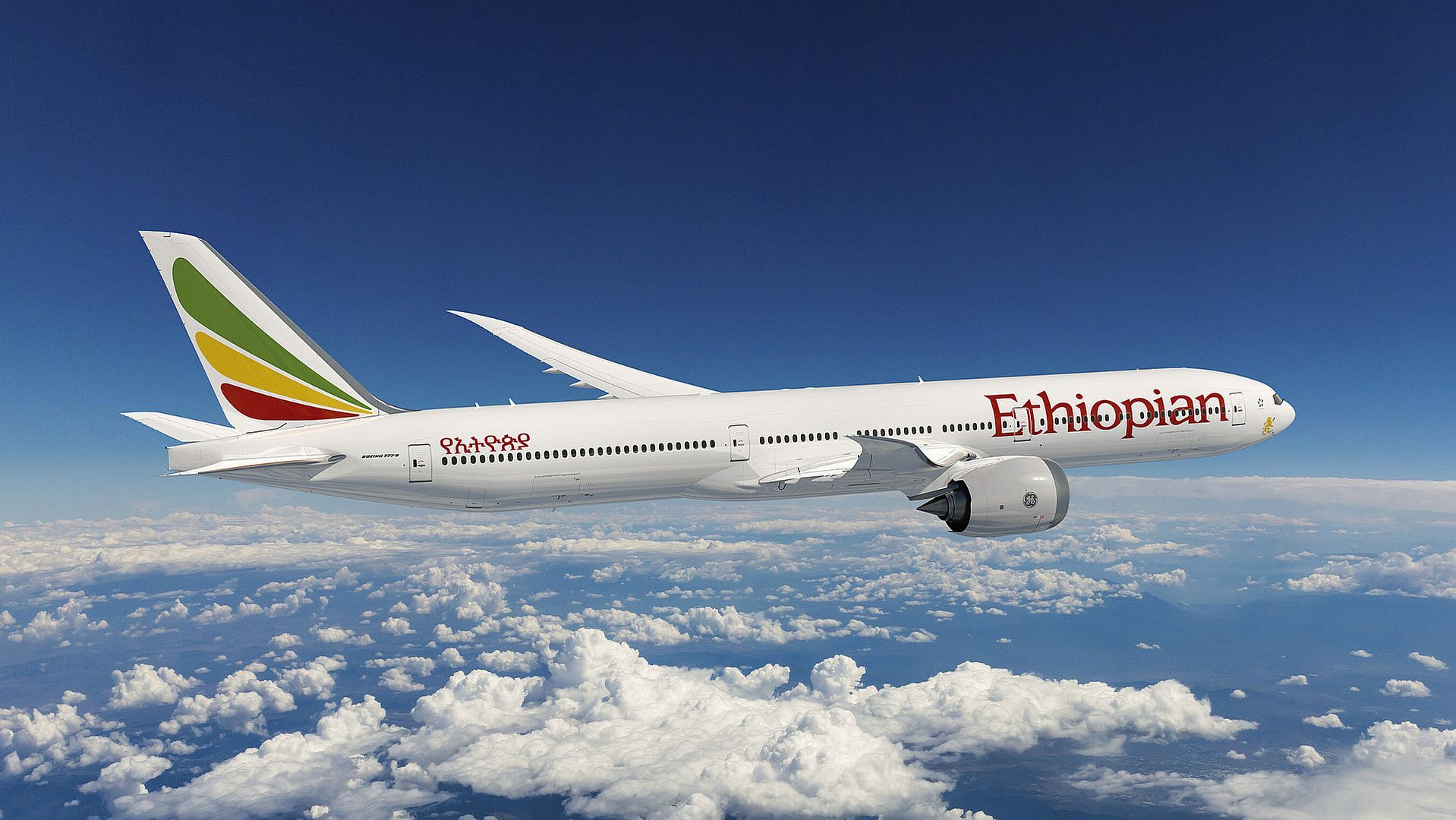
Vero Beach, FL, March 4th, 2024 – Piper Aircraft, Inc. announced today the type certification of its new flagship aircraft, the Piper M700 FURY, by the U.S. Federal Aviation Administration, achieved on February 29, 2024. This certification is a significant milestone for Piper Aircraft, coming quickly after the new aircraft’s announcement on February 6, 2024. Customer deliveries will begin immediately.
With a maximum cruise speed of 301 knots and a maximum range of 1,424 nm, the M700 FURY is the fastest single engine aircraft in Piper’s 87+ year history. This cabin-class turboprop aircraft is equipped with Pratt & Whitney’s PT6A-52 engine generating 700 shaft horsepower and the latest version of Garmin’s G3000 cockpit, including Garmin’s Emergency Autoland as part of Piper’s HALO safety system.
Key M700 FURY performance highlights include:
Take-off Performance – TOFL distance over a 50 ft. obstacle at SL, STD Day MGTOW is a class-leading 1,994 ft., representing a 641 ft., 24 percent improvement when compared to the M600/SLS that it replaces. That TOFL performance is also 1,198 ft. (38 percent) shorter than a competing single-engine jet.
Initial Climb – after a MGTOW departure, the M700 FURY enjoys a class-leading 2,048 fpm climb rate, 32 percent better than the M600/SLS.
Climb to Altitude – settled into the climb, the M700 FURY reaches a comfortable FL250 in 13.9 minutes (34 percent quicker than the M600/SLS) after covering a short 34-mile distance (35 percent less distance than prior) while only burning 97 lbs. of fuel (25 percent less fuel than the M600/SLS and nearly 50 percent less fuel than a single-engine jet competitor).
Cruise – 301-knot max cruise speed.
Landing Performance – Landing over a 50 ft. obstacle, the M700 FURY continues its class-leading performance, achieving a 26 percent reduction versus the M600/SLS and within half the ground roll distance of some competitors.
“We are thrilled to announce the U.S. certification of the Piper M700 FURY by the FAA just a month after its announcement,” said John Calcagno, President & CEO of Piper Aircraft. “And there’s more to come. The FURY is just the first step in a new generation of our M-Class product line, so watch this space, as Piper’s M-Class will be expanding both above and below what we currently offer today.”
The M700 FURY international validations for Canada (TCCA), Europe (EASA), the UK (CAA) and Brazil (ANAC) are on track to be completed in the second half of 2024, with customer deliveries in those regions before the end of the year.
For more information about the Piper M700 FURY and other aircraft in the Piper Aircraft lineup, please visit www.piper.com.
-
1 year agoWed Mar 06 2024, 08:52pmDuggy
 Main AdminU.S. Marines with Marine Light Attack Helicopter Squadron (HMLA) 369, Marine Aircraft Group 36, 1st Marine Aircraft Wing, prepare an AH-1Z Viper helicopter to take off during Warrior Shield 24 at Kunsan Air Base, South Korea, March 4, 2024. Warrior Shield 24 is an annual joint, combined exercise in the Republic of Korea that strengthens the combined defensive capabilities of ROK-U.S. Forces. This routine, regularly scheduled, field training exercise provides the ROK-U.S. Marines the opportunity to rehearse combined operations, exchange knowledge, and demonstrate the strength and capability of the ROK-U.S. Alliance. (U.S. Marine Corps photo by Lance Cpl. Sav Ford)
Main AdminU.S. Marines with Marine Light Attack Helicopter Squadron (HMLA) 369, Marine Aircraft Group 36, 1st Marine Aircraft Wing, prepare an AH-1Z Viper helicopter to take off during Warrior Shield 24 at Kunsan Air Base, South Korea, March 4, 2024. Warrior Shield 24 is an annual joint, combined exercise in the Republic of Korea that strengthens the combined defensive capabilities of ROK-U.S. Forces. This routine, regularly scheduled, field training exercise provides the ROK-U.S. Marines the opportunity to rehearse combined operations, exchange knowledge, and demonstrate the strength and capability of the ROK-U.S. Alliance. (U.S. Marine Corps photo by Lance Cpl. Sav Ford)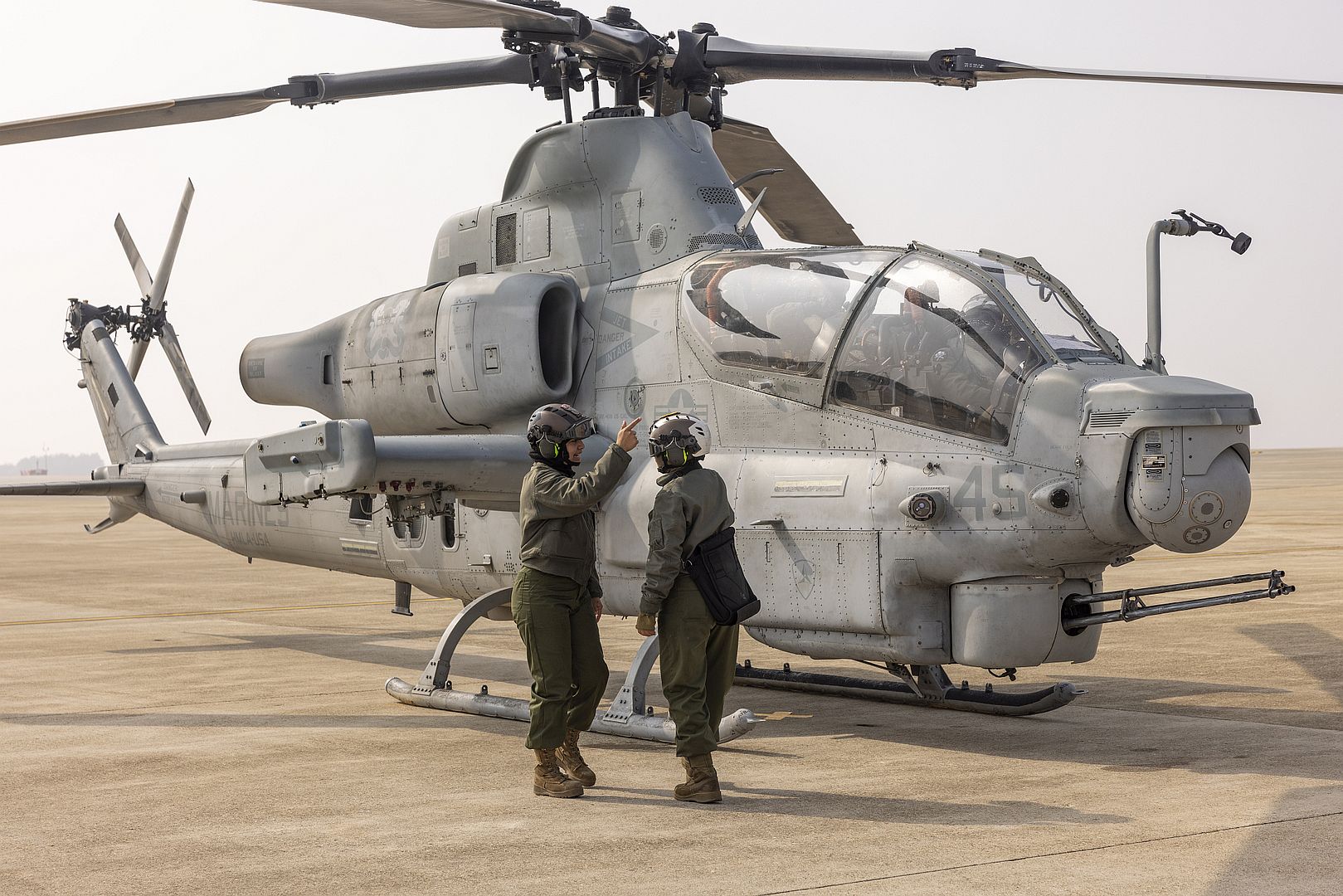
U.S. Marine Corps Lance Cpl. Madison Vela, a helicopter mechanic with Marine Light Attack Helicopter Squadron (HMLA) 369, Marine Aircraft Group 36, 1st Marine Aircraft Wing, performs pre-flight checks on an AH-1Z Viper helicopter during Warrior Shield 24 at Kunsan Air Base, South Korea, March 4, 2024. Warrior Shield 24 is an annual joint, combined exercise in the Republic of Korea that strengthens the combined defensive capabilities of ROK-U.S. Forces. This routine, regularly scheduled, field training exercise provides the ROK-U.S. Marines the opportunity to rehearse combined operations, exchange knowledge, and demonstrate the strength and capability of the ROK-U.S. Alliance. Vela is a native of Texas. (U.S. Marine Corps photo by Lance Cpl. Sav Ford)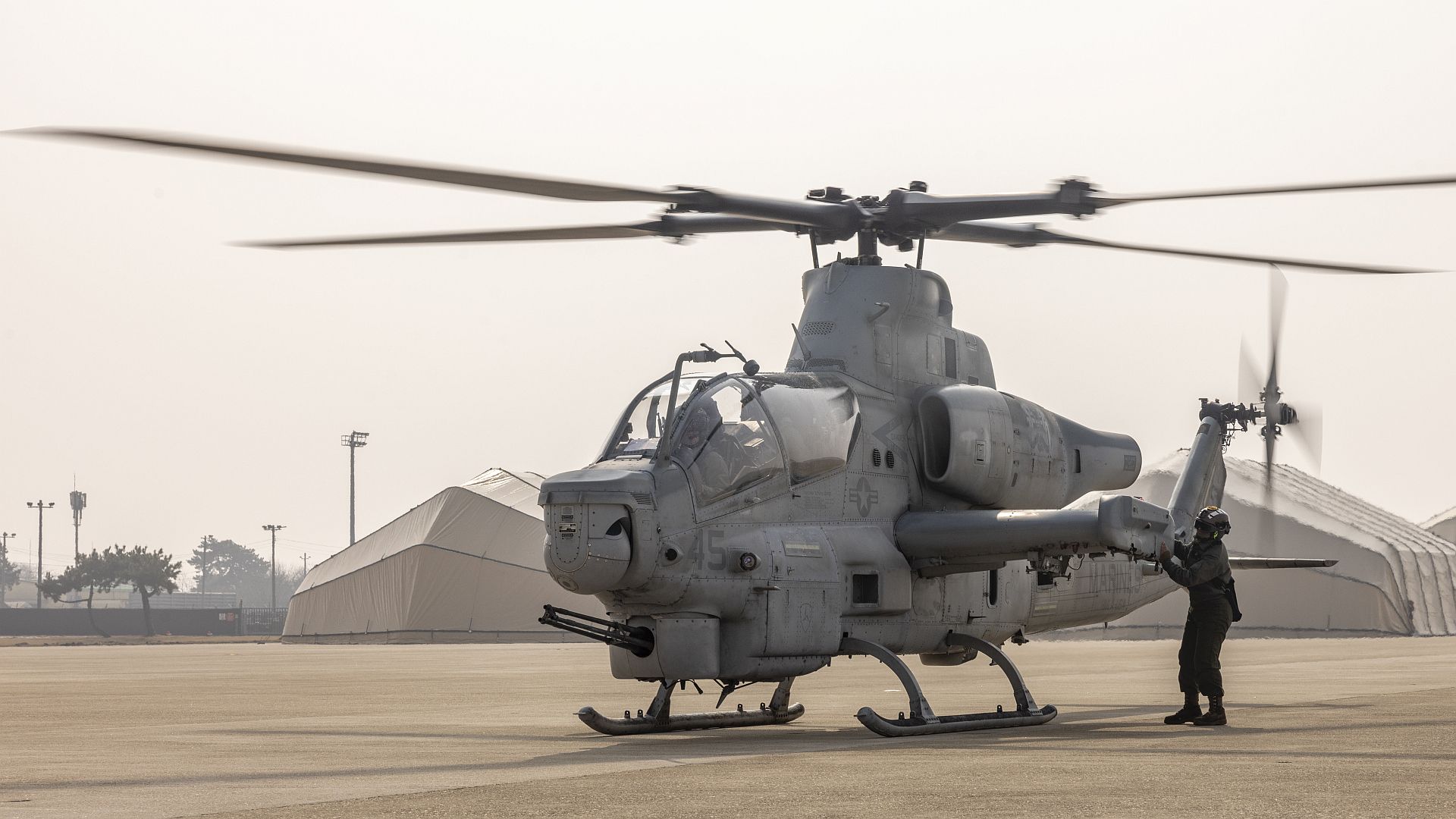
A Republic of Singapore Air Force F-15SG and U.S. Air Force F-35 Lightning II participate in bilateral training over Singapore, March 4, 2024. The bilateral training encompassed the USAF F-35 and RSAF F-15 and F-16 aircraft flying together to improve interoperability and cohesion amongst the partner services. Partnership activities enhance trust and increase global stability, security and prosperity while upholding international law and promoting shared values. (Republic of Singapore Air Force photo by CPL Timothy Khor)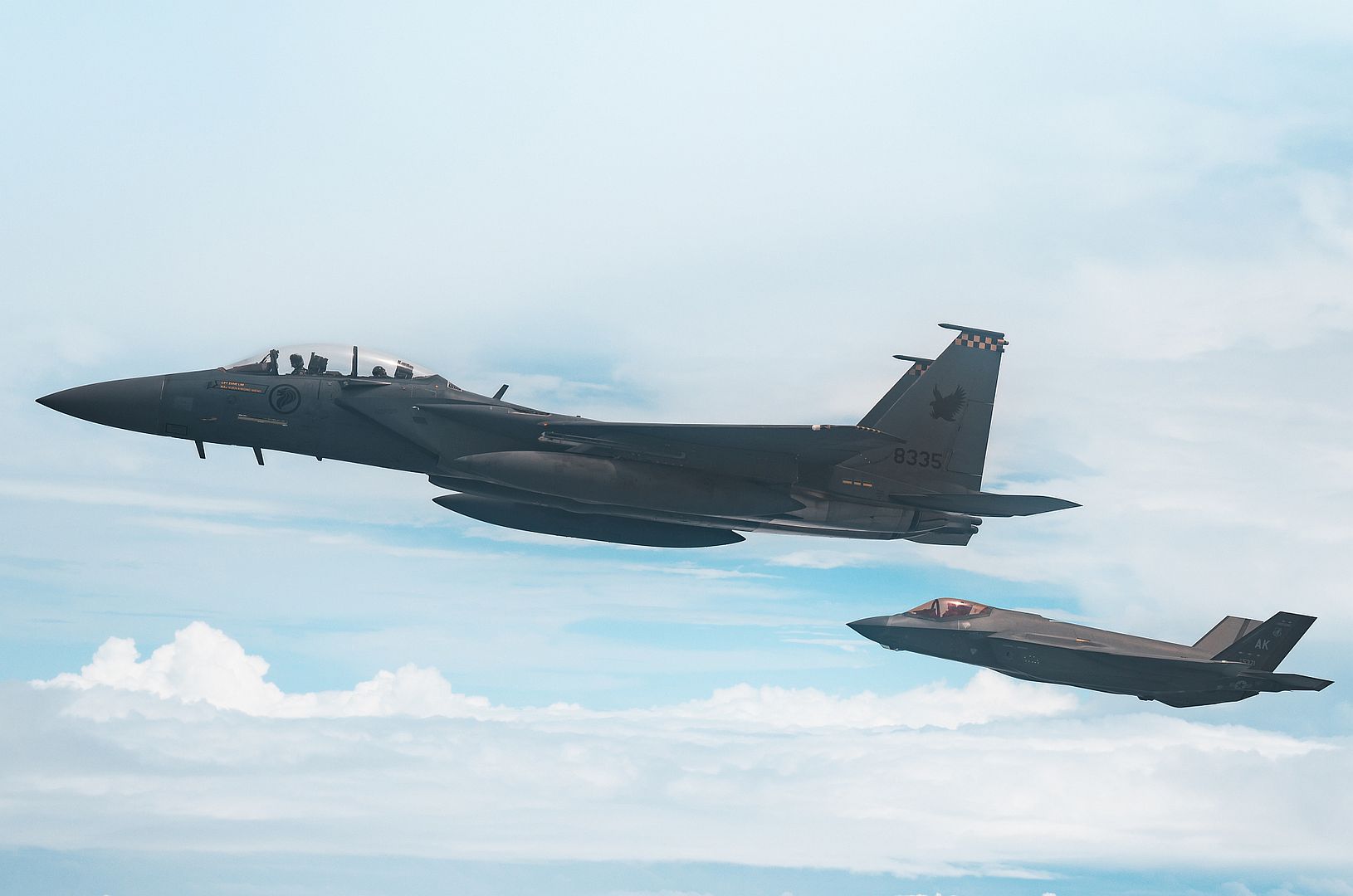
A U.S. Air Force F-35 Lightning II assigned to the 356th Fighter Squadron, Eielson Air Force Base Alaska, taxis to take off and join Republic of Singapore Air ForceF-16 Fighting Falcons during bilateral training at Paya Lebar Air Base, Singapore, March 5, 2024. The bilateral training encompassed the USAF F-35 and RSAF F-15 and F-16 aircraft flying together to improve interoperability and cohesion amongst the partner services. Partnership activities enhance trust and increase global stability, security and prosperity while upholding international law and promoting shared values. (U.S. Air Force photo by Tech. Sgt. Eric Summers Jr.)
A Kenya Air Force pilot conducts a capabilities fly-by in an F-5E during Justified Accord 2024 (JA24) at the Counter Insurgency Terrorism and Stability Operations Training Centre, Nanyuki, Kenya, March 5, 2024. JA24 is U.S. Africa Command's largest exercise in East Africa, running from Feb. 26 - March 7. Led by U.S. Army Southern European Task Force, Africa (SETAF-AF), and hosted in Kenya, this year's exercise will incorporate personnel and units from 23 nations. This multinational exercise builds readiness for the U.S. joint force, prepares regional partners for UN and AU mandated missions, and increases multinational interoperability in support of humanitarian assistance, disaster response and crisis response. (U.S. Department of Defense photo by Staff Sgt. Carter Acton)_at_the_Counter_Insurgency_Terrorism_and_Stability_Operations_Training_Centre_Nanyuki_Kenya_March_5_2024..jpg?width=1920&height=1080&fit=bounds)
An A-10 Thunderbolt II attached to the 442nd Fighter Wing at Whiteman Air Force Base, Mo, prepares to receive fuel from a KC-135 Stratotanker, March 3, 2024. The KC-135 is attached to the Air National Guard’s 185th Air Refueling Wing at Sioux City, Iowa. (U.S. Air National Guard photo by 2nd Lt. Daniel Ter Haar)
Two KC-135R Stratotankers participate in an elephant walk following the culmination of a base-wide readiness exercise at Grissom Air Reserve Base, March 3, 2024. The multi-day readiness event was designed to ensure that the Hoosier Wing is prepared to project airpower, anytime, anywhere. (U.S. Air Force photo by Airman 1st Class Elise Faurote).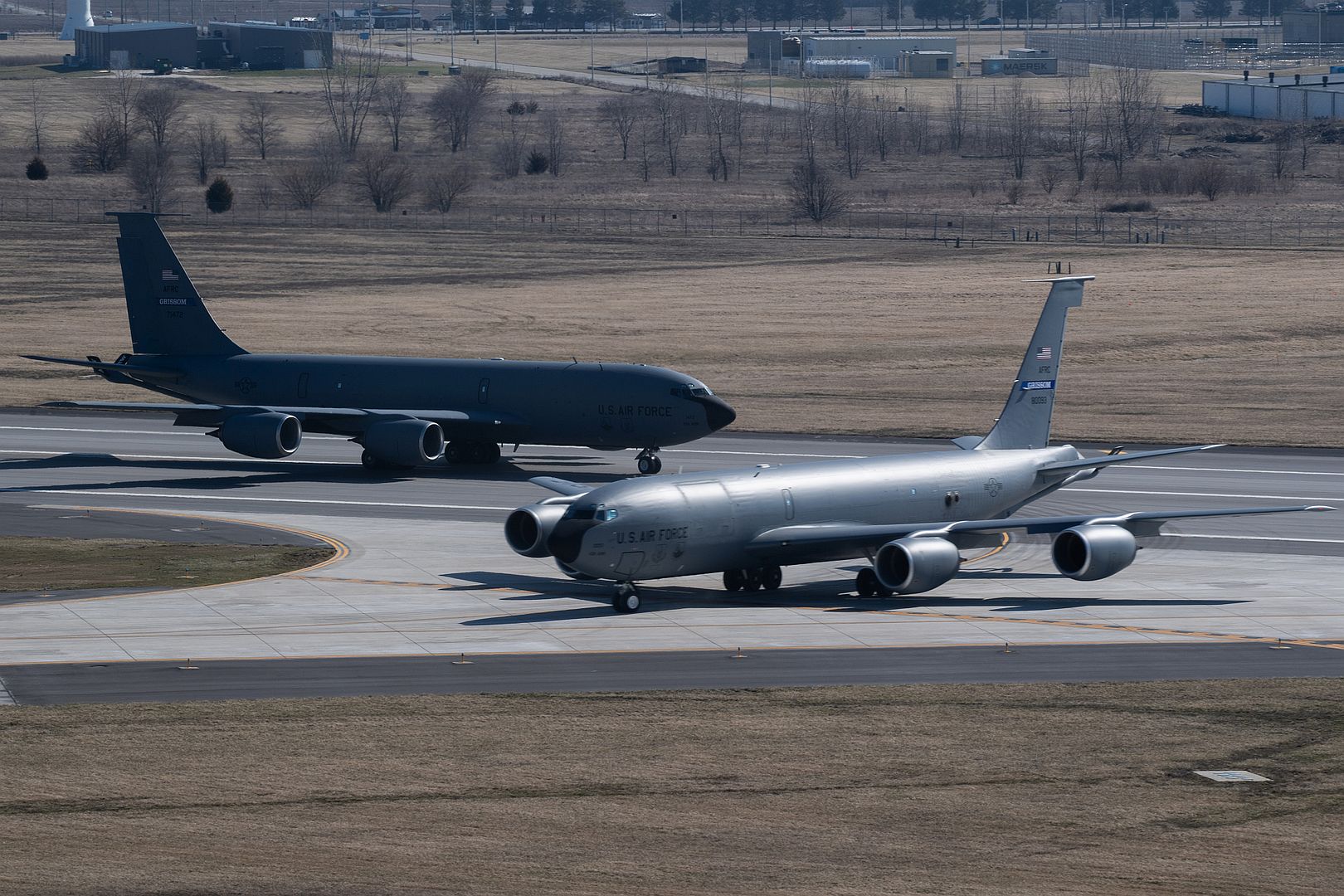
Doha, 05 March 2024
On the occasion of the Doha International Maritime Defence Exhibition and Conference (DIMDEX) 2024, the Qatar Emiri Air Force (QEAF) and Leonardo celebrated the 2,500 flight hours of the NH90 helicopter fleet. This milestone has been made possible through strategic cooperation, which has been aided by Leonardo’s direct involvement in providing training and supporting maintenance operations.
With an average serviceability above 80%, the Qatar Emiri Air Force is one of the NH90 end users that operates both the TTH (Tactical Troop Transport) and the NFH (Naval Frigate Helicopter) versions of the helicopter for land and naval operations. The aircraft’s main missions include troop transport and utility, search and rescue, and surveillance.
Since the first delivery in 2018, as of today the QEAF has received 18 helicopters, out of the total of 28 helicopters ordered, nine TTH helicopters built at the assembly line of Marignane (Airbus) and nine NFH helicopters built at the final assembly line of Venice (Leonardo).
Leonardo is the prime contractor for the overall programme and is also responsible for the final assembly and delivery of the NH90 NFH helicopters from its production facility in Tessera, Venice. Leonardo also provides on-site support to the Air Force, including engineers, skilled technicians, logistics specialists, and instructors.
The company has also built the Training Centre located at Doha Air Base, which includes two Full Flight Simulators (FFS) in naval and land versions, developed in collaboration with CAE, as well a variety of other systems covering the flight and the mission training requirements.
Since entry to service in June 2023 close to 1,700 hours have been flown on the Full Flight Simulators in cooperation with the military instructors of the Italian Armed Forces.
The NH90 is equipped with the latest generation systems. It achieves the highest possible performance in all military missions whether at sea or on land. The NH90 has been designed and is proven to operate in the most demanding conditions, including sand, dust, and ice. The NH90 has a multi-role capability, enhancing its operational effectiveness in all military environments sharing a common platform designed for fleet rationalization and interoperability.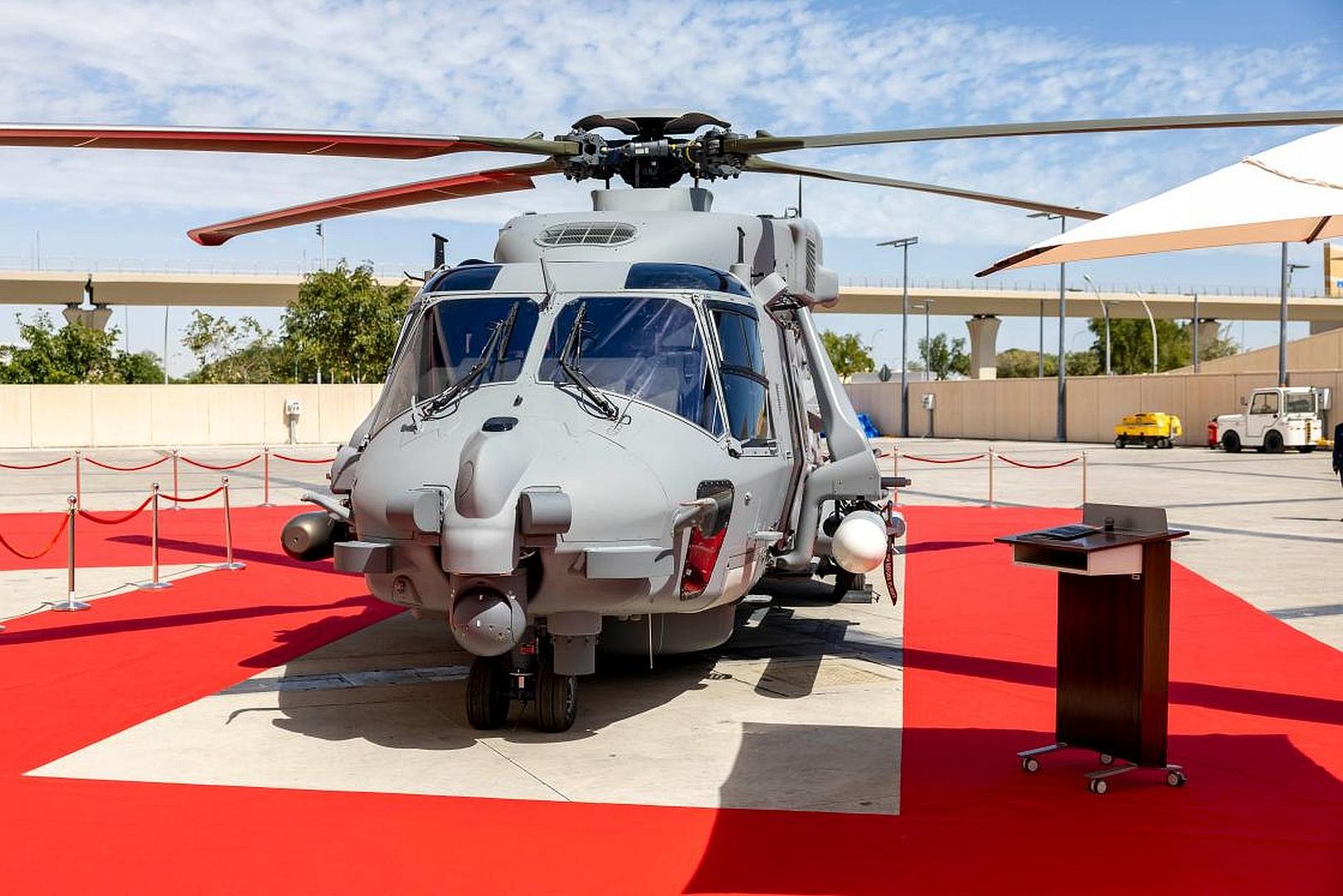
F-35Bs from RAF Marham are currently flying from HMS Prince of Wales as part of the UK Carrier Strike Group for the largest NATO exercise in decades.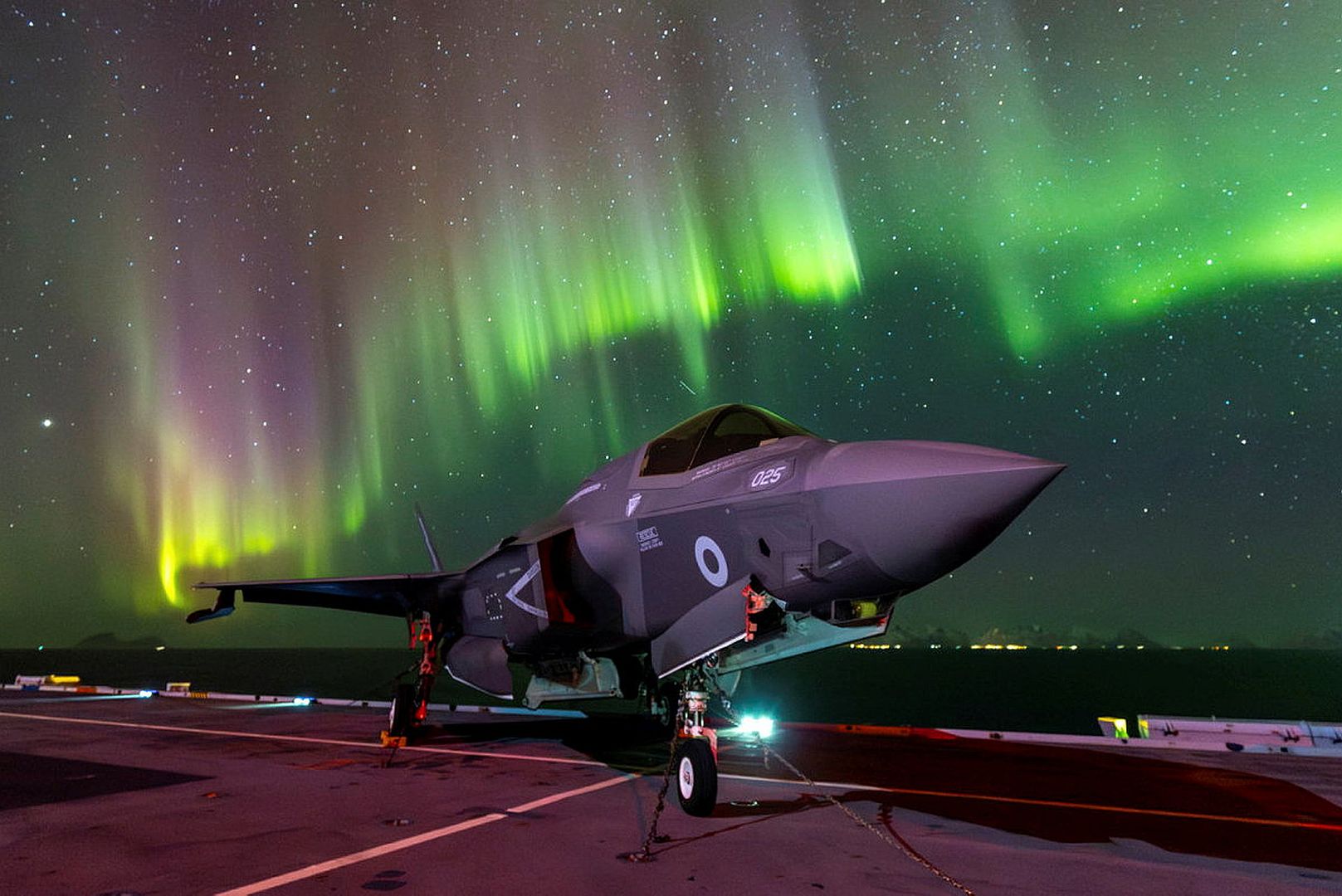
Over the coming months, 90,000 military personnel from across the Alliance will exercise together to refine NATO’s defence plans.
(Photos courtesy of the RAF/RN)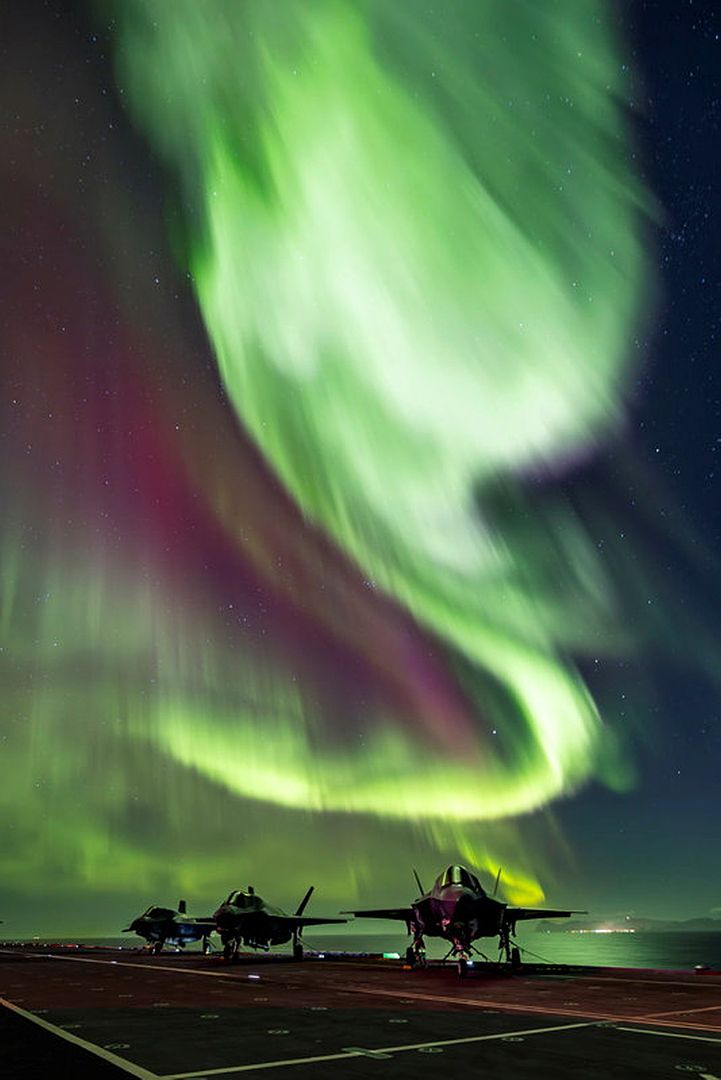
-
 Main AdminSailors prepare to hook cargo to an Italian Navy helicopter, attached to Italian Landing Assault Helicopter Ship Giuseppe Garibaldi, on the flight deck of the Whidbey Island-class dock landing ship USS Gunston Hall (LSD 44), during Steadfast Defender 24, March 6, 2024. Steadfast Defender 2024, NATO’s largest exercise in decades, will demonstrate NATO’s ability to deploy forces rapidly from across the Alliance to reinforce the defense of Europe. (U.S. Navy photo by Mass Communication Specialist 1st Class Danielle Serocki)
Main AdminSailors prepare to hook cargo to an Italian Navy helicopter, attached to Italian Landing Assault Helicopter Ship Giuseppe Garibaldi, on the flight deck of the Whidbey Island-class dock landing ship USS Gunston Hall (LSD 44), during Steadfast Defender 24, March 6, 2024. Steadfast Defender 2024, NATO’s largest exercise in decades, will demonstrate NATO’s ability to deploy forces rapidly from across the Alliance to reinforce the defense of Europe. (U.S. Navy photo by Mass Communication Specialist 1st Class Danielle Serocki)
A U.S. Air Force B-52H Stratofortress assigned to the 69th Bomb Squadron deploys its drogue parachute after landing at Minot Air Force Base, North Dakota, March 1, 2024. The aircraft was returning from a deployment to Anderson AFB, Guam, as part of a Bomber Task Force mission which enhanced joint security strategies with allies and partners, demonstrating the U.S. capability to command, control and conduct bomber missions across the globe. (U.S. Air Force photo by Airman 1st Class Kyle Wilson)
An F-22 Raptor aircraft and a P-51 Mustang aircraft taxi during the Heritage Flight Training Course at Davis-Monthan Air Force Base, Ariz., March 1, 2024. The aircrafts performed solo aerial maneuvers and flew in formations for an audience and the commander of Air Combat Command. (U.S. Air Force photo by Airman 1st Class Robert Allen Cooke III)
A P-51 Mustang aircraft taxis during the Heritage Flight Training Course at Davis-Monthan Air Force base, March 1, 2024. The P-51 was designed to use the Allison V-1710 engine without an export sensitive turbo supercharger. (U.S. Air Force photo by Airman 1st Class Robert Allen Cooke III)
An F-16 Fighting Falcon assigned to the 8th Fighter Wing taxis to park after flying a training sortie during Joint Exercise Cobra Gold 24 at Korat Royal Thai Air Force Base, Thailand, 29 Feb. 2024. Aircraft 89-2060’s tail flash is painted to pay homage to the 8th Tactical Fighter Wing and then Col. Robin Olds, who flew one of the most successful operations of the Vietnam War from Ubon Air Base in 1967. The familiar paint has returned to Thailand to lead 80th Fighter Squadron participation in Cobra Gold 24, the largest joint exercise in mainland Asia. (U.S. Air Force photo by Senior Airman Karla Parra)
Members from the 80th Fighter Generation Squadron provide maintenance support upon the arrival of an F-16 Fighting Falcon assigned to the 8th Fighter Wing during its participation in Joint Exercise Cobra Gold 24 at Korat Royal Thai Air Force Base, Thailand, March 4, 2024. Aircraft 89-2060’s tail flash is painted to pay homage to the 8th Tactical Fighter Wing and then Col. Robin Olds, who flew one of the most successful operations of the Vietnam War from Ubon Air Base in 1967. The 8th FW has maintained participation in Cobra Gold throughout the exercises’ 43-year history, demonstrating the commitment to ensuring a free and open Indo-Pacifc region. (U.S. Air Force photo by Senior Airman Karla Parra)
The Multinational Multirole Tanker & Transport Unit is a NATO aircraft base for tanker and transport aircraft. The fleet now consists of 7 MRTT-planes, of which 4 are stationed at Air Base Eindhoven. This will grow to 10 tankers by 2026.


The Czech Republic is one of the partners that uses the fleet. Last week, a new type of fighter aircraft was refueled in the air for the first time. This mission marks the end of an intensive certification process. The MMU hereby adds the aircraft of the Czech partner to their portfolio.
(Photos courtesy of the Koninklijke Luchtmacht )


-
 Main AdminA Royal Norwegian Air Force F-35A Lightning II jet pilot with 332 Squadron, 132 Air Wing, takes off during a media day during Exercise Nordic Response 24 in Evenes, Norway, March 7, 2024. Exercise Nordic Response 24 is designed to enhance military capabilities and allied cooperation in high-intensity warfighting scenarios under challenging arctic conditions, while providing U.S. Marines unique opportunities to train alongside NATO allies and partners. (U.S. Marine Corps photo by Lance Cpl. Orlanys Diaz Figueroa)
Main AdminA Royal Norwegian Air Force F-35A Lightning II jet pilot with 332 Squadron, 132 Air Wing, takes off during a media day during Exercise Nordic Response 24 in Evenes, Norway, March 7, 2024. Exercise Nordic Response 24 is designed to enhance military capabilities and allied cooperation in high-intensity warfighting scenarios under challenging arctic conditions, while providing U.S. Marines unique opportunities to train alongside NATO allies and partners. (U.S. Marine Corps photo by Lance Cpl. Orlanys Diaz Figueroa)
U.S. Marines with Marine Fighter Attack Squadron (VMFA) 542, 2nd Marine Aircraft Wing, land during a media day after routine flight operations during Exercise Nordic Response 24 in Evenes, Norway, March 7, 2024. Exercise Nordic Response 24 is designed to enhance military capabilities and allied cooperation in high-intensity warfighting scenarios under challenging arctic conditions, while providing U.S. Marines unique opportunities to train alongside NATO allies and partners. (U.S. Marine Corps photo by Warrant Officer Akeel Austin)_542_2nd_Marine_Aircraft_Wing_land_during_a_media_day_after_routine_flight_operations_during_Exercise_Nordic_Response_24_in_Evenes_Norway_March_7_2024..jpg?width=1920&height=1080&fit=bounds)
U.S. Air Force KC-135 on the ramp at the Iowa Air National Guard’s 185th Air Refueling Wing in Sioux City, Iowa on March 7, 2024. U.S. Air National Guard photo Senior Master Sgt. Vincent De Groot
Post a reply
- Go to Previous topic
- Go to Next topic
- Go to Welcome
- Go to Introduce Yourself
- Go to General Discussion
- Go to Screenshots, Images and Videos
- Go to Off topic
- Go to Works in Progress
- Go to Skinning Tips / Tutorials
- Go to Skin Requests
- Go to IJAAF Library
- Go to Luftwaffe Library
- Go to RAF Library
- Go to USAAF / USN Library
- Go to Misc Library
- Go to The Ops Room
- Go to Made in Germany
- Go to Campaigns and Missions
- Go to Works in Progress
- Go to Juri's Air-Raid Shelter
- Go to Campaigns and Missions
- Go to Works in Progress
- Go to Skinpacks
- Go to External Projects Discussion
- Go to Books & Resources
